journalists
Lewis Lapham
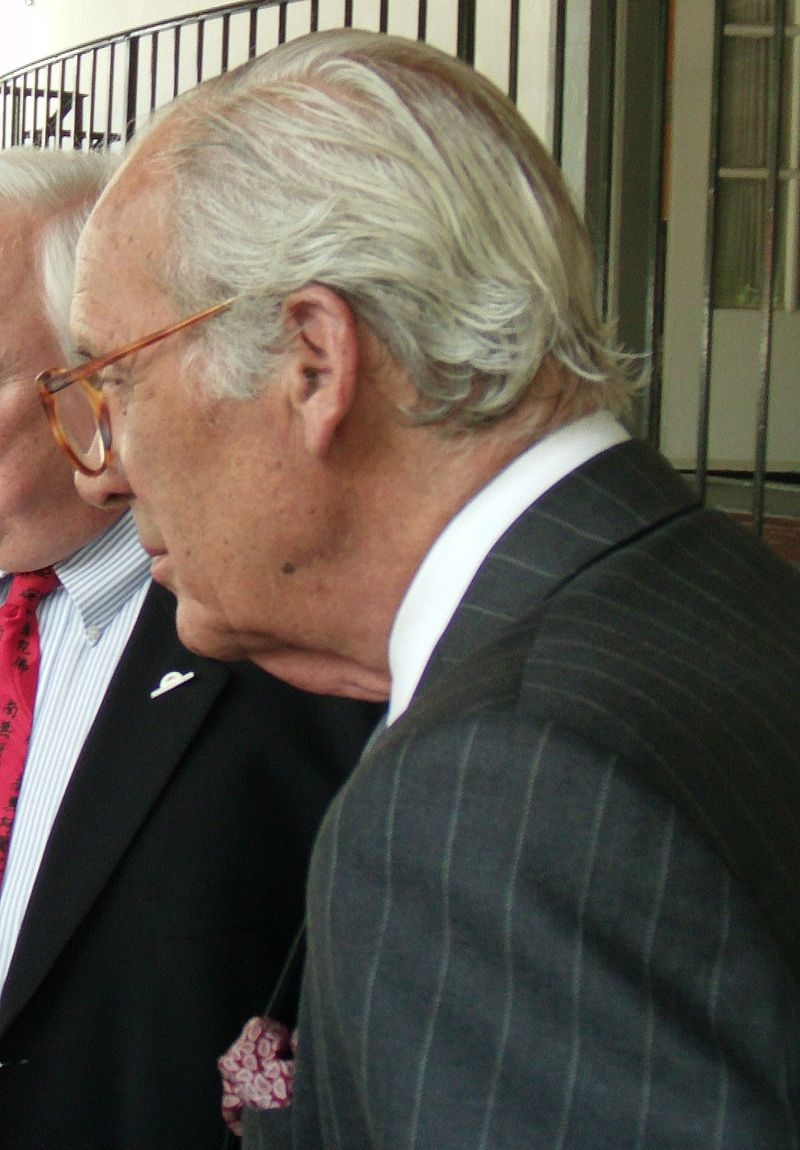
On this date in 1935, Lewis Henry Lapham was born in San Francisco. He earned his bachelor’s degree in history from Yale University in 1956 and attended Cambridge University (1956–57). After graduation he worked as a reporter for the San Francisco Examiner (1957-60) and at age 25 became the U.N. correspondent for the New York Herald Tribune (1960-62). He later became managing editor of the prominent literary journal Harper’s Magazine (1971-75) and was soon appointed its editor (1976-2006).
He was a prolific journalist who wrote articles for many publications, including The New York Times and The Wall Street Journal. In 2007, Lapham founded and became editor of Lapham’s Quarterly, a history magazine. His many books included Waiting for the Barbarians (1998) and Gag Rule: On the Suppression of Dissent and the Stifling of Democracy (2005).
Lapham was also the host of the television show “Bookmark” (1988-91). He received the 1994 and 1995 National Magazine Awards for his journalistic contributions to Harper’s. In 2007, Lapham was included in the American Society of Magazine Editors’ Hall of Fame. He married Joan Brooke Reaves in 1972 and they had three children: Anthony, Elizabeth and Winston. Andrew married the daughter of former Canadian Prime Minister Brian Mulroney.
“As an unbaptized child raised in a family unaffiliated with the teachings of a church, I missed the explanation as to why the stories about Moses and Jesus were to be taken as true while those about Apollo and Rumpelstiltskin were not,” Lapham wrote of his lifelong nonbelief in “Mandates of Heaven,” the introduction to the Winter 2010 issue of Laphams Quarterly.
He continued: “[French philosopher Michel] Onfray observes that ‘a fiction does not die, an illusion never passes away,’ situating Yahwey, together with Ulysses, Allah, Lancelot of the Lake, and Gitche Manitou, among the immortals sustained on the life-support systems of poetry and the high approval ratings awarded to magicians pulling rabbits out of hats.”
He expressed his disdain for the intersection of church and state in America, saying, “The dominant trait in the national character is the longing for transcendence and the belief in what isn’t there — the promise of the sweet hereafter that sells subprime mortgages in Florida and corporate skyboxes in heaven.” He died in Rome at age 89. (D. 2024)
PHOTO: By Terry Ballard under CC 2.0.
"God is the greatest of man's inventions, and we are an inventive people, shaping the tools that in turn shape us, and we have at hand the technology to tell a new story congruent with the picture of the earth as seen from space instead of the one drawn on the maps available to the prophets wandering the roads of the early Roman Empire."
— Lewis Lapham, Lapham's Quarterly (Winter 2010)
Linda Greenhouse
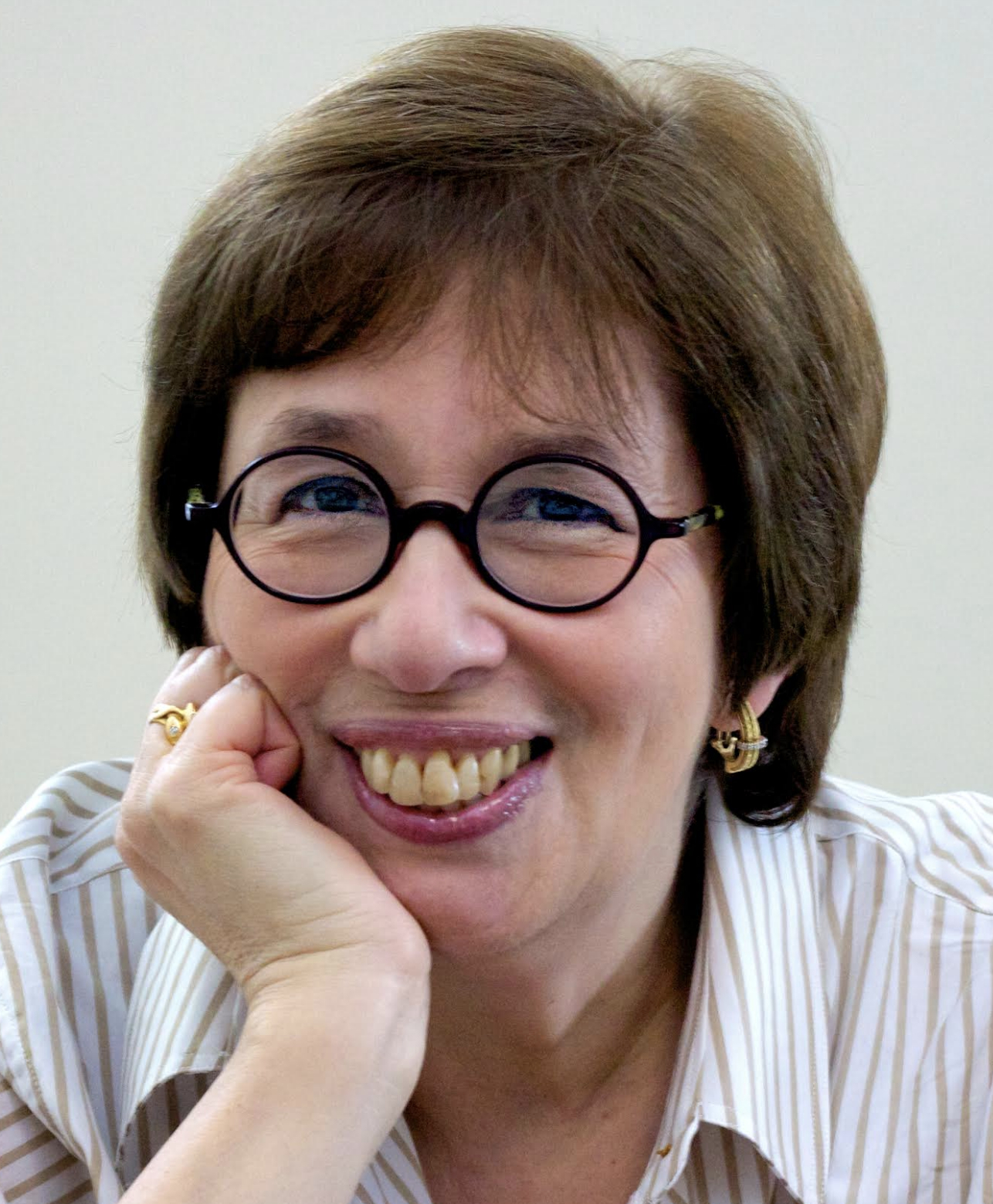
On this date in 1947, Pulitzer Prize-winning journalist Linda Greenhouse, a staunch advocate of state-church separation, was born in New York City to H. Robert Greenhouse, a physician, and Dorothy Greenlick Greenhouse, a 1941 graduate of Hunter College. She grew up in Hamden, Conn., later earning a B.A. in government while graduating magna cum laude in 1968 from Radcliffe College, where she was an editor at the Harvard Crimson, worked as a stringer for the Boston Herald and was elected to Phi Beta Kappa.
She joined The New York Times in 1968 as a news clerk to columnist James Reston, then worked as a reporter and Capitol bureau chief covering the legislature in Albany. After a year at Yale Law School, where she earned a master of studies in law degree in 1978, Greenhouse joined the Times’ Washington staff and started a 30-year career reporting on the U.S. Supreme Court.
She won the Pulitzer Prize for Beat Reporting in 1998, the American Political Science Association’s 2002 Carey McWilliams Award for “a major journalistic contribution to our understanding of politics” and the 2004 Goldsmith Career Award for Excellence in Journalism from Harvard University’s Kennedy School. Accepting a Radcliffe Institute Medalist award in 2006, she decried “the sustained assault on women’s reproductive freedom and the hijacking of public policy by religious fundamentalism.”
She ended her tenure as a reporter at the Times in 2008 while continuing to write a biweekly op-ed column on law as a contributing columnist. As of this writing, Greenhouse is the Joseph Goldstein Lecturer in Law and Knight Distinguished Journalist in Residence at Yale Law School and president of the American Philosophical Society. Her husband, Eugene Fidell, is the Florence Rogatz Lecturer in Law at Yale, and their daughter Hannah is a filmmaker in Los Angeles.
Her books include Becoming Justice Blackmun: Harry Blackmun’s Supreme Court Journey (2005), Before Roe v. Wade: Voices That Shaped the Abortion Debate Before the Supreme Court’s Ruling (with Reva Siegel, 2011), The U.S. Supreme Court: A Very Short Introduction (2012), The Burger Court and the Rise of the Judicial Right (with Michael Graetz, 2016) and Just a Journalist: Reflections on the Press, Life, and the Spaces Between (2017).
Greenhouse, speaking at FFRF’s 33rd national convention in October 2010 in Madison, Wis., said she admires the foundation’s work and always finds briefs filed by its attorneys “refreshing and very enlightening.” Her speech addressed “Monumental questions” before the Supreme Court.
“[I]t's past time for the rest of us to step back and consider the impact of religion's current grip on public policy — not only on the right to abortion, but on the availability of insurance coverage for contraception in employer-sponsored health plans and on the right of gay and transgender individuals to obtain medical services without encountering discrimination.”
— Greenhouse, "Let's Not Forget the Establishment Clause," The New York Times (May 23, 2019)
G.W. Foote
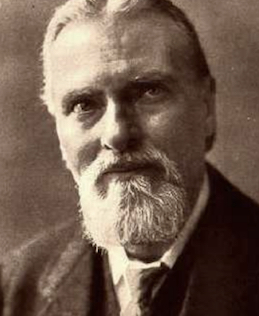
On this date in 1850, atheist activist George William Foote was born in England. In 1876 he began co-editing a weekly newspaper, The Secularist, with Jacob Holyoake, then became the first editor of the National Secular Society’s publication The Freethinker. Foote edited The Freethinker for 35 years. The magazine is still published but moved to online-only in 2014.
Foote was prosecuted for blasphemy in 1882 and jailed for a year. His plight brought reform, making future criticism of Christianity lawful in Great Britain. Foote launched several other freethought journals, publishing companies and presses, devoting his life and career to the advancement of secularism. His books include Flowers of Freethought and, with W.P. Ball, The Bible Handbook. (D. 1915)
"Who burnt heretics? Who roasted or drowned millions of ‘witches’? Who built dungeons and filled them? Who brought forth cries of agony from honest men and women that rang to the tingling stars? Who burnt Bruno? Who spat filth over the graves of Paine and Voltaire? The answer is one word — Christians."
— Foote from "Are Atheists Wicked?" (a chapter in "Flowers of Freethought," 1894)
Andy Rooney
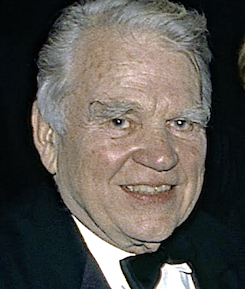
On this date in 1919, commentator Andrew Aitken “Andy” Rooney was born in Albany, N.Y. After high school, he attended Colgate University until he was drafted into the U.S.Army in 1941. He was one of six correspondents who flew with the Eighth Air Force making the first U.S. bombing raids over Germany. He joined CBS in 1949 and helped write for the popular “Garry Moore Show” (1956-65), while also writing for CBS News public affairs. He collaborated with Harry Reasoner on a series of news specials from 1962-68.
Rooney won the first of his three Emmy Awards for his special “Black History: Lost, Stolen or Strayed” (1968). Starting in 1979, he wrote a regular column for Tribune Media Services. “A Few Minutes with Andy Rooney” debuted on the TV news program “60 Minutes” in July 1978 with an essay about misleading reporting of auto fatalities on the Independence Day weekend. Rooney delivered 800 on-air essays for “60 Minutes.”
The latest of his 13 books was Years of Minutes. In his 1999 book “Sincerely, Andy Rooney,” he included a final section called “Faith in Reason,” in which he reprinted a letter to his children about his agnosticism and freethought views.
He was a recipient of FFRF’s Emperor Has No Clothes Award in 2001 for speaking the plain truth about religion as a public figure. He referred to himself as “a writer who appears on television,” and was also awarded a Lifetime Achievement Emmy and the Ernie Pyle Lifetime Achievement Award. Rooney appeared regularly on “60 Minutes” until five weeks before his death at age 92 in New York City. (D. 2011)
PHOTO: Rooney in 1991 at the Kennedy Center Honors in Washington; photo by Shutterstock/Mark Reinstein.
"We all ought to understand we’re on our own. Believing in Santa Claus doesn’t do kids any harm for a few years but it isn’t smart for them to continue waiting all their lives for him to come down the chimney with something wonderful. Santa Claus and God are cousins.”
“Christians talk as though goodness was their idea but good behavior doesn’t have any religious origin. Our prisons are filled with the devout.”
“I’d be more willing to accept religion, even if I didn’t believe it, if I thought it made people nicer to each other but I don’t think it does."
— From a section titled "Faith in Reason" in his book "Sincerely, Andy Rooney" (1999)
Sebastian Junger
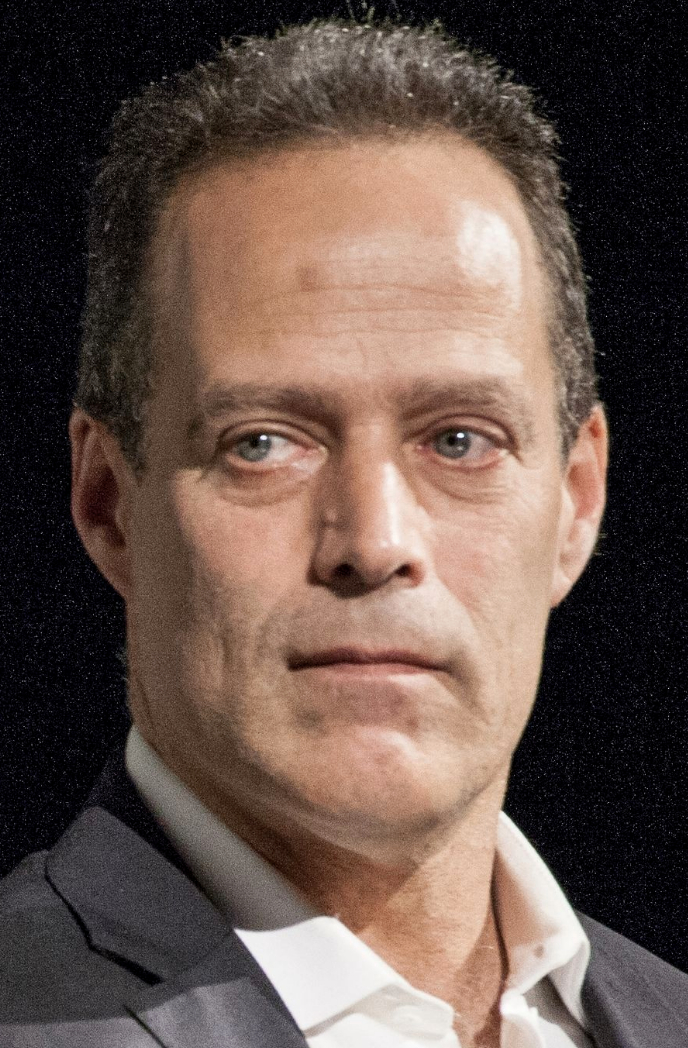
On this date in 1962, journalist and filmmaker Sebastian Junger was born in Belmont, Mass., to painter Ellen Sinclair and physicist Miguel Chapero Junger, who emigrated to the U.S. from Germany in 1941 because of his paternal Jewish ancestry. The younger Junger said he was raised in “a very rational household.” In a 2016 New York Times interview, he said, “I grew up with parents who were essentially antireligious, and so I never attended church. John Stuart Mill’s ‘Utilitarianism’ gave me the kind of ethical guidance that every person needs — religious or otherwise.” He studied cultural anthropology in Connecticut at Wesleyan University, which became independent of the Methodist Church in 1937, and graduated in 1984.
He started working as a freelance journalist while taking other jobs to support himself, later successfully selling pieces to publications like Harper’s, The New York Times Magazine, Vanity Fair, National Geographic Adventure, Outside and Men’s Journal. Researching hazardous jobs like commercial fishing led to his first book, The Perfect Storm: A True Story of Men Against the Sea (1997), which became a bestseller and a movie in 2000 starring George Clooney and Mark Wahlberg. Fire (2001) was a nonfiction collection about more dangerous pursuits — diamond mining, firefighting, peacekeeping in Kosovo and guerrilla warfare in Afghanistan. The previous year he had received a National Magazine Award for his Vanity Fair piece “The Forensics of War.” He received the 2007 Winship/PEN Award for A Death in Belmont, a book about the 1963 rape and murder of Bessie Goldberg.
He and British photographer Tim Hetherington teamed up on the award-winning “The Other War: Afghanistan,” shown on ABC’s “Nightline” in 2008. Junger’s book War (2010) revolved around a U.S. Army airborne platoon in Afghanistan. He and Hetherington co-directed a related documentary film, “Restrepo,” nominated for a 2009 Academy Award. Three documentaries about war and its aftermath followed: “Which Way Is The Front Line From Here?” (2013, about Hetherington’s 2011 death while covering the Libyan civil war), “Korengal” (2014) and “The Last Patrol” (also 2014). Another book was published in 2016, Tribe: On Homecoming and Belonging.
Hetherington’s death made Junger question his own willingness to put himself in harm’s way to get the story and helped him decide he’d had enough. “I suddenly was realizing the effect of Tim’s death on everyone he loved, including me, and I just didn’t want to risk doing that to everyone I love.” (Cultist, 2013.) During a 2014 ethics panel discussion hosted by the Carnegie Council for Ethics in International Affairs, he was asked if he was an atheist in a foxhole and answered, “As an atheist, I think about that phrase and I think, what is it really about an artillery bombardment that leads you to the conclusion that God is involved in this? I really see it the other way around: Clearly, God has nothing to do with what’s going on today.” Asked a similar question in a 2016 C-SPAN2 interview about there being no atheists in foxholes, he said, “I know empirically that’s not true.”
Junger married Daniela Petrova in 2002. They divorced in 2014. As of this writing, he lives in New York City and Cape Cod, Mass.
PHOTO: U.S. National Archives, public domain photo, 2013
“The reason I think I am an atheist is because I haven’t encountered a tangible reason to believe in God.”
— Sebastian Junger interview, C-SPAN2 "Book TV" (July 3, 2016)
A.A. Milne
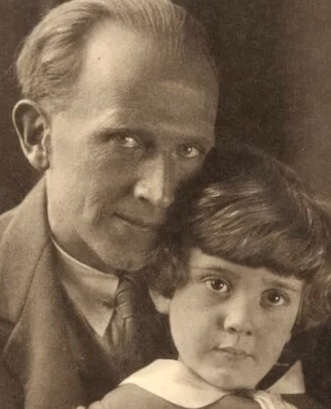
On this date in 1882, classic children’s author Alan Alexander Milne, known as A.A. Milne, was born in England and brought up in London. With his brothers he attended his schoolteacher father’s school, Henley House. One of his influential teachers there was H.G. Wells. Attending Cambridge on a mathematics scholarship, Milne was given the gift of 1,000 pounds by his father upon graduation. He used it to move back to London and become a writer.
Milne freelanced for newspapers, joined the staff of Punch magazine and wrote a book that flopped, Lovers in London. In 1913 he married Dorothy “Daphne” de Sélincourt. In 1915 he volunteered in World War I and wrote his first play while serving. His only child, Christopher Robin, was born in 1920. In his 1974 book The Enchanted Places, Christopher wrote about being estranged from his parents and resenting what he came to see as his father’s exploitation of his childhood.
In his obituary in 1996, The Observer wrote: “Christopher Robin, a ‘sweet and decent’ man who overcame a childhood in which he was haunted by Pooh and taunted by peers, has left without saying his prayers – he was a dedicated atheist – aged 75.”
Milne’s When We Were Young was published in 1924, followed by Winnie the Pooh (1926), The House at Pooh Corner (1926) and Now We Are Six (1927). Milne subsequently wrote several plays, a detective novel and, in 1952, Year In, Year Out. (D. 1956)
PHOTO: Milne and Christopher Robin in 1926.
"The Old Testament is responsible for more atheism, agnosticism, disbelief — call it what you will — than any book ever written; it has emptied more churches than all the counter-attractions of cinema, motor bicycle and golf course."
— A.A. Milne, cited in "2000 Years of Disbelief" by James A. Haught (1996)
Joseph Mazzini Wheeler
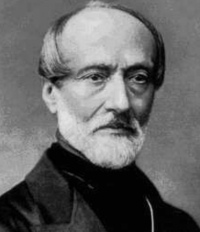
On this date in 1850, Joseph Mazzini Wheeler was born in Great Britain. Wheeler, an atheist, is best known as the author of the monumental Biographical Dictionary of Freethinkers (1889). Wheeler, who dedicated his life to freethought after moving to London in the early 1870s, was a close friend of freethought editor G.W. Foote. Wheeler also wrote Frauds and Follies of the Fathers (1888), Footsteps of the Past (1895) and co-authored Crimes of Christianity with Foote.
He served for many years as vice president of the National Secular Society and was a frequent contributor to freethought periodicals. He served as subeditor of the National Secular Society’s publication The Freethinker from its founding in 1881 to his death at age 48. (D. 1898)
"The merits and services of Christianity have been industriously extolled by its hired advocates. Every Sunday its praises are sounded from myriads of pulpits. It enjoys the prestige of an ancient establishment and the comprehensive support of the State. It has the ear of rulers and the control of education. Every generation is suborned in its favor. Those who dissent from it are losers, those who oppose it are ostracised; while in the past, for century after century, it has replied to criticism with imprisonment, and to scepticism with the dungeon and the stake."
— from "Crimes of Christianity" by J.M. Wheeler and G.W. Foote (1887)
Robin Morgan
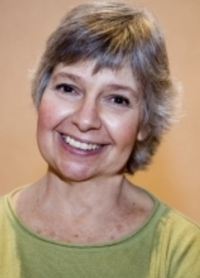
On this date in 1941, Robin Morgan — feminist author, journalist, editor, lecturer, organizer, atheist and activist — was born in New York City. As she notes in her memoir, Saturday’s Child, “Saturday’s child has to work for a living.” She started at age 2 as a tot model. She had her own radio show by age 4, then acted in the role of Dagmar on the popular series “Mama” in the 1940s and 1950s. She left show biz to write and became a founder and leader of the contemporary feminist movement.
Morgan’s columns and articles for Ms. magazine appeared from 1974-88. She was editor-in-chief of Ms. for four years and later its international consulting editor. Her groundbreaking anthology Sisterhood Is Powerful came out in 1972, followed by Sisterhood Is Global (1984), Sisterhood Is Forever (2003) and Fighting Words: A Toolkit for Combating the Religious Right (2006). Morgan is a distinguished poet and the author of more than 20 books, including her 2006 novel The Burning Time, based on the first witchcraft trial in Ireland.
She has traveled the globe as a feminist activist, scholar, journalist and lecturer. She is a co-founder of the Feminist Women’s Health Network, the Feminist Writers’ Guild, Media Women and the National Network of Rape Crisis Centers. Her timely The Demon Lover: On the Sexuality of Terrorism tells the personal story of her travel to refugee camps in the Middle East, with a post-9/11 introduction and afterword. A recipient of many awards, she was named FFRF’s Freethought Heroine in 2005 and is an honorary director.
She was married from 1962-83 to poet Kenneth Pitchford, a founding member of the Effeminist movement. He and Morgan, who are both bisexual, have a son, musician Blake Morgan.
She was diagnosed with Parkinson’s in 2010. Instead of curtailing her effectiveness, the diagnosis inspired her to take the lead in creating the Parkinson’s Disease Foundation’s Women and PD Initiative to help women be better served by research, treatment and assistance for their caregivers. Morgan has shared her struggle with the disease by writing and presenting about her experiences at a variety of venues, including her 2015 Ted Talk, viewed over a million times. In 2018 she published Dark Matter: New Poems, which includes the verses from that presentation.
“Religion is not about awe and joy, despite its purported proprietorship of these and its promise to eventually deliver what already lies around us every day, freely available for utter celebration. Religion is about something else. The etymology of the word itself, from the Latin, to being ‘bound by rules.’ Religion is about terror.”
— Freethought Heroine acceptance speech at FFRF's national convention (Nov. 11, 2005)
Jack Germond
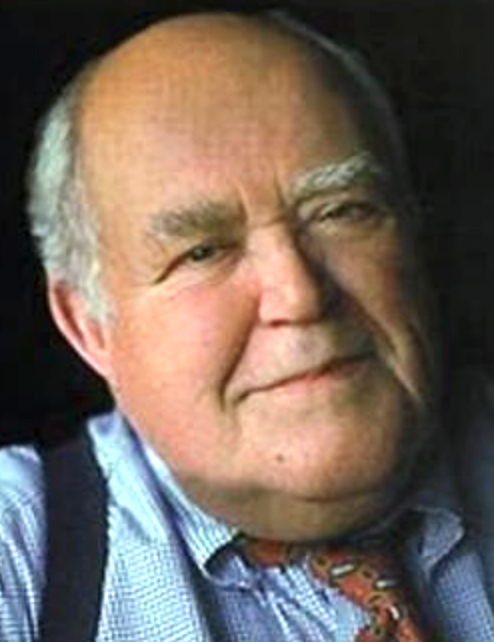
On this date in 1928, journalist John Worthen “Jack” Germond was born in Newton, Mass. Germond wrote several books, mainly focusing on politics. After serving in the U.S. Army in 1946-47, he earned a B.A. and B.S. from the University of Missouri. He graduated in 1951 and began writing for the Rochester, N.Y., Times-Union, eventually heading its Washington bureau. He was the Washington Star’s political editor from 1974-81 and wrote a syndicated column on national politics for 24 years with fellow journalist Jules Witcover.
He moved to the Baltimore Sun when the Star folded. He first appeared on NBC’s “Meet the Press” in 1972 and “The Today Show” in 1980 and on PBS’ “The McLaughlin Group” in 1981. Germond tended to be liberal politically and was seen by many as in touch with the average American and as a traditional “old-school” newspaper reporter.
His books included Fat Man Fed Up: How American Politics Went Bad (2005), Fat Man in the Middle Seat: Forty Years of Covering Politics (2002), Mad as Hell: Revolt at the Ballot Box, 1992 (1994), Whose Broad Stripes and Bright Stars? (1989) and Blue Smoke and Mirrors: How Reagan Won and Why Carter Lost the Election of 1980 (1981). He co-wrote his earlier books with Witcover. He had two daughters with his first wife, Barbara Wipple. Their daughter Mandy died at age 14 from leukemia. After a 1988 divorce he married Alice Travis, a Democratic Party official and political activist. (D. 2013)
“In the interests of full disclosure, I must note that although I was brought up as a Protestant, I have been an atheist my entire adult life. I do not proselytize, however. Nor do I question the faith of others. I just don’t want to be obliged to accept someone else’s faith as a factor in my government. If John Ashcroft wants to hold a prayer meeting and advertise his piety, let him find someplace besides the Justice Department.”
— Jack Germond, "Fat Man Fed Up" (2005)
Eugene M. MacDonald
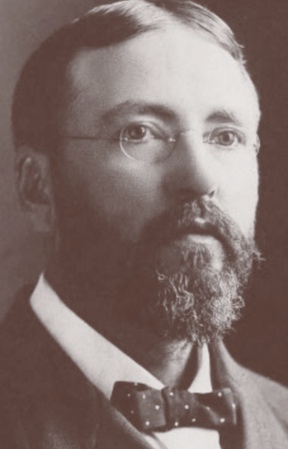
On this date in 1855, Eugene Montague MacDonald was born. The American journalist became a foreman at The Truth Seeker, a 19th-century freethought newspaper. When Truth Seeker founder D.M. Bennett died, MacDonald and two others established The Truth Seeker Company, buying the newspaper in 1883. MacDonald edited the 19th century’s leading freethought publication for 26 years. His brother George took over editorship when Eugene retired shortly before his death. Truth Seeker readers and contributors included Clarence Darrow, who wrote in 1931 that he had been connected with the publication for 50 years. (D. 1909)
PHOTO: MacDonald, c. 1883.
"The Chicago World’s Fair having been decreed, the kind of church people who adopt meddling as a means of grace saw that now was their day of salvation. Hitherto, with their fussy restrictions on Sunday work and amusements, they had been obliged to function merely as local nuisances. Now they would close the World’s Fair on Sunday and make themselves felt as pests by all nations.”
— From The Truth Seeker, 1892, cited in "Fifty Years of Freethought, Vol. II" by George MacDonald (1929)
Lydia Maria Child
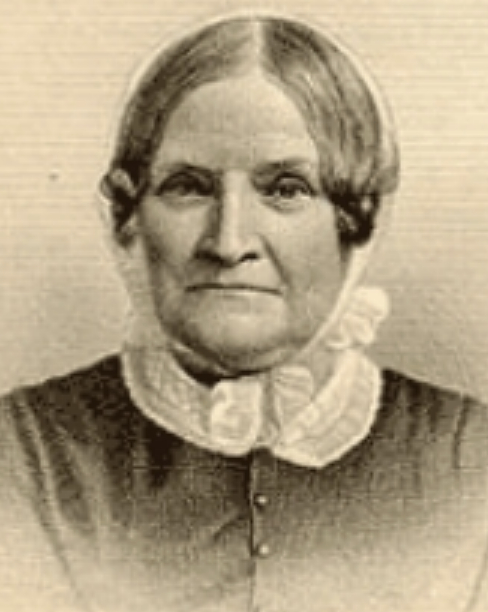
On this date in 1802, Lydia Maria Child (née Francis) was born in Medford, Mass. Considered one of the first U.S. “women of letters,” she became a famous abolitionist, author, novelist and journalist. Her poem “Over the River and Through the Wood” (originally titled “A Boy’s Thanksgiving Day”) became popular as a song: “Over the river and through the wood / to grandfather’s house we go.” After her mother died when she was 12, she went to live with her older married sister in Maine and studied to become a teacher.
She ran a private school, started the first journal for children and wrote several novels and popular how-to books such as The Frugal Housewife, The Mother’s Book and The Little Girl’s Own Book. Her history, The First Settlers of New England, blamed Calvinist-based racism for the treatment of Native Americans. She married David Childs, editor and publisher of the Massachusetts Journal, in 1828 when she was 26.
An Appeal in Favor of That Class of Americans Called Africans recruited many to the anti-slavery movement, but made Child a pariah in Boston society. Her two-volume The History of the Condition of Women, in Various Ages and Nations was published in 1835. She continued abolition work, supporting herself through popular writings and newspaper columns. The Progress of Religious Ideas (1855) rejected theology, dogma, doctrines, and talked of “Providence” as the inward voice of conscience. Her funeral was presided over by Wendell Phillips, who said she was “ready to die for a principle and starve for an idea.” John Greenleaf Whittier recited a poem in her honor and The Truth Seeker memorialized her. D. 1880.
“It is impossible to exaggerate the evil work theology has done in the world.”
— Child, "The Progress of Religious Ideas Through Successive Ages" (1855)
Natalie Angier
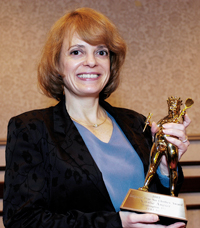
On this date in 1958, Natalie Angier, Pulitzer Prize-winning science columnist for The New York Times, was born in New York City to a Jewish mother and a father with a Christian Science background. She attended the University of Michigan for two years, then transferred to Barnard College, where she studied English, physics and astronomy and graduated with high honors.
At 22 she became a founding staff reporter for the science magazine Discover. Throughout the 1980s, Angier worked as a senior science writer for Time magazine, as an editor for the women’s business magazine Savvy and as a professor of journalism in a graduate program at New York University. She began writing for The New York Times in 1990 and won a Pulitzer after just ten months on the job for a series of science articles. She became a columnist in 2007 for the Times’ science section.
Her books include Natural Obsessions (1988), about the world of cancer research, The Beauty of the Beastly (1995) and Woman: An Intimate Geography (1999), a National Book Award finalist and best-seller. Woman won a Maggie Award from Planned Parenthood, was nominated for the Samuel Johnson Award (Britain’s largest nonfiction literary prize) and was named one of the best books of the year by the Los Angeles Times, the Chicago Tribune, People magazine, National Public Radio, amazon.com, Publisher’s Weekly, Library Journal and the New York Public Library.
In 2002 she edited The Best American Science and Nature Writing and in 2010 edited The Canon: A Whirligig Tour of the Beautiful Basics of Science. Her writing has appeared in numerous magazines, publications and anthologies. She began serving a five-year term as the Andrew D. White Professor-at-Large at Cornell University in 2007, previously filled by Oliver Sacks, Toni Morrison, Jane Goodall and others who were “distinguished contributors to cultural achievement.”
Angier, a self-proclaimed “lonely atheist,” was a guest on Freethought Radio in 2006. In The New York Times Sunday Magazine (Jan. 14, 2001), Angiers outed herself as an atheist in the article “Confessions of a Lonely Atheist”: “I’m an Atheist. I don’t believe in God, Gods, Godlets or any sort of higher power beyond the universe itself, which seems quite high and powerful enough to me. I don’t believe in life after death, channeled chat rooms with the dead, reincarnation, telekinesis or any miracles but the miracle of life and consciousness, which again strike me as miracles in nearly obscene abundance.”
Angier received an Emperor Has No Clothes Award at the 2003 FFRF national convention. In 1991 she married Rick Weiss, a former science reporter for the Washington Post. They have a daughter, Katherine Weiss Angier, who graduated summa cum laude in 2018 from Princeton with a degree in biology.
“Sure, I’m a soapbox atheist. But [my daughter] doesn’t have to take my word for anything. All she has to do is look around her, every day, to find the bible she needs — in the sky, sun, moon, Mars, leaves, lady bugs, stink bugs, possums, tadpoles, cardinals, the wonderful predatory praying mantises that have gotten really big and fat this year on all the insects this rainy year has brought. Life needs no introduction, explanation or excuse. Life is bigger than myth — except in California.”
— Angier, Emperor Has No Clothes Award acceptance speech at the 2003 national FFRF convention
James A. Haught
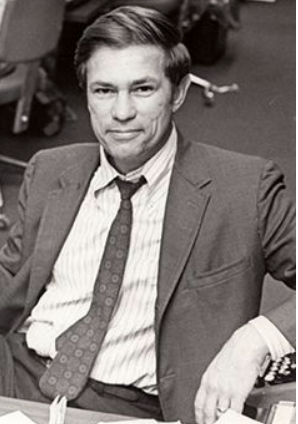
On this date in 1932, journalist and author James Albert Haught was born in the rural West Virginia town of Reader, which had no electricity or paved streets. His family had gas lights and running water, while most households lived with kerosene lamps and outdoor privies. His parents never attended church, and he ignored religion.
After graduating with a high school class of 13, he worked as an apprentice printer at the Charleston Daily Mail and later was hired in 1953 as a reporter by a rival paper, the Gazette. Republican Gov. Arch Moore Jr. derisively called the Gazette “The Morning Sick Call” in the mid-1970s for its critical reporting on his administration. Moore pleaded guilty in 1990 to five felonies and served 32 months in federal prison for extortion and obstruction of justice.
Haught’s city editor in the 1950s asked him to start going to church on Sunday so he could write a weekly religion column. Despite Haught’s protest that he’d been churchless his entire life, the editor said, “Fine. That will make you objective.” Years on the church beat gradually filled him with distaste for supernatural miracle claims and he felt dishonest mingling with worshipers while not revealing his doubts about gods, devils, heavens, hells, prophecies and other dogma.
His investigative reporting led to several criminal indictments and he won about two dozen newswriting awards. He was named associate editor in 1983 and editor in 1992. When the Gazette and Daily Mail merged in 2015, he assumed the title of editor emeritus while still working full-time on editorials, personal columns and news stories. The only break from daily journalism was as a press aide to U.S. Sen. Robert Byrd for several months in 1959.
In the 1980s he started writing freethought books (12 as of this writing in 2023) and magazine essays. He served as a senior editor of Free Inquiry magazine and writer-in-residence for the United Coalition of Reason and started blogging at Daylight Atheism and Canadian Atheist. Many of his columns ran in Freethought Today and he was an FFRF Life Member.
Haught, who had four children and 12 grandchildren, shied from labels describing the degree of his religious doubt and preferred to be considered as simply an honest person who didn’t claim to know supernatural things that nobody can know. Nancy, his first wife, died in 2008 and he married retired teacher Nancy Lince in 2013. She died in 2021.
He was a longtime member of a Unitarian Universalist congregation. He once debated UU President William Sinkford after Haught observed the national organization turning “more ‘churchy’ and using god-talk. … I proposed that the denomination adopt a statement saying: ‘The UUA takes no position on the existence, or nonexistence, of God. Members are free to reach their own conclusions about this profound question.’ Actually, that statement expresses the UU reality, but leaders were afraid to put it into writing.” (United Coalition of Reason interview, Aug. 23, 2017)
Even at age 90, Haught shrugged off the frailties of age and kept on writing, including a weekly blog for FFRF’s Freethought Now. A column he wrote for his 90th birthday was titled “My Thoughts on Mortality.” He died of cancer at age 91 in hospital hospice in Charleston. (D. 2023)
PHOTO: Haught in the newsroom early in his journalism career of 60-plus years.
“Although billions of people pray to invisible gods, they’re just imaginary, as far as a sincere inquirer can tell. So, to me, the only honest viewpoint is the humanist one, which doubts the supernatural and focuses on improving human life.”
— Haught, "To Question Is the Answer" (July 2007)
S.E. Cupp
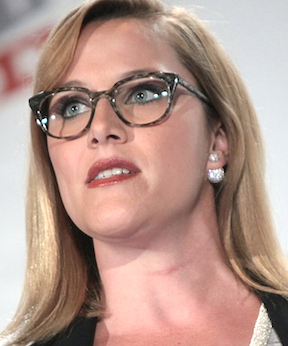
On this date in 1979, columnist and commentator Sara Elizabeth “S.E.” Cupp was born in Oceanside, Calif. Her Catholic family moved around a lot for her father’s work with Boise Cascade lumber products.
They moved to Andover, Mass., when she was 6. She graduated from high school there and was a student during that time with the Boston Ballet. “I knew at a very young age that I didn’t really buy the whole God gamut. I didn’t know why. I wouldn’t say it was rebellion. It was skepticism. It just didn’t add up to me.” (Daily Beast, June 13, 2010)
Cupp graduated in 2000 with a B.A. in art history from Cornell University in Ithaca, N.Y. She earned an M.A. with a concentration in religious studies in 2010 from the Gallatin School of Individualized Study at New York University. “I was just fascinated by the pomp and ceremony and ritual nature of religion, and yet couldn’t completely get there ever; couldn’t completely wrap my mind around the idea of God.” (CNN Belief Blog, Sept. 9, 2013)
She started using S.E. Cupp in order to have a gender-free byline. At the top of her website after her name, it says “Conservative. Columnist. Commentator.” Then it says “Cupp delivers her passionate voice and fresh perspective on everything from politics, media, sports to popular culture” via her media appearances.
Her columns appeared in numerous publications, most often conservative ones, which was also where her commentary was delivered, although she was paired with a liberal on some programs to offer contrasting views. Co-hosting with Krystal Ball on MSNBC’s “The Cycle” about the role of religion in presidential elections, Cupp said GOP candidate Mitt Romney would have “no chance” running as an atheist. “And you know what? I would never vote for an atheist president. Ever,” Cupp added.
Asked why, Cupp explained: “Because I do not think that someone who represents 5 to 10 percent of the population should be representing and thinking that everyone else in the world is crazy but me.” (“The Cycle,” July 5, 2012)
Two years later on CNN, she argued that atheists on “the left” have a “militant hostility” in reaction “against intellectual diversity” and that they perpetuate the idea “that atheists are somehow disenfranchised or left out of the political process. I just don’t find that to be the case.” (“Crossfire Reloaded,” July 30, 2014)
That didn’t sit too well with Harvard University humanist chaplain Chris Stedman: “Survey data contradict Cupp. For instance, a 2014 Pew Research study found that Americans are less likely to vote for an atheist presidential candidate than any other survey category — even if they share that candidate’s political views. Faring better than atheists: candidates who have engaged in extramarital affairs and those with zero political experience.” (CNN, Aug. 22, 2014)
Cupp identifies as a Log Cabin Republican who supports equal rights for gays. Although she said in 2013 that she had never voted for a Democrat, she announced in August 2020 that she would be voting for Joe Biden for president. In May 2022, she wrote to support upholding Roe v. Wade, stating that she is pro-life but believes abortion should be legal.
Conservatism’s rightward shift with the rise of Donald Trump has perhaps moved Cupp to the left: “The insurrection at the Capitol on Jan. 6 was in many ways a Christian nationalist event. Crosses, Christian banners and signs reading ‘Jesus is my savior, Trump is my president,’ were unavoidable. … “All of this — the rise in Christian nationalism and the literal and metaphorical weaponizing of faith to intimidate opponents — while the country grows less and less religious.” (Column, N.Y. Daily News, June 22, 2022)
In that same column, she wrote: “Surely, there are atheists in Congress and running for Congress, just as there are atheists everywhere else in America, even if they remain closeted. With the right using God to coax the party into regressive, punitive and at times increasingly scary places, here’s hoping they’ll finally have the courage to come out of the shadows.”
Cupp married John Goodwin, former chief of staff to Idaho Republican U.S. Rep. Raúl Labrador, in 2013. He is head of communications for The Weather Channel. They have a son, John Davies Goodwin III, born in 2014.
PHOTO: Cupp at the 2016 Politicon in Pasadena, Calif.; Gage Skidmore photo under CC 2.0.
“I never thought about it, but as an atheist, maybe Nascar is my church?”
— Cupp, commenting that her three Sunday essentials are Nascar, Buffalo wings and Bravo. (N.Y. Times, April 29, 2011)
Joan Konner
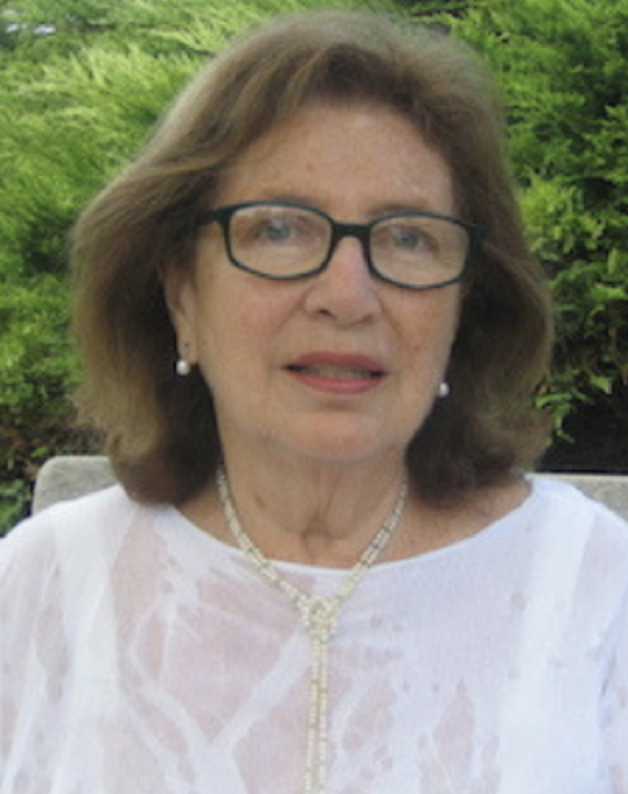
On this date in 1931, journalist Joan Barbara Konner was born in Paterson, N.J., the daughter of Martin Weiner, who was in the textile business, and the former Tillie Frankel, an artist. She received her B.A. from Sarah Lawrence College in 1951. She earned a master’s in jounalism from Columbia in 1961 when she was 30 after raising two daughters, Rosemary and Catherine. Her marriage ended in divorce, and Catherine died in 2003.
She was hired as a journalist for the Bergen Record, where she worked on the women’s page. She left in less than two years to work at WNBC-TV, where she was a writer and producer of many documentaries. She became executive producer of “Bill Moyers Journal” during the 1980s and later was president and executive producer of Moyers’ production company, Public Affairs Television. She helped produce the acclaimed six-part docuseries “Joseph Campbell and the Power of Myth” for Moyers. She worked with Alvin Perlmutter on the series and married him in 1994.
Konner ended her career in public television as executive producer for national news and public affairs for WNET/Thirteen in New York. She returned to Columbia in 1988 to become the first female dean of the Columbia School of Journalism. She was also publisher of the Columbia Journalism Review until 2000.
She wrote books on religion from the freethought point of view, such as The Atheist Bible: An Illustrious Collection of Irreverent Thoughts (2007), and You Don’t Have to Be a Buddhist to Know Nothing: An Illustrious Collection of Thoughts on Naught (2009) and is known for producing over 50 documentaries and television series that focus on ideas and beliefs. “I myself was born Jewish and I have great respect for that, but if you ask me to name what I’ve learned the most from — and what seems to guide my own behavior now — I say I’m a ‘Trans-Zen-Jewish-Quak-alist.’ ” (Read the Spirit interview, March 16, 2010.)
Konner won numerous awards and honors throughout her lengthy career, including 16 Emmys, a Peabody Award, the New Jersey Presswomen’s Lifetime Achievement Award and the New York Newswomen’s Award for Best Documentary. She died of leukemia at age 87 in Manhattan in 2018.
“I see myself as a journalist if anything. I don't call myself an agnostic but I do recognize that I will never know.”
— Konner interview in the online magazine Read The Spirit (March 16, 2010)
Charles Watts
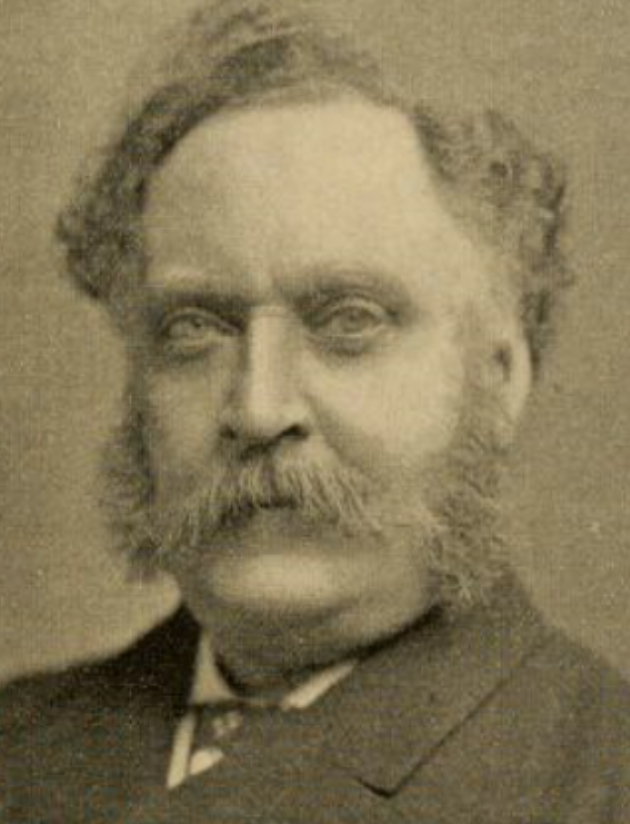
On this date in 1836, Charles Watts was born in Bristol, England, into a family of Methodists. At age 16 he moved to London to work with his older brother in a printing office. The brothers were acquainted with many freethinkers and founded a publishing business, Watts & Co., in 1864. Along with Charles Bradlaugh and others, Watts co-founded the National Secular Society in 1866.
Watts wrote extensively on freethought, including Freethought: Its Rise, Progress and Triumph (1885). In an 1868 pamphlet on Christianity, he wrote: “In Spain religion is cruel oppression, in Scotland it is a gloomy nightmare, in Rome it is priestly dominion, while in England it is simply emotional pastime. All these different phases of Christianity indicate that theological opinions depend on surrounding circumstances, and cannot therefore be the cause of the civilisation of the world.”
He emigrated to Toronto in 1883, where he lectured and became the leader of the secularist movement in Canada. Returning to England in 1891, he worked for The Freethinker, the world’s oldest surviving freethought publication (internet-only since 2014). Watts’ wife, Kate Eunice Watts, also wrote and traveled with him. Some of her writings included The Education and Position of Woman and Christianity: Defective and Unnecessary.
Watts died at age 70 and was cremated, with his remains buried in Highgate Cemetery in North London. His son, Charles Albert Watts, developed the Rationalist Press Association, still in existence as the Rationalist Association. (D. 1906)
"The object of Christ was to teach his followers how to die, rather than to instruct them how to live.”
— from Watts' pamphlet "Christianity: Its Nature and Influence on Civilisation" (1868)
Nuala O’Faolain
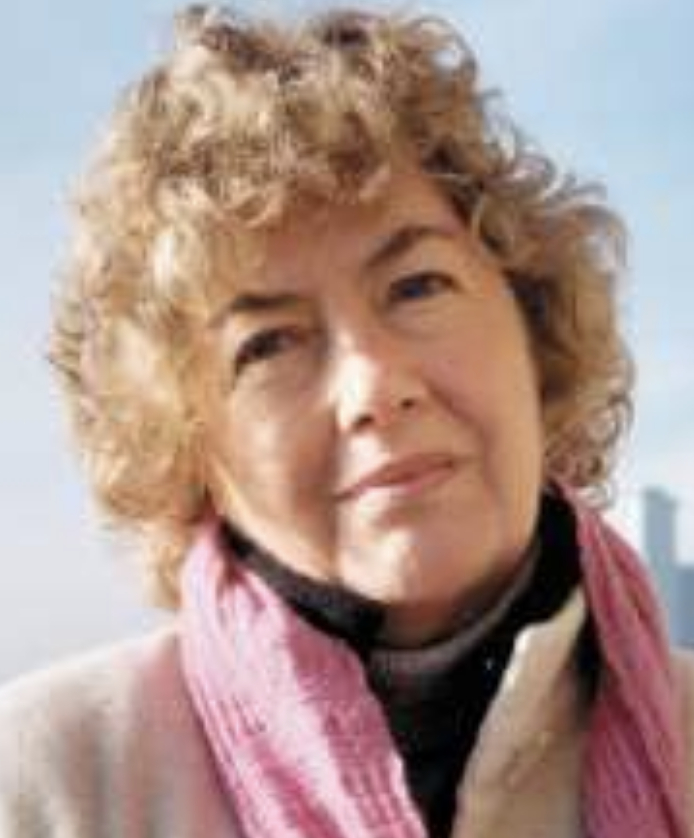
On this date in 1940, Irish journalist, memoirist and feminist Nuala O’Faolain (pronounced oh-FWAY-lawn) was born in Dublin, the second of nine children. Her unhappy childhood, lacking in love, inspired much of her later writing. Her father wrote a newspaper column for the Dublin Evening Press and, according to O’Faolain, spent many nights out in Dublin with little regard for his family. Her mother “sank into despair and alcoholism” as a result. (The New York Times, May 11, 2008.)
O’Faolain attended a Catholic convent school but was expelled for unruly behavior. She studied English at University College in Dublin and medieval English literature at the University of Hull in England. She earned a B.Phil. in English from Oxford in the 1960s. After her studies, she lectured in the English department at University College and then moved to London, where she established a broadcasting producer career with the BBC.
In 1977 she returned to Ireland to produce television programs, often with feminist content about Irish women. In 1986 she started writing a weekly column for the Irish Times. Her first memoir, Are You Somebody? (1996), won her international recognition. Following were successful novels, My Dream of You (2001) and The Story of Chicago May (2006). In 2003, Almost There, a sequel to her first memoir, was published.
O’Faolain had a 15-year relationship with the feminist journalist and playwright Nell McCafferty. She died in 2008 in Dublin from lung cancer at age 68. In an interview after her terminal diagnosis, O’Faolain stated she did not believe in an afterlife. (The Independent, interview with Marian Finucane, April 13, 2008). Her May 11 obituary in The Guardian stated, “The long and illustrious list of women who challenged the status quo — and changed Irish society in the process — had no more eloquent an exponent than Nuala O’Faolain.”
Nuala O'Faolain: And though I respect and adore the art that arises from the love of God and though nearly everybody I love and respect themselves believes in God, it is meaningless to me, really meaningless.
Marian Finucane: The reason I asked you is because it is a source of comfort for many people.
O'Faolain: Well, I wish them every comfort, but it is not even bothering me. I don’t even think about it. I have never believed in the Christian version of the individual creator.— O'Faolain interview, The Independent (April 13, 2008)
Matt Taibbi
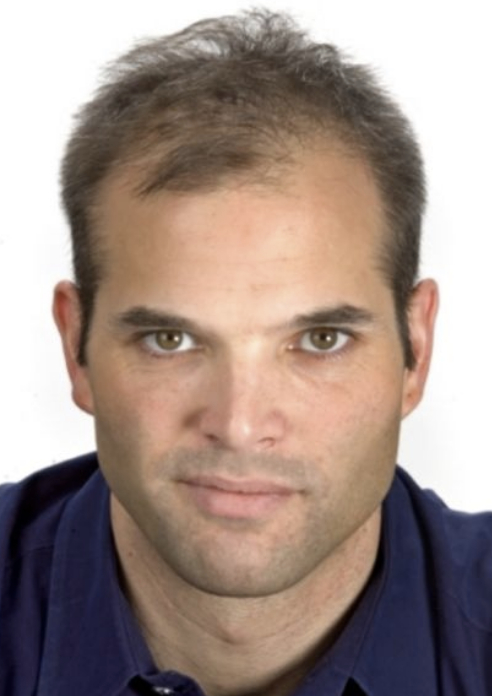
On this date in 1970, muckracking atheist journalist Matthew C. “Matt” Taibbi was born in New Brunswick, N.J. The son of an NBC reporter, he grew up in Boston and graduated from Bard College in Annandale-on-Hudson, N.Y. He moved to Russia in 1992 and studied and worked there and in Uzbekistan and Mongolia for over six years. In 1997 he co-edited with Mark Ames an English language newspaper called the eXile, geared to expatriates in Moscow. It provided background for his first book, with Ames and Edward Limonov, The Exile: Sex, Drugs, and Libel in the New Russia (2000).
He then started The Beast, a satirical biweekly in Buffalo, N.Y., but left to concentrate on freelancing for The Nation, Playboy, Rolling Stone and New York Press (which he left in 2005 after his editor Jeff Koyen was fired over issues raised by Taibbi’s column “The 52 Funniest Things About the Upcoming Death of the Pope”). Taibbi defended the piece as “off-the-cuff burlesque of truly tasteless jokes” to relieve readers of his “fulminating political essays.” He covered the 2008 presidential campaign for “Real Time with Bill Maher.”
He received a 2008 National Magazine Award in the category “Columns and Commentary” for his Rolling Stone columns. His article “The Great American Bubble Machine,” which detailed Goldman Sachs’ involvement in the financial meltdown, received a 2009 Sidney Award from the Sidney Hillman Foundation. His 2008 book The Great Derangement: A Terrifying True Story of War, Politics, and Religion told the story of how he infiltrated Texas evangelical pastor John Hagee’s Cornerstone megachurch and school and Hagee’s “near-absolute conquest of a very trendy niche in the market: Christian Zionism.”
He has also written Griftopia: Bubble Machines, Vampire Squids, and the Long Con That Is Breaking America (2010), The Divide: American Injustice in the Age of the Wealth Gap (2014), Insane Clown President: Dispatches from the 2016 Circus (2017) and Hate Inc.: Why Today’s Media Makes Us Despise One Another (2019). He and his wife Jeanne, a family physician, were married in 2010 and live in New Jersey with their son.
MEHTA: What role should religion play in the political arena?
TAIBBI: Well, I'm an atheist/agnostic, so I would say none. People should stick to solving the problems they have the tools to solve. If you have a budget crisis, well, human beings can do the math, work out a new tax/spending strategy, and fix that. But we don't have any tools for [divining] the will of God as it relates to, say, a new problem like high school shootings, the Iraq war, or the AIDS virus. All we have are the opinions of religious leaders whose motives may or may not be pure, and whose grasp of logic may or may not be of the highest quality. If you inject religion into the equation, the debate is necessarily going to be subjective, emotional, and inconclusive. It's also very easy for unscrupulous people to use religion to further various ends for other reasons. Hagee's humping of Israel is a great example. How do you get fundamentalist Christians to support the financial subsidy of military aid to a Jewish state? Easy; you convince them the world is going to end soon, and that we're going to be on the wrong side of Armageddon unless we support Israel.”— Interview with "Friendly Atheist" Hemant Mehta (April 29, 2008)
John Stossel
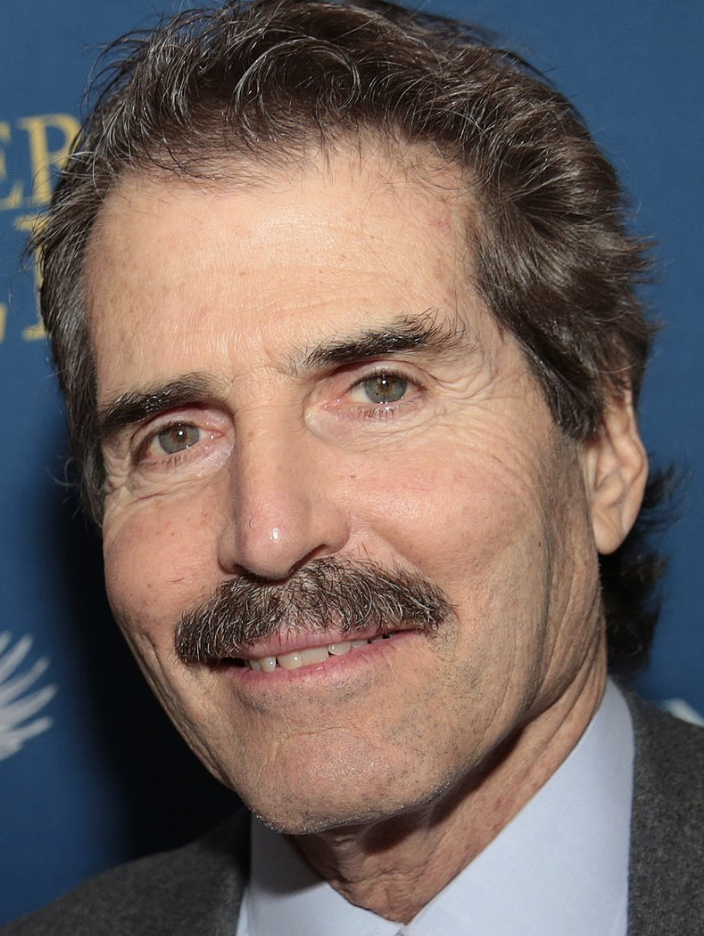
On this date in 1947, journalist John Frank Stossel was born in Chicago Heights, Illinois, to Jewish parents from Germany. He was raised Protestant. He attended Princeton University, earning a degree in psychology in 1969.
He worked as a reporter for several media outlets around the country, then became an editor for “Good Morning America” and in 1981 a correspondent for “20/20.” Stossel moved in 2009 to the Fox Business Channel to host “Stossel,” a weekly program that approaches issues from a libertarian perspective.
He has written three books. Give Me a Break: How I Exposed Hucksters, Cheats, and Scam Artists and Became the Scourge of Liberal Media (2005) was on The New York Times best-seller list for 11 weeks. His second book was Myths, Lies and Downright Stupidity: Get Out the Shovel: Why Everything You Know is Wrong (2007), and the third was No, They Can’t: Why Government Fails — But Individuals Succeed (2012).
Stossel has received 19 Emmy Awards and five awards from the National Press Club. Stossel is married to Ellen Abrams and has two children, who were raised Jewish by his wife. In a “Stossel” episode (Dec. 16, 2010), he identified himself as agnostic. “God may exist, but I want more evidence and I’ve looked for it,” he said, adding that he can’t bring himself to see the bible as “the word of God.”
PHOTO: Stossel in 2018 in Teaneck, N.J.; Gage Skidmore photo. CC 3.0
“I want to [believe]. I see the peace and purpose it gives most of you who believe, and I tried. I just can’t.”
— Stossel to Gretchen Carlson on Fox News (Dec. 13, 2012)
Michael Kinsley
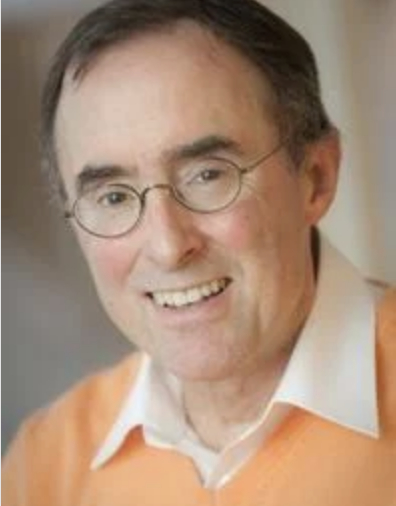
On this date in 1951, journalist Michael Kinsley was born in Detroit. He earned his B.A. at Harvard in 1972, attended Oxford and earned his law degree from Harvard Law School in 1977. Named editorial and opinion editor of the Los Angeles Times in June 2004, Kinsley previously was founding editor of Slate.com. His journalistic credentials include writing for Time magazine, the Washington Post and Vanity Fair.
In 1979 he became editor of The New Republic (rejoining the magazine in 2013 after a long hiatus). He has been editor-in-chief of Harper’s and editor of the American Survey Department of The Economist. Kinsley was managing editor of the Washington Monthly and co-hosted CNN’s “Crossfire” for six years. He played himself in the 1993 movie “Dave.”
In a December 2004 Los Angeles Times column about gay marriage, he wrote, “Such a development is not just amazing. It is inspiring. American society hasn’t used up its capacity to recognize that it harbors injustice, and it remains supple enough to change as a result. In fact, the process is speeding up. It took African American civil rights a century, and feminism half a century, to travel the distance gay rights have moved in a decade and a half.”
His books include Please Don’t Remain Calm: Provocations and Commentaries (2008) and Old Age: A Beginners Guide (2016). Kinsley identifies as a “nonbeliever.” In 2002 he married Patty Stonesifer, a top executive at Microsoft and the Bill and Melinda Gates Foundation. That same year he revealed he had Parkinson’s disease and in 2006 underwent deep brain stimulation, surgery designed to reduce its symptoms.
According to a humorous postscript to his Time column anticipating the surgery, the operation went well: His first words out of the operating room were, “Well, of course, when you cut taxes, government revenues go up. Why couldn’t I see that before?”
PHOTO: Kinsley during an interview with Brian Lamb on C-SPAN (April 12, 2016).
“As a devout believer, [Marine Corps Gen. Jerry] Boykin may also wonder why it is impermissible to say that the God you believe in is superior to the God you don’t believe in. I wonder this same thing as a nonbeliever: Doesn’t one religion’s gospel logically preclude the others’? (Except, of course, where they overlap with universal precepts, such as not murdering people, that even we nonbelievers can wrap our heads around.)"
— Kinsley, "The Religious Superiority Complex: It's OK to think your God's the greatest, but you don't have to rub it in," Time magazine (Nov. 3, 2003)
Jorge Ramos
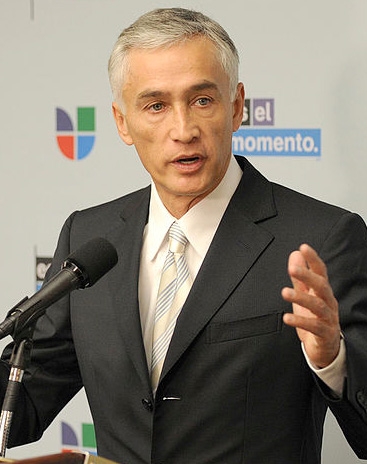
On this date in 1958, journalist and author Jorge Gilberto Ramos Ávalos was born in México City to Catholic parents. His father, with whom he became estranged because of his career choice, was an architect. After graduating from the Universidad Iberoamericana in communications, he worked as a TV reporter. When he was censored for criticizing the government, he came to the U.S. on a student visa and graduated from UCLA Extension in 1984. He later earned a master’s at the University of Miami and became a U.S. citizen in 2008.
Ramos, news anchor for Noticiero Univision since 1986, also hosts Univision’s weekly public affairs program “Al Punto” and Fusion’s “America with Jorge Ramos.” He’s written 10 books, has a syndicated column and actively promotes literacy in the Latino community. Ramos has received eight Emmys and numerous journalism awards and is consistently named as one of the most influential Latinos.
In an April 2014 Fusion column, he criticized Pope Francis for presiding over the canonization of Pope John Paul II, calling it “an insult to the countless people who have been sexually abused by Catholic priests. During his papacy, from 1978-2005, this newly anointed ‘saint’ remained silent as these predators targeted children in parishes around the world.” In an interview with CNN México posted on YouTube in 2013, Ramos was asked, “Pero lo crees en Dios?” (“Do you believe in God?”), he answered “no.”
At an August 2015 Donald Trump press conference in Iowa, Ramos tried to question Trump about immigration without being called on and was told several times to sit down and “Go back to Univision” before being escorted out by security. Ramos is based in Miami, is twice divorced and has a daughter, Paola, born in 1988, and a son, Nicolas, born in 1998.
Public domain photo by Bill Ingalls, NASA
TERRY GROSS: “So when you left Mexico and were faced with a different part of the Catholic Church, did you consider going back or were you just done?”
RAMOS: “No, I was done. I was done. … [O]nce I started going to college, and once I realized that nobody really knows if there’s afterlife, that there’s really no explanation, no religious explanation on why children die, why children have cancer, why all the cruelty in wars happen, why all these terrible things that I’ve seen as a journalist. Once you realize that there’s no religious explanation, then I really had no choice but to leave Catholic Church and I became an agnostic.”— Interview, NPR "Fresh Air" (Oct. 5, 2015)
Cenk Uygur
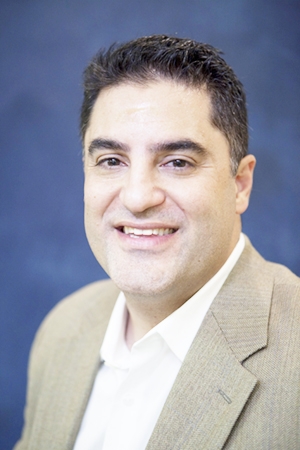
On this date in 1970, Cenk Kadir Uygur was born in Istanbul, Turkey. When he was 8, his family moved to New Jersey, where he graduated from high school. He majored in management at the Wharton School of Business, and later earned a J.D. from Columbia University. Uygur was raised as a “not-very-strict” Muslim but lost his faith after taking a college course about Islam and reading the Quran and the Bible.
He now describes himself as a secular humanist and an agnostic. He worked as an attorney, then became involved in local talk radio and television news production. In 2004 he created the online news talk show “The Young Turks.” In addition to internet video, the show was also broadcast on Sirius Satellite Radio until 2010.
Uygur has appeared on many television networks as a commentator, including MSNBC, Fox News and Al Jazeera. In 2010 he became a substitute host and paid contributor for MSNBC. In January 2011 he became the anchor of MSNBC Live, but left the network in June 2011 and started hosting “The Young Turks with Cenk Uygur” on Current TV, which went off the air in 2013.
In 2018 “The Young Turks” launched its own 24-hour channel on YouTube TV. In 2010 he accepted FFRF’s Emperor Has No Clothes Award. He received the American Humanist Association’s 2012 Humanist Media Award. Uygur and his wife Wendy Lang have a son, Prometheus Maximus, and a daughter, Joy.
Uygur apologized in 2017 for a series of blog posts from 1999 to the mid-2000s that were sexist toward girls and women, calling what he wrote “offensive, insensitive and ignorant.” He said he wrote the posts, deleted more than a decade earlier, while he was a conservative and before he underwent a political transformation into a liberal.
"I'm offended by [evangelical leaders'] actions, but I'm not offended by their opinion. They believe in a sky god who's going to suck them up into the sky with a vacuum cleaner. What's there to get offended by? That's funny! That's hilarious! Have at it, Hoss, I'd love to see it!"
— Uygur speech to FFRF's 2010 national convention
Vladimir Pozner Jr.
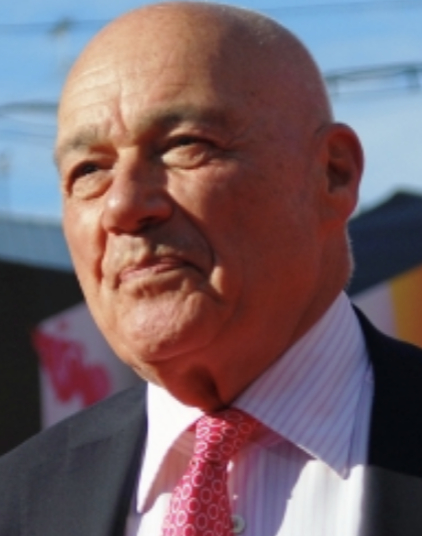
On this date in 1934, Vladimir Vladimirovich Pozner was born in Paris to a Russian-Jewish father, also named Vladimir, and a French Catholic mother, Géraldine Lutten. The couple separated when he was 3 months old, and he and his mother moved near her family in New York City. His parents later reunited and moved back to Paris in 1939.
Fleeing World War II, they returned to New York in 1940. Pozner briefly attended Stuyvesant High School in Manhattan until his father, under FBI scrutiny for pro-Soviet activities and suspected spying, moved them to East Berlin and then to Moscow. He majored in human physiology at Moscow State University and earned a B.S. in 1958.
In 1961 he joined Novosty Press Agency (later learning his department was actually a KGB “disinformation” effort) and then became editor of Soviet Life and Sputnik magazines. He was a commentator on Radio Moscow from 1970-86. Pozner was permitted to travel abroad from 1977 to 1980, when his passport was revoked for criticizing Russia’s military incursions in Afghanistan.
In the late 1980s he began appearing regularly on ABC’s “Nightline,” the Canadian Broadcasting Corporation, the BBC and other TV networks in the U.S. and abroad, all by satellite hookup because he was not allowed to travel. In 1985-86 he co-hosted two shows, also by satellite, with Phil Donahue, which brought glasnost to Soviet TV. In 1989, he resigned from the Communist Party.
He moved to New York City in 1991 to work with Donahue. Parting with Illusions (1990) became a national best-seller, which was followed by Eyewitness (1991). In 1997, Pozner returned to Moscow to host two TV shows. He served as president of the Academy of Russian Television and dean of the Pozner School of Television Journalism. He has won two Emmy certificates and several other journalism awards.
He married Valentina Chemberdzhi (1957–67), Yekaterina Orlova (1969–2005) and Nadezhda Solovieva (2005). He has often identified himself publicly as an atheist and has advocated for the right to euthanasia and legalization of same-sex unions and recreational drugs in order to cut down on trafficking.
“As it is known, I am an atheist. I stridently believe there is no God. It’s not that I run around shouting, ‘There isn’t, there isn’t’ from morning to evening, but I do not hide my convictions.”
— Pozner interview with Radio Free Europe (May 16, 2017)
Robert Scheer
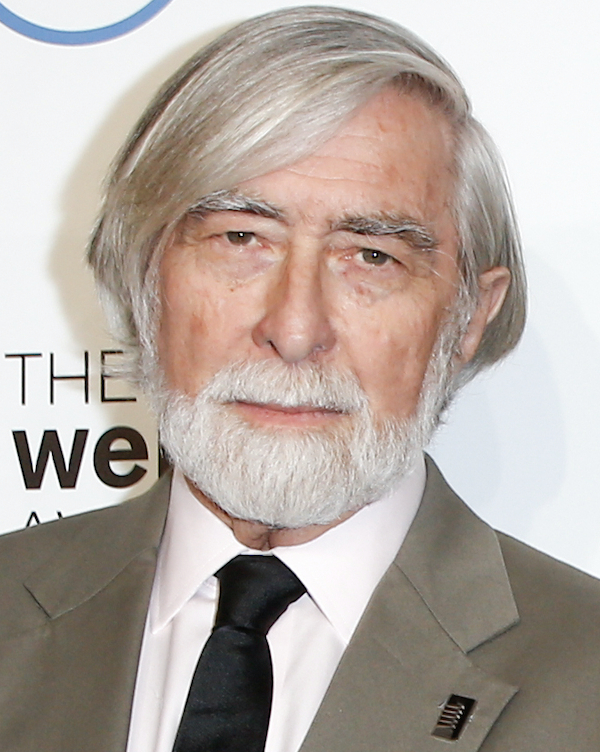
On this date in 1936, journalist Robert Scheer was born in Bronx, N.Y. He attended public schools and graduated from City College of New York. He further studied economics as a fellow at Syracuse University, Yale and the University of California-Berkeley’s Center for Chinese Studies.
From 1964 to 1969, Scheer was the Vietnam correspondent, managing editor and editor-in-chief of Ramparts magazine. He then worked as a journalist and columnist at the Los Angeles Times for nearly 30 years, serving as one of the most progressive voices on the staff. He was fired after decades of dedication to the paper for reasons he believes stemmed from ideological differences with the publisher.
Scheer has interviewed a number of presidents, including Richard Nixon, Jimmy Carter, George Bush, Ronald Reagan, Bill Clinton and George W. Bush. In 1993 at the Los Angeles Times, he launched a nationally syndicated column and worked as a contributing editor for 12 years. This column became known as Truthdig, which morphed into an online site and relocated to the San Francisco Chronicle, where Scheer is the editor-in-chief of the independent journal.
Scheer has written several books, including The Five Biggest Lies Bush Told Us About Iraq (2004), co-authored with his son Christopher Scheer and Lakshmi Chaudry, The Pornography of Power: How Defense Hawks Hijacked 9/11 and Weakened America (2008) and They Know Everything About You: How Data-Collecting Corporations and Snooping Government Agencies Are Destroying Democracy (2015). He has won numerous awards such as the James Aronson Award for Social Justice Journalism, the 2010 Distinguished Work in New Media Award, and the 2011 Izzy Award for outstanding achievement in independent media. Additionally, Truthdig is a four-time recipient of the Webby Award for best political blog.
Scheer teaches as a clinical professor of communications in the Annenberg School for Communication and Journalism at the University of Southern California. He is former co-host of “Left, Right, and Center,” a political radio program on National Public Radio station KCRW. He hosts “Scheer Intelligence” at KCRW, where he interviews people who discuss the day’s most important issues, offering an often surprising perspective. He lives in California with his wife Narda Catharine Zacchino.
PHOTO via Shutterstock by Debby Wong
"I was always raised with the idea there was an inherent value to human life — and [that] certainly was not based on religion. I think it was enhanced by not being religious. I had to find meaning in the secular life. You know, I couldn't be waiting for another life. And I couldn't find it just in scripture or something. My parents had both basically rebelled against the life of scripture. They saw its downside."
— Scheer, The Real News Network interview (July 5, 2015)
Hugh Hefner
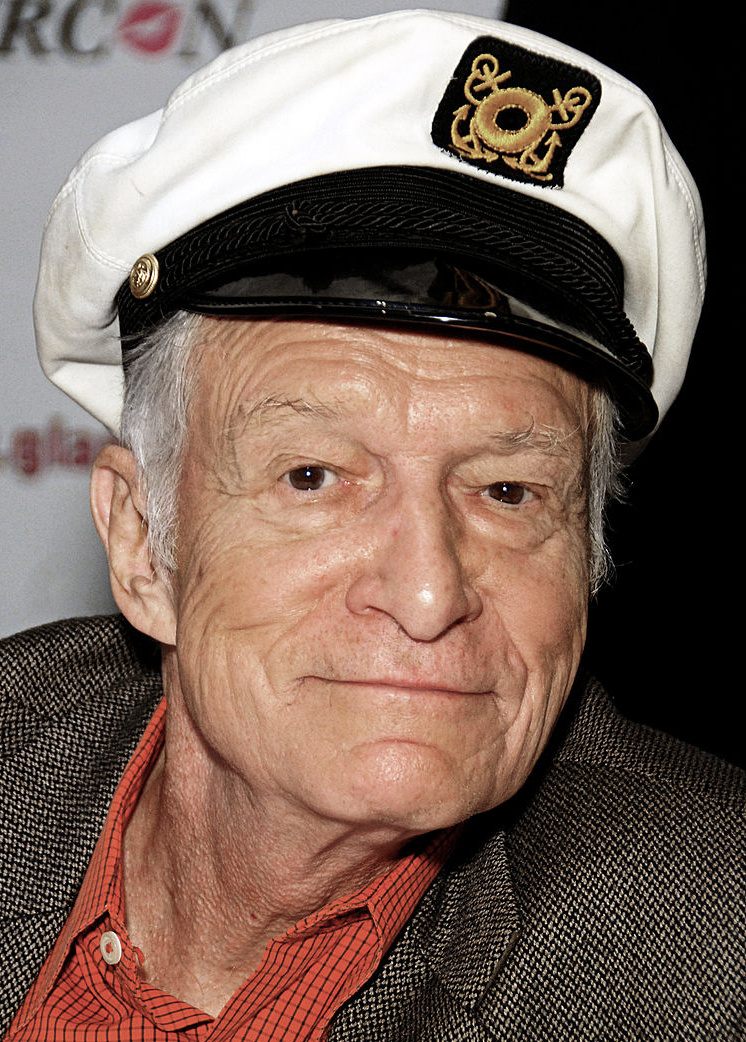
On this date in 1926, Playboy mogul Hugh Marston Hefner was born in Chicago, the firstborn of Grace and Glenn Hefner’s two sons. His parents were strict Methodists. He went to school in the city and started a school newspaper at Steinmetz High School. He served in the U.S. Army during World War II. After discharge in 1946, he studied at the Chicago Art Institute for two years and then at the University of Illinois at Urbana-Champaign, completing a degree in psychology in 1950.
After college he began working as a promotional copywriter at Esquire in Chicago, which was then the premier men’s magazine. After three years he left in frustration, determined to start his own publication. With $8,000 from 45 investors, Hefner started Playboy magazine. The first issue was published in December 1953. It was an instant success, selling 50,000 copies. By 1959 Playboy was selling almost a million copies a month and Hefner was expanding his success. Playboy Enterprises established private key clubs, staffed with the iconic “bunnies” as hostesses, high-end resorts and modeling agencies. There were books and films and two television series. By 1970 the publication was selling 7 million copies a month.
After suffering a minor stroke in 1985, Hefner largely stepped back from Playboy Enterprises, leaving his daughter, Christie Hefner, at the helm. He instead focused on philanthropic efforts, making a few notable TV and film appearances to continue promoting the Playboy brand. He championed the issues of free speech and freedom of the press. He established the Playboy Foundation in 1965 to provide grants to nonprofits fighting censorship or researching human sexuality. The foundation also sponsors the Freedom of Expression Award, which is given at Sundance Film Festival every year.
While Playboy became a byword for objectification of women, with Gloria Steinem writing a famed piece, “A Bunny’s Tale,” for Show magazine on May 1, 1963, exposing what it was like to be a “Bunny,” Hefner placated some feminist critics by defending women’s reproductive rights. The A&E network’s 12-part miniseries titled “Secrets of Playboy” started airing in early 2022. Directed by Alexandra Dean, it reexamined Hefner and Playboy Enterprises through the lens of 2022 and in the wake of #MeToo. Dozens of women appear in the documentary to allege decades of sexual predation, including rape, and extensive use of illegal drugs and secret recordings inside the Playboy Mansion in the Holmby Hills neighborhood of Los Angeles.
In response, an open letter signed by about 500 people defended Hefner, calling the allegations unfounded: “From all we know of Hef, he was a person of upstanding character, exceptional kindness, and dedication to free thought.” In a statement, the company said “today’s Playboy is not Hugh Hefner’s Playboy. We trust and validate these women and their stories and we strongly support those individuals who have come forward to share their experiences.”
Alexandra Dean: “His progressive reputation was like a shield that stopped a lot of these allegations from touching him. It was just too hard to believe that this guy who was always promoting women at his company and was a progressive champion, how could he secretly be attacking women behind closed doors?” (Variety, Feb. 7, 2022) “That other side of Hugh Hefner really does need to have a reckoning now — we need to figure out how to reconcile the two Hugh Hefners and now decide what his real legacy is.”
Hefner married three times: to Mildred Williams (1949), Kimberley Conrad (1989) and Crystal Harris (2012). He also lived with a succession of younger “partners” at the mansion. He was 86 when he married Harris, a 26-year-old former Playmate. He had a son and a daughter with Williams and two sons with Conrad. He died at the mansion at age 91 of cardiac arrest and was interred in a mausoleum drawer next to Marilyn Monroe in Westwood Memorial Park. (D. 2017)
PHOTO: Hefner in 2010; Glenn Francis photo under CC 3.0.
“It's perfectly clear to me that religion is a myth. It's something we have invented to explain the inexplicable."
— Hefner interview in Playboy (January 2000)
Leo Rosten
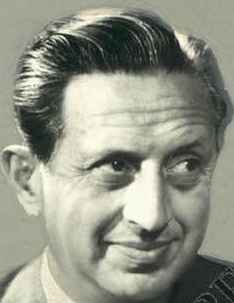
On this date in 1908, journalist and political scientist Leo Rosten was born in Łódź, now a part of Poland. He was born into a Yiddish-speaking family and emigrated to the U.S. at age 3, where his trade unionist parents opened a knitting shop in the Chicago area. He grew up in a working-class neighborhood in which the primarily Jewish residents spoke Yiddish and English. From an early age, Rosten had an interest in books and language that led him to write his first story at the age of 9. He put himself through college and received degrees from the University of Chicago and the London School of Economics.
Emerging into the workforce during the Great Depression, Rosten was unable to find a job that fit his degree. Instead he began teaching English to immigrants at night school. This experience led to his most popular work, The Education of H*Y*M*A*N*K*A*P*L*A*N (1937), published under the pseudonym Leonard Q. Ross. In 1949 he joined the staff at Look magazine in New York, where he remained until 1971.
Rosten also lectured at Columbia University, Yale and the New School of Social Research in New York City. He wrote scripts for films such as “The Conspirators” (1944), “The Dark Corner” (1946) and “Double Dynamite” (1951). Rosten is recognized for his humorous encyclopedic collections The Joys of Yiddish (1968) and The Joys of Yinglish (1989). He also edited A Guide to the Religions of America (1955), Religions in America (1963) and A Guide to the Religions of America: Ferment and Faith in an Age of Crisis (1975).
He married Priscilla Ann Mead, a sister of anthropologist Margaret Mead, in 1935. They had two daughters and a son before divorcing in 1959. She took her own life at age 48 later that year. Rosten married Gertrude Zimmerman in 1960. He died at age 88 in New York City. (D. 1997)
"The purpose of life is not to be happy — but to matter, to be productive, to be useful, to have it make some difference that you lived at all."
— Rosten, "The Myths by Which We Live," The Rotarian, Evanston, Ill. (September 1965)
Anatole France
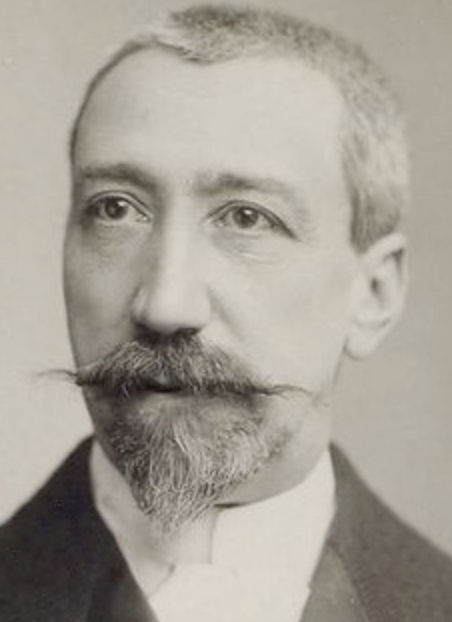
On this date in 1844, Anatole France (né François-Anatole Thibault) was born in Paris. A lifelong atheist, France was known for his anti-clericalism. France was a journalist, poet and writer whose breakthrough novel, The Crime of Sylvestre Bonnard (1881) centered around a skeptical scholar, perhaps modeled after the author himself. It was awarded a prize from the French Academy. France’s style, dry and ironic, was modeled in part on Voltaire and influenced by the French Enlightenment.
In 1905 he wrote a critical treatise, The Church and the Republic, which was instrumental in the campaign to disestablish the Catholic Church as the state religion. He served as an honorary president of the French National Association of Freethinkers. Penguin Island (1908) is France’s irreverent tale about a nearsighted abbot who baptizes penguins by mistake. In The Revolt of Angels (1914), France revisits Milton’s “Paradise Lost.” France depicted an angel leading a revolt after being influenced by the writings of Lucretius. With other writers, France came to the defense of Alfred Dreyfus, a Jewish captain falsely indicted for treason, and was a voice for reform.
His collection of aphorisms is called The Garden of Epicurus. France was awarded the Nobel Prize in Literature in 1921 “in recognition of his brilliant literary achievements, characterized as they are by a nobility of style, a profound human sympathy, grace, and a true Gallic temperament.” D. 1924.
"The thoughts of the gods are not more unchangeable than those of the men who interpret them. They advance — but they always lag behind the thoughts of men. … The Christian God was once a Jew. Now he is an anti-Semite."
— France letter to the Freethought Congress in Paris (1905), cited by Joseph McCabe in "Biographical Dictionary of Modern Rationalists"
Peter Watson
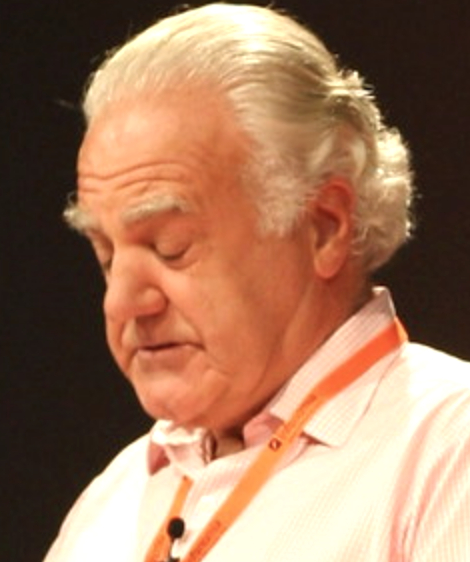
On this date in 1943, Peter Frank Patrick Watson was born in Birmingham, England. An intellectual historian and investigative journalist, he was educated at the universities of Durham, London and Rome, later living in the U.S. He has written for The Observer, The New York Times, Punch and The Spectator and is the author of fiction, as well as many books on art history, biography, psychology and true crime. Between 1997 and 2007, he was a research associate at the Illicit Antiquities Research Centre at Cambridge University.
His books include The Age of Nothing: How We Have Sought to Live Since the Death of God (2014, published in the U.S. as The Age of Atheists: How We Have Sought to Live Since the Death of God), The Medici Conspiracy: The Illicit Journey of Looted Antiquities from Italy’s Tomb Raiders to the World’s Greatest Museums (2006, with Cecilia Todeschini), Ideas: A History of Thought and Invention, from Fire to Freud (2005), Modern Mind: An Intellectual History of the 20th Century (2001) (also published as A Terrible Beauty), Sotheby’s: The Inside Story (1998), Landscape of Lies (1989) and The Caravaggio Conspiracy (1984).
In Ideas: A History of Thought and Invention, Watson seeks a new way to tell the history of the world from prehistory to modern day, asserting that human knowledge is divided into two realms: inward (philosophy and religion) and outward (observation and science). His stance supports the latter. Twins: An Uncanny Relationship? (1982), explores behavior patterns shared by identical twins, “to offer a rational alternative to mumbo jumbo for explaining many of the coincidences reported in twin studies, ” according to a Los Angeles Times review.
“A few saints and a little charity don’t make up for all the harm religion has done over the ages,” he said on CBC News, May 5, 2007. When asked about the good that religion has done in the world in an interview by The New York Times Magazine (Dec. 11, 2005), Watson replied: “I lead a perfectly healthy, satisfactory life without being religious. And I think more people should try it.”
PHOTO: Watson speaking at Cambridge in 2008; Juan Jaen photo under CC 2.0.
"Religion has kept civilization back for hundreds of years, and the biggest mistake in the history of civilization, is ethical monotheism, the concept of the one God. Let’s get rid of it and be rational."
— Watson interview, CBC News (May 5, 2007)
Derek Humphry
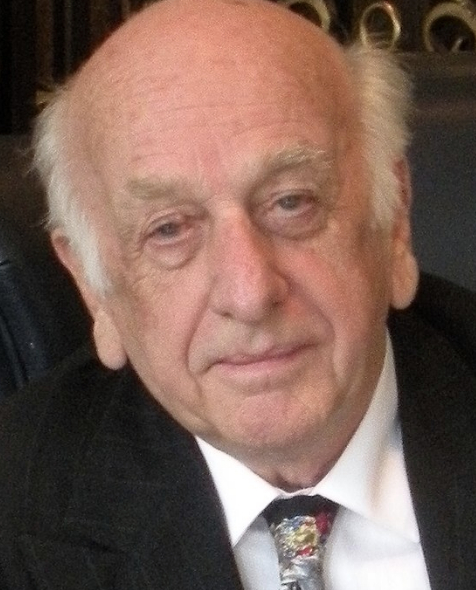
On this date in 1930, journalist, author and activist Derek Humphry was born in Bath, England, to Bettine (Duggan) and Royston Humphry. His father was a traveling salesman and his mother had been a fashion model before marrying.
Growing up in a broken home during World War II, Humphry received a substandard childhood education. He attended close to a dozen different schools before leaving the school system at the age of 15 to pursue a career in journalism. He worked for the Yorkshire Post as an editorial manager prior to being drafted for the British Army at age 18.
Not long after his service, he resumed his career in journalism and became a reporter on the Manchester Evening News, the largest evening UK newspaper. During his journalism career, Humphry specialized in issues of race relations, immigration, prison conditions, police brutality and corruption. This led to the production of Because They’re Black (1971), a book that argued for racial harmony in Britain and won him the Martin Luther King Memorial Prize.
In 1978 he accepted a position as a special feature writer for the Los Angeles Times and moved to the U.S. The next year he published Jean’s Way, based on the 1975 assisted suicide of his first wife after a long struggle with metastasized breast cancer. According to the Times of London, she drank an overdose of a barbiturate, an analgesic and a generous helping of sugar mixed with coffee. “She gulped it all down, said, ‘Goodbye, my love,’ lost consciousness and stopped breathing within 50 minutes.”
In 1976 he had married Ann Wickett, an American studying Shakespeare in England. His investigative series for the Los Angeles Angeles Times was titled “The Quality of Dying in America” and led to him touring the country and speaking to doctors, nurses, scientists, ethicists and funeral home directors.
He and Ann started the Hemlock Society, which they ran out of the garage of their home in Santa Monica, in 1980. He wrote other related books, including Final Exit: The Practicalities of Self-deliverance and Assisted Suicide for the Dying (1991), which marked the emergence of the Death with Dignity movement in the U.S., Freedom to Die: People, Politics & The Right-To-Die Movement (1998) and Good Life, Good Death: The Memoir of a Right to Die Pioneer (2017).
Tragically, Ann killed herself with an overdose in 1991 in the wake of a tempestuous marriage and public accusations back and forth with Humphry, who had married Gretchen Crocker, a former friend of Ann’s, in 1990. The Hemlock Society split into two separate organizations — Compassion and Choices and Final Exit Network.
In a 1995 interview, Humphry was asked if he was a religious person and replied that he was an atheist. He called the Catholic Church “a dedicated opponent.” He died at age 94 at a hospice in Eugene, Oregon, of congestive heart failure and was survived by Gretchen and three sons from his first marriage. (D. 2025)
"The euthanasia movement's clash with religion is the heart of the struggle. People lose sight of that. But in a small way, it's altering 2,000 years of Christianity."
— Humphry, "The Center for Bioethics and Human Dignity Presents Dignity and Dying: A Christian Appraisal" (1996)
Yoram Kaniuk
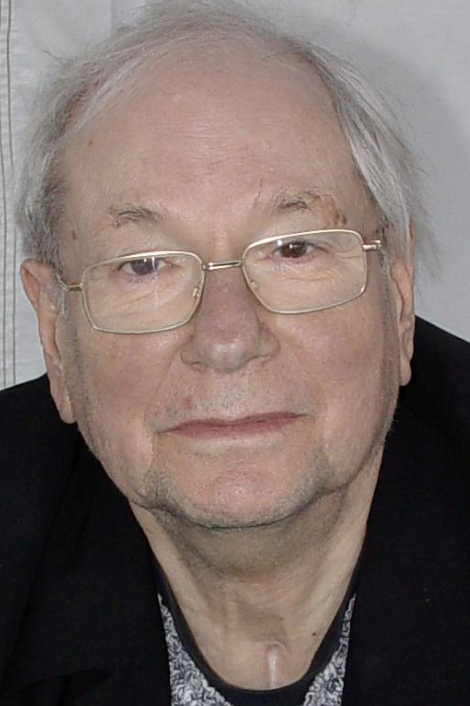
On this date in 1930, author and painter Yoram Kaniuk was born in Tel Aviv in the British Mandate of Palestine. His father was the first curator of the Tel Aviv Museum of Art. His godfather, Hayyim Nahman Bialak, was a pioneer of modern Hebrew poetry and his grandfather taught Hebrew and wrote textbooks.
While Kaniuk was still a teen, he served in Israel’s 1948 War of Independence. While serving, he was wounded when an Englishman disguised in a kaffiyeh (headdress) shot him in the legs. This, along with other of Kanuik’s profound experiences, inspired the nearly 30 novels he produced. Some of Kaniuk’s best-known works are Hemo, King of Jerusalem (1948), Confessions of a Good Arab (1984) and His Daughter (1988). His writings focused on the war, the Holocaust and the prospects for peace between Israelis and Palestinians.
Kaniuk spoke out against religious extremism and in 2011 won a legal battle in the district court of Tel Aviv in which he successfully appealed to change the status of his official national identity from Jewish to no religion. He advocated for the freedom of the next generation to identify as Jewish by nationality rather than by religion.
In his final years he battled bone marrow cancer and became fascinated with death. His final novel, Between Life and Death, detailed the four months he spent in a coma near the end of his existence. Upon his death, Kaniuk donated his body to science to avoid ultra-Orthodox funeral rituals.
In 1958 while living in the U.S., Kaniuk married Miranda Baker, a Christian, and returned to Israel with her. They had two daughters, Aya and Naomi. He died of cancer at age 83. (D. 2013)
"[Israel] established a state out of religion rather than the nation we almost became. Along the way we did not stop in the hallway of civilization, and religion attached itself to us like a leech, because that is the only way it survives, and now it has come back and returned."
— Kaniuk, quoted a month before he died, "Yoram Kaniuk's last published words: 'We messed it up." (The Times of Israel, June 9, 2013)
George Will
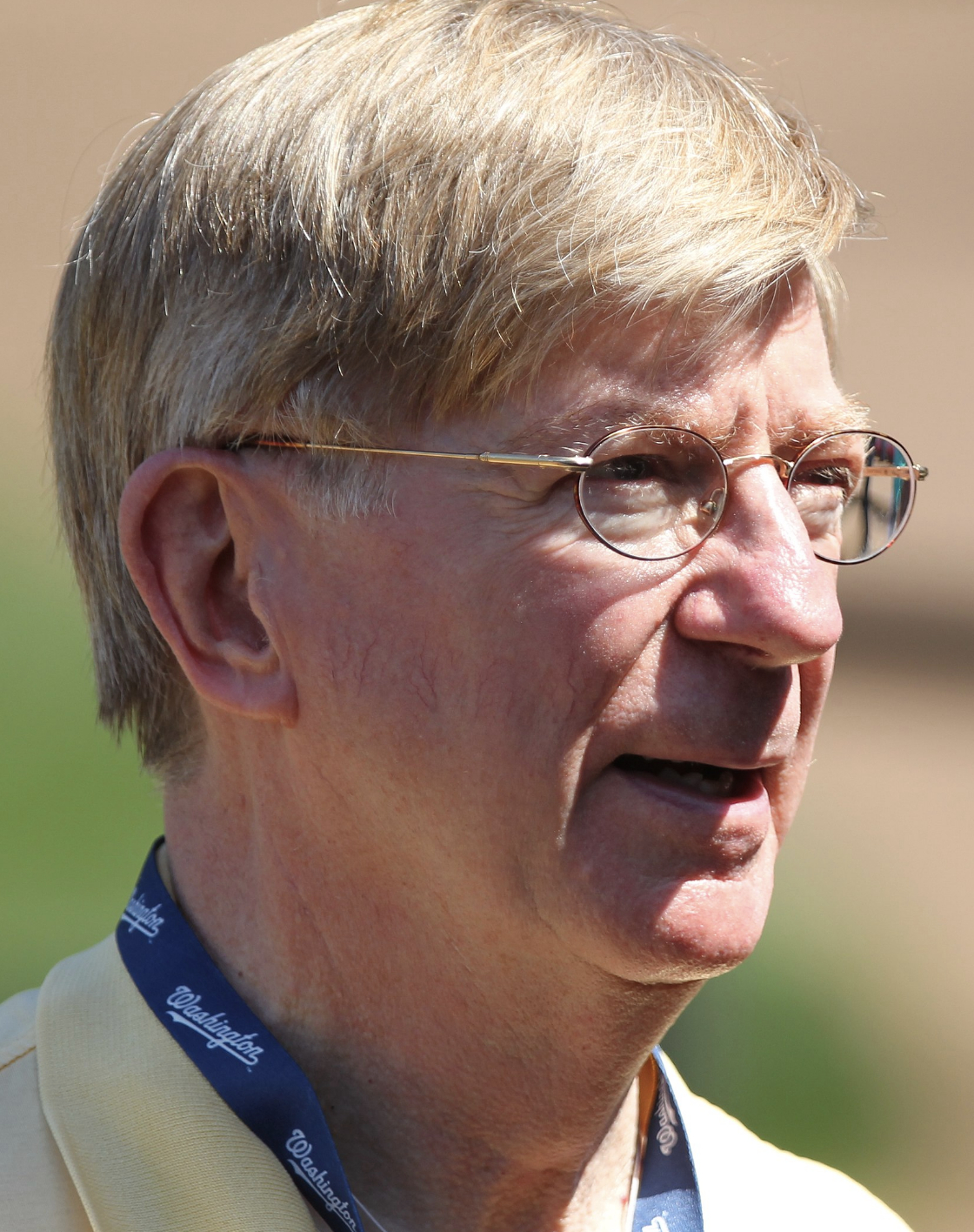
On this date in 1941, journalist and author George Frederick Will was born in Champaign, Ill. His father was a philosophy professor, specializing in epistemology, at the University of Illinois. Will has a bachelor’s degree from Trinity College in Hartford, Conn. (1962), a master’s in politics from Oxford University (1964) and a Ph.D. in politics from Princeton University (1968).
Will taught political philosophy at Michigan State University, the University of Toronto and then at Harvard. He served on the staff of U.S. Sen. Gordon Allott (R-Colo.) from 1970-1972. He edited National Review from 1972 to 1978. He’s generally regarded as a libertarian-style conservative. In 1974 he started writing a twice-weekly column for the Washington Post and by 1976 was a contributing editor and columnist for Newsweek. He joined ABC as a news analyst in the early 1980s and has since been a contributor to Fox News, MSNBC and NBC.
Will won a Pulitzer Prize for Commentary in 1977. His Newsweek and newspaper columns have been published in five books and he has authored books on other subjects such as political philosophy and baseball. His book Men at Work: The Craft of Baseball (1989) was the top national best-seller for over two months. Will has three children from his first marriage with Madeline Marion (divorced 1991). He married Mari Maseng in 1991. They have a son together.
Will taught a freshman seminar titled “Varieties of American Conservatism” at Princeton during the 2018-19 academic year.
PHOTO: Will at a Nationals-Orioles baseball game in 2011; photo by Keith Allison under CC 2.0.
“I’m an amiable, low-voltage atheist.”
— Will interview, The Daily Caller (May 3, 2014)
Robyn Blumner
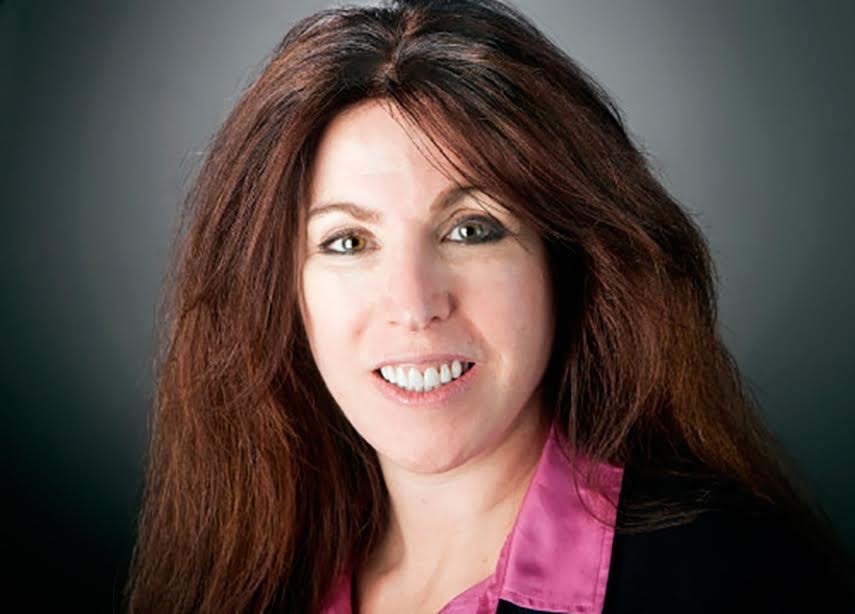
On this date in 1961, Robyn Ellen Blumner was born in New York City. She grew up in Glen Cove and graduated from Cornell University with a B.S. in industrial and labor relations in 1982 and from the New York University School of Law in 1985. She worked as a labor lawyer in New York and volunteered for the American Civil Liberties Union after graduation, becoming executive director of the Utah ACLU from 1987 to 1989 and the Florida ACLU from 1989 to 1997.
She worked as a columnist from 1998 to 2014 for the St. Petersburg Times (later the Tampa Bay Times) in Florida and served as a member of the editorial board. Her weekly column was nationally syndicated by Tribune Media Services. Blumner often wrote about issues of civil liberties, workers’ rights and the separation of church and state. Blumner openly declared her atheism in several of her columns. She was awarded the Freedom From Religion Foundation’s Emperor Has No Clothes Award in 2004 for her plain speaking on religion and the First Amendment.
In 2014 Blumner joined the Richard Dawkins Foundation for Reason and Science as executive director. After the 2016 merger of the Dawkins Foundation with the Center for Inquiry, Blumner took over from Ronald Lindsay as CEO and president of CFI. She is married and lives in Washington, D.C.
"My faith is in mankind and the marvels accomplished by human ingenuity and drive. Why that makes me a pariah to [Tampa City Council member Kevin] White and others like him is beyond my ken. It certainly says more about them than me."
— Blumner, "I'm an atheist — so what?” St. Petersburg Times (Aug. 8, 2004)
Seymour Hersh (Quote)
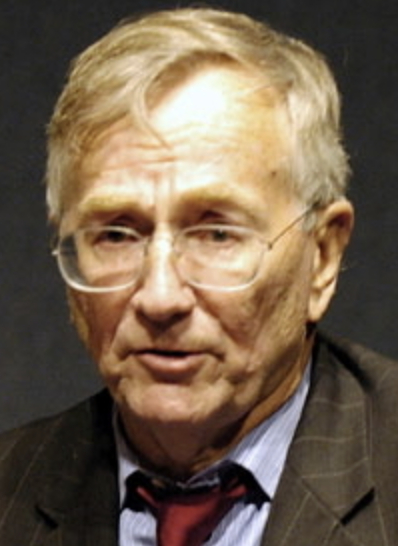
“Our country has been hijacked by a bunch of religious nuts. But how easy it was. That’s a little scary.”
— Investigative reporter and Pulitzer Prize winning author Seymour Hersh (1937-), speech at the University of Wisconsin-Madison on March 1, 2004 (Wisconsin State Journal, March 2, 2004)
Ron Reagan
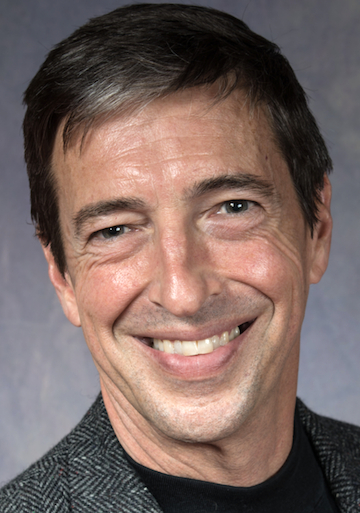
On this day in 1958, Ronald Prescott Reagan (Secret Service code name “Reliant”) was born in Los Angeles to Ronald Wilson Reagan and Nancy Reagan, the future U.S. president and first lady. As liberal as his famous father was conservative, Reagan stopped going to church when he was 12 and has publicly stated he’s an atheist numerous times. In 2004, he accepted FFRF’s Emperor Has No Clothes Award and spoke at the 2009 convention in Seattle.
Reagan grew up in Los Angeles and Sacramento, went to Yale University for a semester and then joined the Joffrey Ballet Company as a corps de ballet dancer. He left the Joffrey in 1983 and has since worked as a broadcast and print journalist and television and radio host. He co-hosted “Connected: Coast to Coast with Ron Reagan and Monica Crowley” on MSNBC, was a special correspondent for ABC’s “20/20” and “Good Morning America” and FOX News’ “Front Page,” as well as hosting the syndicated “Ron Reagan Show” starting in 1991.
He’s also done work for E! Entertainment Television, Animal Planet and American Movie Classics and has contributed to Newsweek, The New Yorker, Playboy, Los Angeles Times, Esquire and Interview. “The Ron Reagan Show,” syndicated by Air America Media, went on the air in 2008. Reagan serves on the Advisory Board of the Creative Coalition, a nonpartisan group founded in 1989 to mobilize entertainers and artists for causes such as First Amendment rights, arts advocacy and public education.
Reagan, along with his late mother, has been a strong supporter of embryonic stem cell research. “When you’re depriving people, potentially, of lifesaving or life-improving cures or treatments purely for political reasons, I find that to be really shameful.”
In a 2008 interview with The Hill newspaper, he was asked when he started questioning his father’s political beliefs: “Oh, puberty. Probably by age 12. That was when I told [my parents] I would no longer go to church with them because I was an atheist. One thing leads to another. It wasn’t a great leap to then disagree on politics.” Was he upset? “Yeah, but he wasn’t angry. He was a Christian and took it fairly seriously. He was worried that my life would be diminished if I didn’t accept Christ as my savior. We’d argue at the dinner table all the time, but I don’t think he was losing sleep over it.”
During a speech about stem cell research at the Democratic National Convention on July 27, 2004, Reagan voiced his opinion on church/state separation: “[I]t does not follow that the theology of a few should be allowed to forestall the health and well-being of the many.” The New York Times asked him in 2004, in an interview that ran three weeks after his father died, if he’d like to be president. “I would be unelectable,” Reagan said. “I’m an atheist. As we all know, that is something people won’t accept.”
Reagan, an honorary director of FFRF, generously recorded a radio spot for FFRF during Air America’s broadcast reign, then in 2014 agreed to record a TV ad for FFRF: “Hi, I’m Ron Reagan, an unabashed atheist, and I’m alarmed by the intrusion of religion into our secular government. That’s why I’m asking you to support the Freedom From Religion Foundation, the nation’s largest and most effective association of atheists and agnostics, working to keep state and church separate, just like our Founding Fathers intended. Please support the Freedom From Religion Foundation. Ron Reagan, lifelong atheist, not afraid of burning in hell.”
The ad ran on Comedy Central, CNN and MSNBC’s “Rachel Maddow Show” but was refused by CBS, NBC, ABC and Discovery Networks, apparently due to the irreverent reference to hell. The popularity of the quip has also inspired FFRF to produce a T-shirt, a bumper sticker and a lapel pin saying “Unabashed Atheist, Not Afraid of Burning in Hell,” as well as a personalized online interactive digital “billboard.”
Reagan addressed the FFRF national convention in 2015, where he said: “Blind faith is the abdication of reason. You can’t have a functioning democracy when most of the people believe in a lot of nonsense. If you want good public policy, it has to be based on facts and evidence. Private beliefs invade public policy. All the politicians you see invoking God were just private citizens once, and now they are in Congress.”
In an interview (Jan. 17, 2020) with the Daily Beast after his FFRF ad ran during a Democratic debate, Reagan said he found it curious that people who invoke “freedom of religion really mean freedom to be bigots. ‘Who can we refuse service to?’ It starts with LGBTQ people. What about unmarried couples? What about divorced people? What about black people? You can find justification for almost anything in the Bible, and it’s ugly, cruel, and stupid. We’re on to them. We’ll keep speaking up.”
He married Doria Palmieri in 1980, 20 days after his father was sworn in as president. She died in 2014 at age 62 from complications of a neuromuscular disease. In 2018 he married Federica Basagni, an Italian who was one of Doria’s closest friends.
“As for hell, mocking this imaginary threat rather strikes at the heart of religious belief in a way that I suspect most believers only intuitively grasp. It's a crucial support in their house of cards. Without hell, heaven is pointless.”
— Reagan email statement to FFRF Co-President Annie Laurie Gaylor (April 23, 2019)
Margaret Fuller
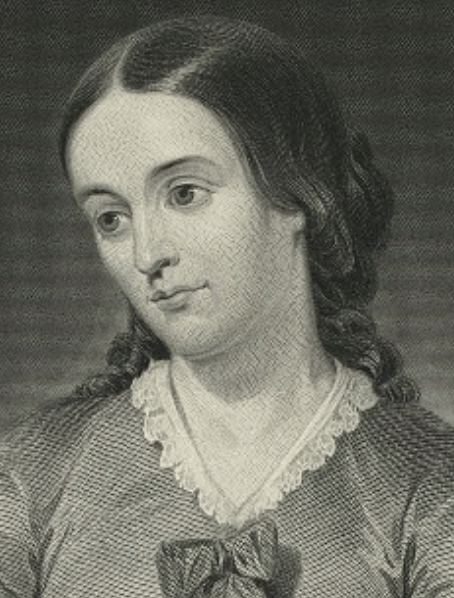
On this date in 1810, Margaret Fuller was born in Massachusetts, the first of nine children. Fuller became one of the foremost 19th-century women writers and critics. When her father died in 1835, she assumed financial headship of the family, teaching at Bronson Alcott’s Temple School. She translated Goethe and became editor of the Transcendentalist publication The Dial for two years under Ralph Waldo Emerson.
Her first book, Summer on the Lakes, was published in 1844, in which she observed the missionary harm to native Americans in the Midwest. At age 34, she became the first woman staff member of the New York Tribune, opening the doors of journalism to women and often writing of women’s needs.
Woman in the Nineteenth Century, in the vein of Mary Wollstonecraft‘s A Vindication of the Rights of Woman, came out in 1845: “Women are, indeed, the easy victims both of priestcraft and self-delusion; but this would not be, if the intellect was developed in proportion to the other powers.” As a foreign correspondent for Horace Greeley, Fuller traveled to Europe, where she befriended Italian republican revolutionary Giuseppe Mazzini.
Living in Rome, she met a handsome younger nobleman. They married secretly and had a son in 1848. When the republican cause was lost, they sailed to America, and were tragically drowned in a shipwreck on July 19, 1850, 50 yards from shore.
Her Memoirs, published posthumously, was bowdlerized by the Unitarian minister William Henry Channing, who put them together, according to biographer Bell Gale Chevigny. Chevigny documented pious salutations, such as “O Father,” inserted into Fuller’s words to soften irreverencies. Chevigny’s book, The Woman and the Myth, Margaret Fuller’s Life and Writings, restores Fuller’s original words. A possible Deist at most, Fuller wrote in 1842: “You see how wide the gulf that separates me from the Christian Church.” (D. 1850)
"Give me truth; cheat me by no illusion."
— Fuller, credo from "Memoirs," posthumously published in 1852 by Ralph Waldo Emerson, W.H. Channing and J.F. Clarke
Margaret Bourke-White
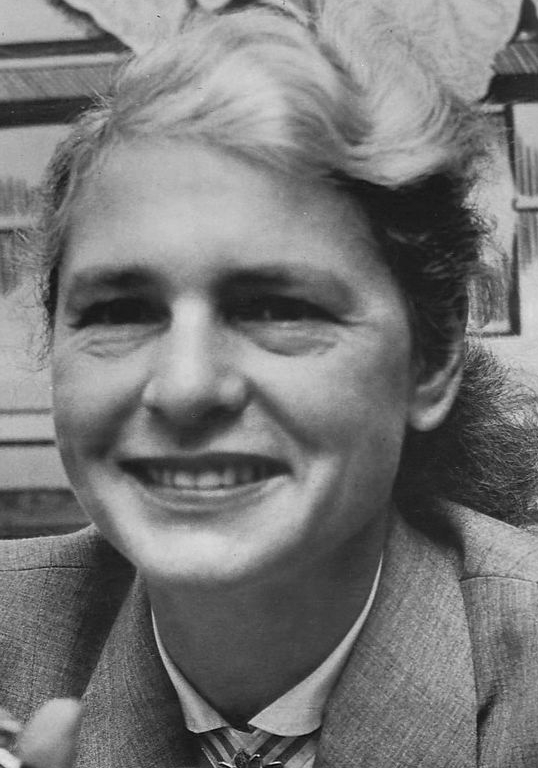
On this date in 1904, Margaret Bourke-White was born in Manhattan, the daughter of a couple who had been married by Felix Adler, founder of Ethical Culture. Her mother, Minnie Bourke, an Irish American, was a progressive feminist and reportedly an ardent atheist, who always told Margaret she was “invited into the world” as a planned child. Her father, Joe, an amateur inventor, encouraged Margaret’s intrepid interest in snakes and wild pets. Margaret graduated from Cornell in 1927 with a degree in herpetology (study of reptiles).
She was hired by Henry Luce to become a staff photographer for the nascent Time magazine. In 1930 she talked herself into Russia, filming as she traveled the Trans-Siberian Railway. She became Life’s first woman photographer and the first woman to have a photograph on its cover. In 1937 her book of haunting photographs of the Depression, with text by Erskine Caldwell, was published.
She was married twice, briefly as a very young woman, and from 1939-42 to Caldwell. Bourke-White became the first major female war correspondent, covering the invasion of Russia, traveling to North Africa by way of a convoy, which was torpedoed, documenting the war in the Pacific, the liberation of Italy and the liberation of the Nazi death camps. She met Gandhi several times, taking a photo of him spinning fabric just hours before he was assassinated. Her unforgettable photographs of South Africa informed the world of the injustice of apartheid.
She had surgery in 1956 for Parkinson’s disease and more surgery in 1961, which left her with impaired speech. In 1971 she fell and died later that year. Her books include Eyes on Russia (1931), Shooting the Russian War (1942), Purple Heart Valley: A Combat Chronicle of the War in Italy (1944), Dear Fatherland, Rest Quietly: A Report on the Collapse of Hitler’s “Thousand Years” (1946), Halfway to Freedom: A Report on the New India (1949) and Portrait of Myself, an autobiography (1963).
PHOTO: Bourke-White in 1955 on “Person to Person” on CBS.
"It was a strange little scene. Women were careening about in their cotton print dresses, and several times they nearly threw me off my feet and all but knocked my camera out of my hands as they waved their Bibles and shrieked their ‘Praise Be’s.’ “
— Bourke-White, "Portrait of Myself" (1963)
Roger Ebert
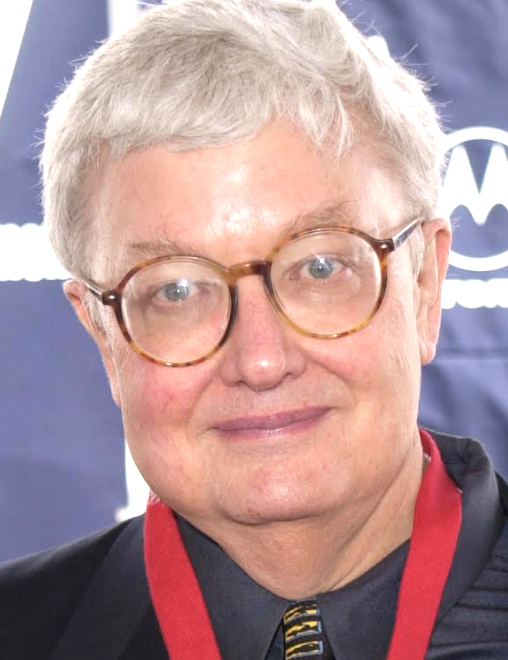
On this date in 1942, film critic Roger Ebert was born in Urbana, Illinois. Ebert became an icon in Chicago and around the world as a film critic whose reviews were honest, thoughtful and genuine. He attended the University of Illinois at Urbana-Champaign and graduated in 1964 with a degree in journalism. He was the editor of the university’s newspaper, the Daily Illini, and wrote his first movie reviews there.
Ebert moved to Chicago after graduation and began covering stories for the city editor of the Chicago Sun-Times in 1966. He became the newspaper’s movie critic in 1967, a position he held until his death over 40 years later. His work became syndicated in over 200 publications.
In 1975 he started a TV show with Gene Siskel, his counterpart at the Chicago Tribune. They became known for reviewing movies with either a thumbs up or a thumbs down. Ebert wrote many books, including several collections of movie reviews, a cookbook of recipes made with a rice cooker and a memoir. Ebert received honorary degrees from the American Film Institute and the University of Colorado at Boulder.
He won a Pulitzer Prize in Criticism in 1975, the first film critic to do so. He was also the first film critic with a star on the Hollywood Walk of Fame. In 2002 he was diagnosed with cancer of the thyroid and salivary glands and underwent several surgeries which removed part of his jaw and left him unable to speak. He continued to review movies throughout his illness and worked until shortly before his death.
Ebert, who grew up Catholic, chose not to define his religious beliefs, saying he is not an atheist and not a believer. He clarified his religious views in a blog post called “How I believe in God.” He said, “I have never said, although readers have freely informed me I am an atheist, an agnostic, or at the very least a secular humanist — which I am. If I were to say I don’t believe God exists, that wouldn’t mean I believe God doesn’t exist. Nor does it mean I don’t know, which implies that I could know.”
Ebert married Chaz Hammelsmith, an attorney, in 1992, at age 50 his first marriage, and was with her until his death at age 70. (D. 2013)
"I know it is coming, and I do not fear it, because I believe there is nothing on the other side of death to fear. I was perfectly content before I was born, and I think of death as the same state. What I am grateful for is the gift of intelligence, and for life, love, wonder, and laughter. You can’t say it wasn’t interesting."
— Ebert, blog post titled "Go Gentle into That Good Night" (May 2, 2009)
Ambrose Bierce
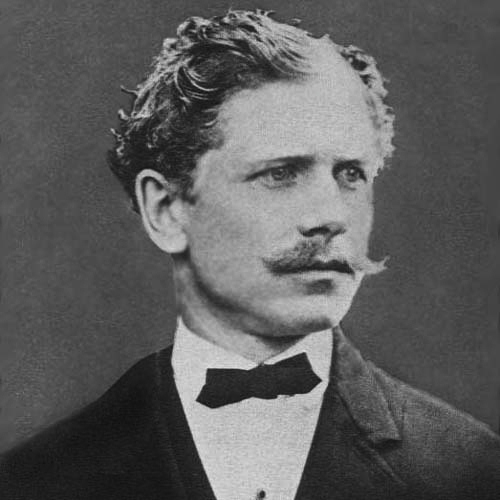
On this date in 1842, author Ambrose Bierce was born in a log cabin in Meigs County, Ohio, to Marcus Aurelius and Laura Sherwood Bierce. He left home at 15 to work as a “printer’s devil” for a newspaper. At 17 he enrolled at the Kentucky Military Institute and enlisted in the Union Army at age 19 in 1861. His Civil War experiences fed his Edgar Allan Poe-like “western Gothic” supernatural stories, numbering more than 90, which he wrote in middle age. After the war he honed his writing skills on atheistic tracts and drew a folio of political cartoons.
Bierce was hired as a journalist at several San Francisco newspapers, writing 167 weekly, satiric “Town Crier” columns later published in book form, The Fiend’s Delight (1872). Married in 1871, he and his new wife went on an extended honeymoon to England as a gift from his father-in-law. Bierce struck up friendships with the “Fleet Street Gang” and wrote for Figaro and Fun. Those columns were reprinted in book form as Cobwebs from an Empty Skull (1874). Bierce was hired by William Randolph Hearst in 1887 and worked for him for 21 years, inaugurating a column of witty epigrams.
Vintage Bierce: “Camels and Christians receive their burdens kneeling.” “Treat things divine with marked respect — don’t have anything to do with them.” His ghost story, An Occurrence at Owl Creek Bridge, is still anthologized. Bierce was at the height of his fame at the turn of the century when his lobbying defeated a bill by “railroad rogues” seeking massive forgiveness of debt to the government. In 1906 The Cynic’s Word debuted, later renamed The Devil’s Dictionary. It is his most-enduring freethought work.
Bierce’s personal life was rocky, with one son dying either of suicide or during a duel, another of pneumonia in his 20s, and Bierce’s marriage ending in divorce, earning him the nickname “Bitter Bierce.” In 1913, at age 70, he told friends during a visit to Texas that he was going south and was never heard from again. Bierce reputedly fought beside Pancho Villa and died in battle, although some believe Villa killed him in a quarrel. Others maintain Bierce never went to Mexico at all. He is believed to have died in 1914. A novel speculating about Bierce’s last days, The Old Gringo, was written by Carlos Fuentes in 1985 and was made into a movie starring Gregory Peck and Jane Fonda in 1989. (D. 1914)
* Christian (n.) One who believes that the New Testament is a divinely inspired book admirably suited to the spiritual needs of his neighbor. One who follows the teachings of Christ insofar as they are not inconsistent with a life of sin.
* Eucharist (n.) A sacred feast of the religious sect of Theophagi. A dispute once unhappily arose among the members of this sect as to what it was that they ate. In this controversy some five hundred thousand have already been slain, and the question is still unsettled.
* Evangelist (n.) A bearer of good tidings, particularly (in a religious sense) such as assure us of our own salvation and the damnation of our neighbors.
* Faith (n.) Belief without evidence in what is told by one who speaks without knowledge, of things without parallel.
* Infidel (n.) In New York, one who does not believe in the Christian religion; in Constantinople, one who does.
* Pray (v.) To ask that the laws of the universe be annulled in behalf of a single petitioner, confessedly unworthy.
* Religion (n.) A daughter of Hope and Fear, explaining to Ignorance the nature of the Unknowable.
* Reverence (n.) The spiritual attitude of a man to a god and a dog to a man.
* Saint (n.) A dead sinner revised and edited.— Bierce, "The Devil's Dictionary" (1906)
Eleanor Clift

On this date in 1940, Eleanor Clift was born in Brooklyn, N.Y. In the 1960s she became a secretary for Newsweek magazine and was one of the first women at Newsweek to be promoted to reporter. Clift became an accomplished political reporter, serving as deputy Washington bureau chief beginning in 1992, working as part of the 1992 election team covering Bill Clinton’s campaign and becoming a contributing editor for the magazine in 1994. Clift was Newsweek’s White House correspondent until 1985, when she briefly became White House correspondent for the Los Angeles Times.
She was a panelist on the political talk show “The McLaughlin Group.” Clift is also a writer who authored Founding Sisters and the Nineteenth Amendment (2003), as well as co-authoring two books with her husband Tom Brazaitis. When Brazaitis died after a long battle with kidney cancer, Clift wrote the 2008 memoir Two Weeks of Life: A Memoir of Love, Death and Politics about the deaths of Brazaitis and Terry Schiavo. Clift has appeared as herself in the films “Dave” (1993), “Independence Day” (1996), “Getting Away with Murder” (1996) and “Follow the Leader” (2002).
Clift was brought up Lutheran but in a 2008 interview with the Cleveland Plain Dealer, she said, “I’m closer to Tom’s [atheism] than to my early upbringing in the Lutheran church. I would probably label myself as an agnostic.” She gave a speech at the 31st annual Freedom From Religion Foundation convention in 2008 and was a guest on Freethought Radio on Sept. 27, 2008.
Public domain photo: Clift in 1999.
"Religion and politics are supposed to be separate."
— Clift, "Two Weeks of Life: A Memoir of Love, Death and Politics" (2008)
Josh Barro
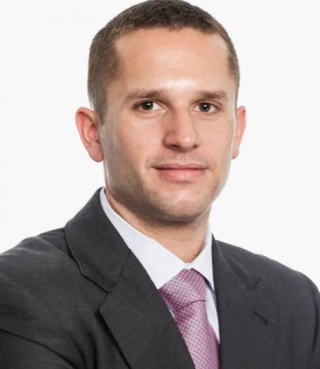
On this date in 1984, journalist Joshua “Josh” Barro was born to Judy and Robert Barro. The elder Barro, a co-founder of classical macroeconomic theory, was a senior fellow at Stanford University’s Hoover Institution as of this writing in 2021. He had first earned a B.S. in physics at Caltech while studying under Richard Feynman.
Barro graduated from high school in Boston and from Harvard University with a bachelor’s in psychology. He spent a summer in college interning for political activist Grover Norquist’s Americans for Tax Reform. He then worked as a policy research fellow at the Manhattan Institute, as a real estate broker for Wells Fargo, as lead writer for The Ticker — a Bloomberg economics and politics blog — a columnist for National Review and Forbes and as politics editor at Business Insider (now Insider Inc.)
He held several positions at different times at Insider and was founding correspondent at The Upshot, the economics and data section of The New York Times. He hosts Public Radio’s “Left, Right & Center” roundtable and contributes to MSNBC and other media across the political spectrum. Aides to President Obama told BuzzFeed News in 2013 that Barro was one of Obama’s favorite columnists. Time named Barro’s Twitter one of the 10 best political feeds in 2013. Forbes selected him in 2012 as one of the media’s 30 “brightest stars under the age of 30.”
Barro met his future husband Zachary Allen, a Democratic fundraiser and Obama alumnus, at the 2013 Human Rights Campaign National Dinner in Washington. They wed in 2017. “Anti-LGBT attitudes are terrible for people in all sorts of communities. They linger and oppress, and we need to stamp them out, ruthlessly,” he tweeted on July 23, 2014.
In an Insider column (Oct. 16, 2016) titled “Why I left the Republican Party to become a Democrat,” he wrote: “I became a Republican as a teenager because of my upbringing in Massachusetts, a state where the GOP has produced five good governors in my lifetime, from Bill Weld (now the Libertarian Party’s vice-presidential nominee) to Charlie Baker. I worked for Mitt Romney when he ran for governor, and while I did not like his presidential campaigns, I think he has a record in Massachusetts he can be proud of.
“The most important thing we have learned this year is that when the Republican Party was hijacked by a dangerous fascist who threatens to destroy the institutions that make America great and free, most Republicans up and down the organizational chart stood behind him and insisted he ought to be president.” He called out Sens. Ted Cruz and Marco Rubio and Rep. Paul Ryan for supporting Donald Trump.
Responding to a perhaps satirical tweet saying “In the absence of religion, men still need sin and guilt,” Barro wrote, “I mean, I’m an atheist and mostly just feel okay.” (Twitter, June 11, 2018)
“Mentioning that I am an atheist seems to have led to a bunch of email trying to convince me of the existence of god.”
— Barro tweet (Dec. 28, 2013)
William Makepeace Thackeray
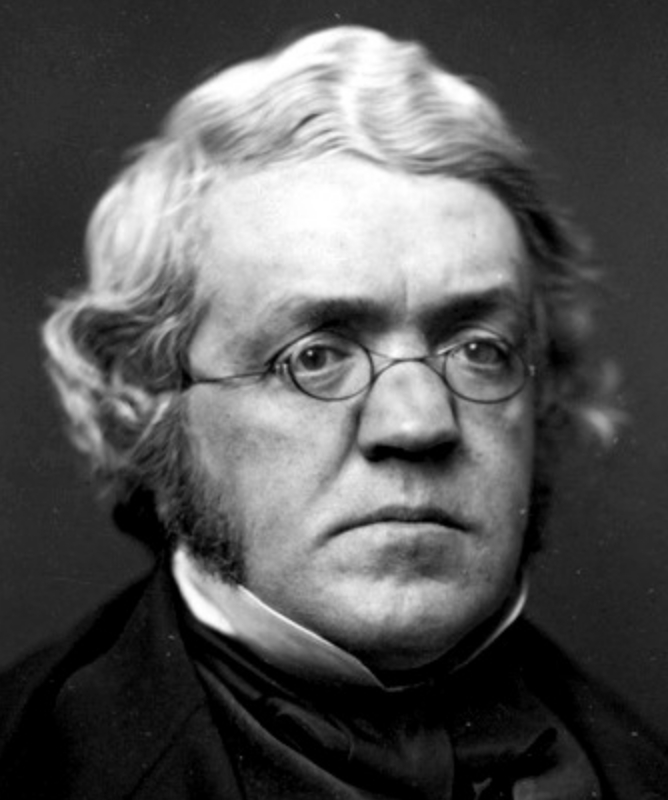
On this date in 1811, William Makepeace Thackeray was born in India. He was educated at Cambridge, Trinity College, met the aged Goethe in Germany, lost most of his inheritance through gambling or bad investments and then studied law. Thackeray decided to go into writing, lived in Paris for several years and then moved back to London for a journalism career.
Employing highly unlikely noms de plume such as “C.J. Yellowplush” and “George Savage Fitz-Boodle,” Thackeray eventually wrote for the periodical Punch. The Book of Snobs (1848) compiled sketches published weekly in Punch. Example: “Snobs are to be studied like other objects of Natural Science, and are a part of the Beautiful (with a large B).”
The satirist had success with The Paris Sketchbook (1840), Barry Lyndon (1844) and Vanity Fair, which was serialized in 1847-48 and introduced the amoral and memorable character of Becky Sharp. (“I think I could be a good woman if I have five thousand a year.”) For a time his popularity rivaled Dickens’ and, like Dickens, Thackeray lectured in the U.S. to great acclaim. His novel The Virginians, set in America, was published in 1858-59 after being serialized in 24 monthly parts.
Thackeray “seems to have formed no very definite creed.” (Life of W.M. Thackeray, by Herman Merivale, 1891.) “About my future state I don’t know. I leave it in the disposal of the awful Father.” (Life of W.M. Thackeray by Louis Melville, Vol. 2, 1899.)
After his wife had three daughters in three years, she suffered a permanent nervous breakdown. Thackeray and his mother took care of the girls. His daughter Harriet married Sir Leslie Stephen, a clergyman who became an agnostic. He died at age 52 of a brain aneurysm in 1863.
“Thackeray took away from Weimar a command of the language, a knowledge of German Romantic literature, and an increasing skepticism about religious doctrine.”
— "William Makepeace Thackeray: A Brief Biography" by Robert Fletcher, West Chester University
Hendrik Hertzberg
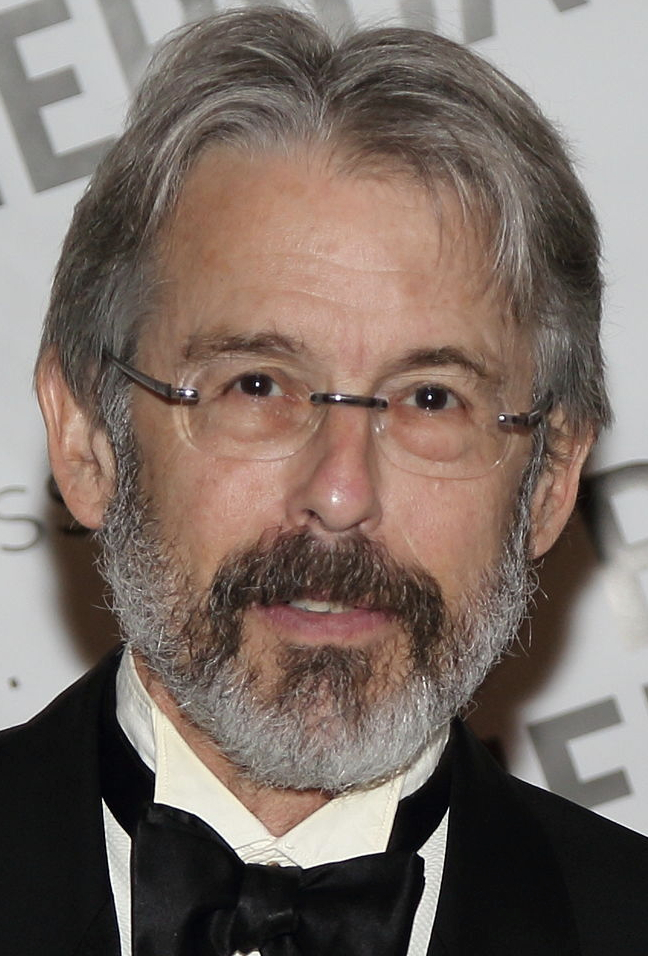
On this date in 1943, journalist Hendrik Hertzberg was born in New York City to Hazel Manross (née Whitman), a professor of history and education at Columbia University, and Sidney Hertzberg, a journalist and political activist. His father was Jewish and had become an atheist; his mother was a Quaker with a Congregationalist background. He graduated from Harvard University in 1965, where he wrote for the Harvard Crimson and became managing editor.
Shortly after graduation he started working as a reporter at the San Francisco bureau of Newsweek. During the Vietnam War he joined the U.S. Navy and was posted in New York City for two years. In 1969 he began writing for the New Yorker, a post he held until 1977. He worked as a speechwriter for Gov. Hugh Carey, then joined President Jimmy Carter’s speechwriting team and was made the head speechwriter in 1979.
Hertzberg became the editor of The New Republic in 1981 and held positions at the Institute of Politics and the Shorenstein Center on the Press, Politics, and Public Policy. Hertzberg joined The New Yorker in 1992 and worked as executive director, senior editor and was the main contributor to essays on politics and society in The Talk of the Town column until 2014.
Hertzberg’s books include One Million (1970), which attempts to make large numbers less abstract, Politics: Observations and Arguments (2005), which includes discussions on the Religious Right and the importance of secularism and humanism; and ¡Obamanos! The Birth of a New Political Order (2010), which chronicles the 2008 election. Forbes named Hertzberg the seventeenth most influential liberal in the U.S. media in 2005. He is married to Virginia Cannon, a Vanity Fair and New Yorker editor. They have a son, Wolf.
PHOTO: Hertzberg in 2014. Photo by Ed Lederman/PEN American Center under CC 2.0.
“The atmosphere of piety in American public life has become stifling. Where is it written that if you don’t like religion you are somehow disqualified from being a legitimate American? I’m pretty sure there is no such thing as God.”
— Hertzberg, "Politics: Observations and Arguments" (2004)
Helen Thomas
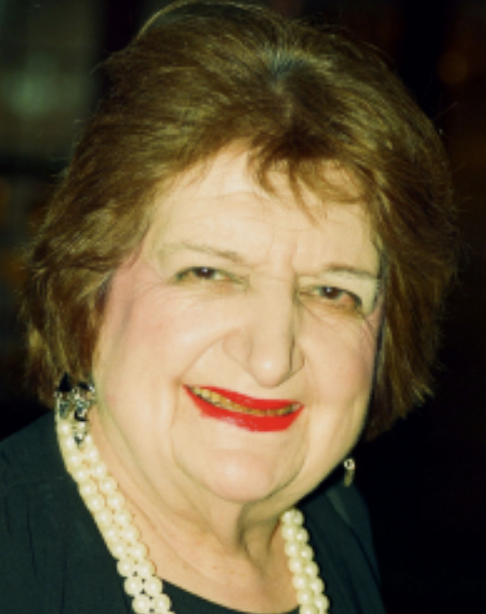
On this date in 1921, journalist Helen Amelia Thomas was born in Winchester, Ky., the seventh of nine children of Lebanese immigrants from Tripoli. She grew up in Detroit and graduated from Wayne State University in 1942 with a B.A. in English, then joined United Press International as a radio and news writer covering government. She was assigned to the White House in 1961, becoming the first woman White House correspondent.
In 2000 she resigned from a 57-year career at UPI after it was purchased by the Unification Church and then worked until 2010 as a columnist for Hearst Newspapers. Thomas was “tenacious and unrelenting in her condemnation of faith-based funding schemes, of our 180-degree changes in foreign policy to endorse preemptive strikes, of the war and of the secrecy and unanswered questions behind the war,” FFRF Co-President Annie Laurie Gaylor said in conferring Thomas’ “Friend of Freedom“ award at the 2003 national convention.
At the very first press conference President George W. Bush held, in February 2002, Thomas asked him about his new “faith-based initiative” to grant public dollars to religious charities:
Thomas: Mr. President, why do you refuse to respect the wall between the church and the state? And you know that the mixing of religion and government for centuries has led to slaughter. I mean, the very fact that our country has stood in good stead by having the separation — why do you break it down?
Bush: Helen, I strongly respect the separation of church and state —
Thomas: Well, you wouldn’t have a religious office in the White House if you did. … You are a secular official. And not a missionary.
At age 51 in 1971 she married Douglas Cornell, an Associated Press reporter who had just retired. Four years later he was diagnosed with Alzheimer’s and she cared for him until his death in 1982. Remarks seen as anti-Semitic that she made in 2010 about Israel’s territorial ambitions and treatment of Palestinians sullied her reputation and led to her resignation from Hearst and an apology. She died in 2013 at age 92. She was a member of an Antiochian Orthodox Christian congregation. (D. 2013)
PHOTO: Thomas at the National Press Club. CC BY-SA 2.0.
"Atheists pay taxes, too."
— Thomas, speech to the American Humanist Association (May 3, 2003)
Clara Bewick Colby
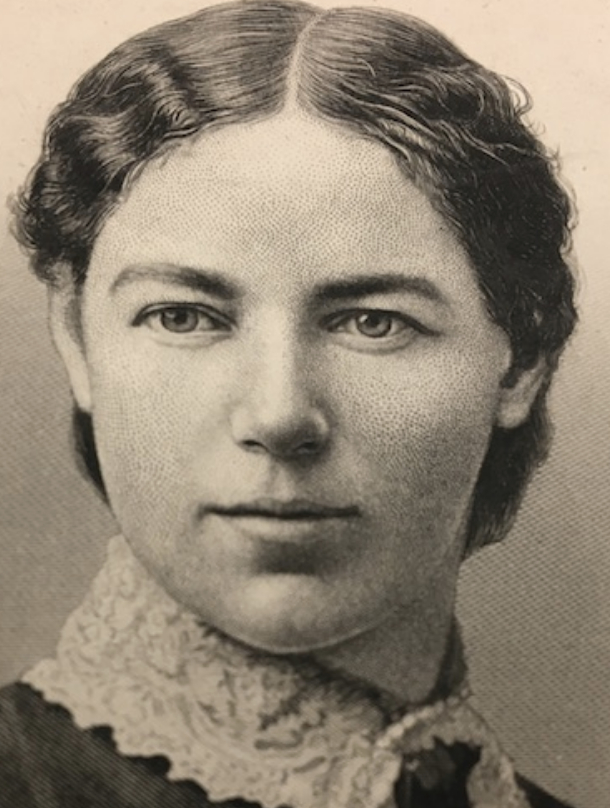
On this date in 1846, Clara Dorothy Bewick (later Colby) was born in Cheltenham, England. She moved with her parents when she was 8 to a farm near Windsor, Wis. As an early reader, she liked to memorize and recite and churned butter by keeping time to fearful hymns threatening “the hells of fire,” she recalled in a lecture. At 19, she moved to Madison and enrolled at the University of Wisconsin. Graduating in 1869 as valedictorian, she was instrumental in opening admission of the UW to women.
She taught history and Latin at the UW, then married Leonard Wright Colby in 1871 and moved to Beatrice, Nebraska. She served for 16 years as president of Nebraska’s Woman’s Suffrage Association. She founded The Woman’s Tribune in 1883 and published that organ of the National Woman Suffrage Association for 25 years, including daily editions through the suffrage conventions. As editor she also set type, was compositor and sometimes ran the press.
Legendary for her energy and work ethic, Colby and her husband adopted two children, including a Lakota Sioux infant, “Lost Bird,” found by Leonard in the arms of the girl’s slaughtered mother after Wounded Knee. Her husband later abandoned the family with the child’s nursemaid and they divorced in 1906. Colby raised the child by herself.
Colby was the first woman designated as a war correspondent during the Spanish-American War. She lectured in nearly every state for suffrage, as well as England, Ireland and Scotland. Colby belonged to the Congregational Church but introduced and defended resolutions denouncing patriarchal religious dogma, notably at the 1885 woman suffrage convention. She routinely featured her friend Elizabeth Cady Stanton‘s critiques of religion on the front pages of The Woman’s Tribune.
She died at age 70 of pneumonia and myocarditis in Palo Alto, Calif., and her ashes are buried in the Congregationalist cemetery near her childhood home in Windsor, Wis. (D. 1916)
Tom Brazaitis
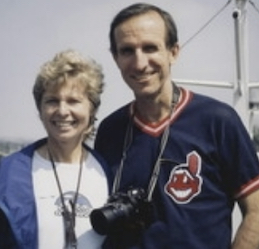
On this date in 1940, Tom Brazaitis was born in Cleveland, Ohio. He attended John Carroll University on a basketball scholarship in 1962, where he became captain of the basketball team as well as sports editor of the student newspaper, The Carroll News. Brazaitis worked as a political journalist for the Cleveland Plain Dealer from 1971 until 2002, becoming senior editor in 1998. He was chief of the newspaper’s Washington bureau for 19 years, covering President Nixon’s impeachment hearings.
He wrote a syndicated column for over 20 years that was published in numerous papers. He married political journalist Eleanor Clift in 1989, and the couple collaborated on two books, War Without Bloodshed (1997) and Madam President: Shattering the Last Glass Ceiling (2000).
In a 2008 speech given by Clift at the 31st annual national FFRF convention, Clift described him as “a card-carrying member of the Freedom From Religion Foundation.” He died at age 64 of kidney cancer in Washington, D.C. His battle with cancer was detailed in Clift’s 2008 book Two Weeks of Life: A Memoir of Love, Death and Politics. (D. 2005)
“Tom was a fallen-away Catholic who in the last years of his life proudly embraced atheism. And he did not flinch those last few months."
— Eleanor Clift, speech to the 31st annual FFRF convention in 2008
Charles Blow
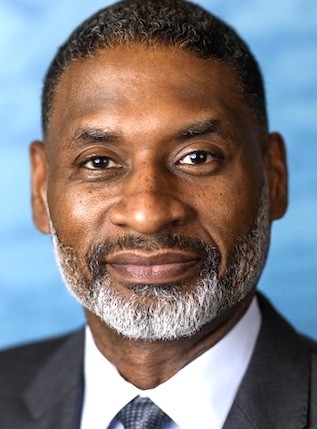
On this date in 1970, journalist Charles McRay Blow was born in Shreveport, La., the youngest of five sons of Toi “Billie” and Freddie Blow. After his parents divorced when he was about 5, he was raised by his mother and her extended family in Gibsland and attended Shiloh Baptist Church.
Gibsland was a town then of about 1,100 near where fugitive outlaws Bonnie Parker and Clyde Barrow were shot to death in 1934 by law officers. Gibsland schools were segregated until the late 1960s. Blow was class president from sixth to 12th grade and in his freshman and junior years at Grambling State University, where he graduated magna cum laude in 1991 with a degree in mass communications.
After graduation and marriage to his college sweetheart, he worked as a graphic artist at the Detroit News before taking a job as the New York Times graphics editor in 1994. He stayed with the Times until 2006 when he left to become art director for National Geographic’s magazine. It was around this time that he lost his religion, he told Annie Laurie Gaylor and Dan Barker in October 2024 on “Freethought Matters,” FFRF’s TV talk show: “When you’re touching fossils, the idea that the world is 12,000 years old doesn’t make sense anymore.”
Blow returned to the Times in 2008 as a featured columnist, a position he held until 2025 when he joined the faculty of Harvard University to accept the inaugural Langston Hughes Fellowship. The fellowship is hosted by the W.E.B. Du Bois Research Institute.
He had published his memoir “Fire Shut Up In My Bones” in 2014 in which he revealed how he was molested by an older male cousin and then later by an uncle. In the memoir, he also wrote how after he and his wife Greta divorced, he came out publicly as bisexual. Their children were born four years apart, son Tajh followed by boy-girl twins Ian and Iman. He started raising the children as a single parent when Tajh was 6. (BlackPast, May 16, 2020)
In 2021 he published “The Devil You Know: A Black Manifesto,” in which he advocates people of color moving to states where they can build a political majority. His memoir has been developed into an opera, the first by a Black composer to premiere at the Metropolitan Opera. “The Devil You Know” has been developed into a feature-length HBO documentary.
His columns and broadcast commentary express liberal views on social justice, racial equality, LGBTQ+ issues and national politics. A staunch critic of Donald Trump as president, he joined MSNBC as a political analyst in 2022. He has noted that the percentage of Republicans who accept the theory of evolution has declined precipitously.
“I believe this is a natural result of a long-running ploy by Republican Party leaders to play on the most base convictions of conservative voters in order to solidify their support. Convince people that they’re fighting a religious war for religious freedom, a war in which passion and devotion are one’s weapons against doubt and confusion, and you make loyal soldiers. There has been anti-science propagandizing running unchecked on the right for years, from anti-gay equality misinformation to climate change denials.” (New York Times, Jan. 3, 2014)
He says he’s experienced a personal evolution of sorts. “I have gone from the most devout born-again Christian to a more nebulous, nondoctrinal set of beliefs that do not necessarily align with organized religion. When people ask about my faith, I often reply, ‘unresolved.’ ” (New York Times, Jan. 7, 2011)
Fast forward several years (see featured quote below), and it’s clear he kept evolving. He accepted FFRF’s Emperor Has No Clothes Award at the 2024 national convention in Denver. It’s reserved for public figures who speak out to puncture fairy tales about religion.
PHOTO: Blow at FFRF’s national convention in 2024; photo by Chris Line.
“People often ask my views on religion. Here goes: Human beings needed something to explain the things they couldn't understand or contemplate, so they created religion. It's a way of relieving anxiety and enforcing man-made morality. Our brains are magical, so they invented magic.”
— Blow tweet on X (formerly Twitter), Oct. 13, 2019
Paul Morantz
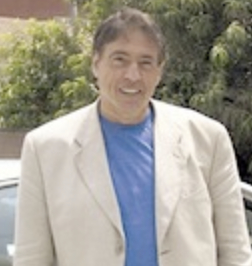
On this date in 1945, attorney Paul Robert Morantz, renowned for litigating against religious cults, was born in Los Angeles to Jeanette (Kates) and Nathan Morantz. His father owned a meatpacking business and his mother was a homemaker.
His skepticism started early, Morantz wrote in his 2012 memoir “Escape: My Lifelong War Against Cults.” He remembered listening when he was 12 to the rabbi during Passover services talking about leaving an offering outside the home for a biblical angel. His memoir recounted how he objected to his parents after they caught him leaving the house with a baseball bat: “I can’t believe you are all celebrating this. I can’t accept the idea that God would murder innocent children. I’m going outside to hide and when the Angel of Death comes for his wine and matzo, I’m going to bash him so he won’t ever harm a child again.”
After high school he served six months in the Army Reserves, then attended Santa Monica City College. Transferring to the University of Southern California, he studied journalism and covered sports for the campus Daily Trojan, graduating in 1968. Journalism was his true love but, encouraged by his father, he went on to earn a USC law degree three years later.
In 1974 he took on the case of Skid Row alcoholics picked up off the street in downtown L.A. and effectively sold to mental institutions. They were drugged to the point of incoherence so the facilities could fraudulently bill Medicare. He spent over two years winning a settlement for the victims. He really burst into public consciousness while successfully representing clients suing Synanon, a quasi-religious cult with a paramilitary wing. Founded by Charles Dederich as a drug and alcohol rehabilitation center in Santa Monica, it would grow into an organization with adherents nationwide and overseas.
About three weeks after winning a $300,000 settlement against Synanon in 1978, Morantz opened his mailbox and was bitten by a rattlesnake, 4½ feet long, with the rattle removed. Dederich and two men he hired to place the snake were convicted. One was 20-year-old Lance Kenton, the son of swing band leader Stan Kenton. The judge called the attack an “aberration” and imposed light sentences due to Synanon’s history of helping addicts. Dederich received five years’ probation.
Morantz had learned that self-help guru Werner Erhard, the founder of Erhard Seminars Training (EST), was lobbying a small town to let him “train” its employees. Morantz intervened and turned the town against him. In 1978 he tried unsuccessfully to win the release of a client’s son from the People’s Temple, whose leader, Jim Jones, later led several hundred of his followers in a mass suicide in Guyana.
He represented 40 ex-followers of the Center for Feeling Therapy, a New Age movement that used “sluggo therapy” in which members beat each other, supposedly to release suppressed anxieties. He also helped ex-members of the Rev. Sun Myung Moon’s Unification Church in a case in which the California Supreme Court ruled in 1988 that religious organizations could be sued for fraud. Scientology, Hare Krishnas, followers of swami Bhagwan Shree Rajneesh, among others, felt the sting of his litigation.
Twice over two decades, he successfully went after psychologist/minister John Gottuso, accused of sexually abusing his female followers and even the daughters of the women. In another case, he helped bring to justice a psychotherapist who converted his patients to Hasidic Jews so he could become their rabbi and control their lives.
He married Maren Elwood in 1984; they divorced in 1988. Their son, Chaz Morantz, was an engineer on the NASA team that built the Mars rover Curiosity, still operating as of this writing in December 2022 after landing in 2012.
All the while, Morantz wrote extensively about the cases he was involved in, along with a broad range of cultural and political topics, including jaundiced views of Donald Trump. They are archived at paulmorantz.com. He died at age 77 at home. (D. 2022)
PHOTO: Morantz in 2003 outside his home in Pacific Palisades, Calif.
"Whether we worship single or multiple deities, Mother Nature or the Church of the Divine Meatloaf, our populace seems hard-wired to believe in some greater force. When groups use the power of peer pressure and brainwashing to control people and make them surrender their autonomy, their money or their moral compass, I feel compelled to step in."
— "Escape: My Lifelong War Against Cults" by Paul Morantz with Hal Lancaster (2012)
Taslima Nasrin
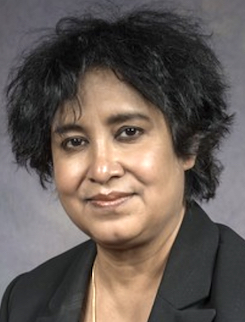
On this date in 1962, freethinker, atheist and feminist Taslima Nasrin was born in Mymensing, Bangladesh, to a Sufi physician and a devoutly religious mother. Nasrin later became the target of a series of fatwas, or religious sanctions, condemning her to death for blasphemy.
“I came to suspect that the Quran was not written by Allah but, rather, by some selfish, greedy man who wanted only his own comfort,” Nasrin explained in her speech accepting a Freethought Heroine Award at the 25th annual FFRF convention in 2002. “So I stopped believing in Islam. When I studied other religions, I found they, too, oppressed women.” She has often stated, “Religion is the great oppressor, and should be abolished.”
Nasrin earned an MBBS degree in 1984 and worked in gynecology and anesthesiology departments in medical colleges and universities. Her books of poetry began being published in the late 1980s, then she started writing popular columns on women’s rights in newspapers and magazines, which were collected in book form. In 1992, she received the prestigious Indian literary award “Ananda” for her book of essays. Nasrin reports that Islamic fundamentalists started campaigns against her by 1990, with demonstrations escalating over the next few years, including having her books burned at the national book fair.
When the novella “Shame” came out in 1993, about the plight of Hindus under Muslim order, it was banned, she was attacked at the national book fair, the first of three fatwa was issued, and a bounty on her head was offered. The Bangladeshi government brought criminal charges against her for defaming the Muslim faith the following year. Thousands in Bangladesh demonstrated regularly, sometimes daily, demanding her death. After a terrifying two months in hiding, and fearing the fate of Hypatia, Nasrin fled Bangladesh, seeking refuge in Sweden.
In a 1994 interview with The New Yorker, she said, “I want a modern, civilized law where women are given equal rights. I want no religious law that discriminates, none, period — no Hindu law, no Christian law, no Islamic law. Why should a man be entitled to have four wives? Why should a son get two-thirds of his parents’ property when a daughter can inherit only a third?”
Nasrin, a “woman without a country,” has also lived in France, the U.S. and Germany, living, for the most part, in India.
Among the dozens of awards and honorary doctorates she has received is the Sakharov Prize (1994). In addition to receiving FFRF’s 2002 Freethought Heroine Award, she was the recipient in 2015 of its Emperor Has No Clothes Award and said, “Islam is not compatible with human rights, women’s rights, freedom of expression and democracy.” She has continued to lecture, speak out and write, including a multi-book autobiography.
PHOTO: Nasrin at FFRF’s national convention in 2015; Ingrid Laas photo.
“There has always been a marked conflict between religion and science, and every time science emerges as the winner, as science bases itself on facts, not faith. It supports what is tested and is true and truth cannot be hidden by lies for a very long time. To abolish all kinds of hypocrisy from my country, we need more atheists to speak the truth.”
— Nasrin, accepting the Emperor Has No Clothes award in 2015
H.L. Mencken
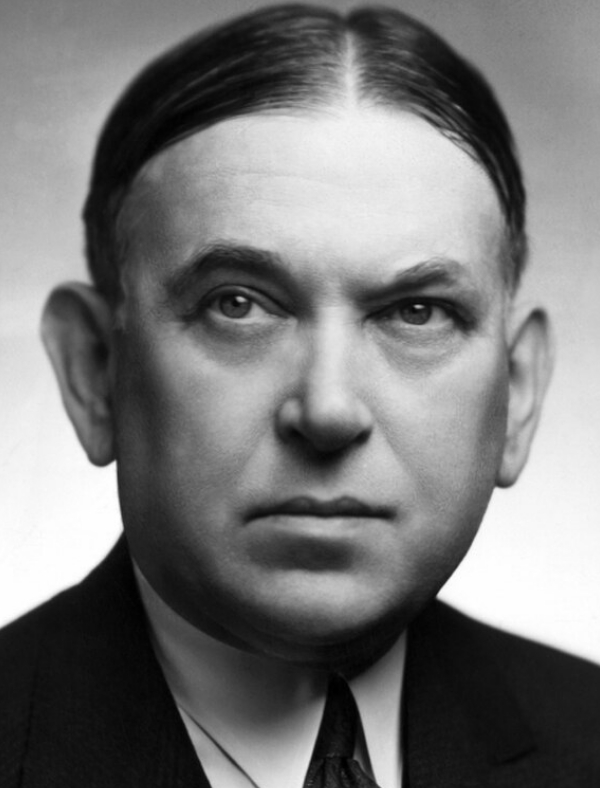
On this date in 1880, H.L. (Henry Louis) Mencken, atheist and journalist, was born in Baltimore. Although his father was agnostic, his Lutheran mother sent him to Sunday school, which he later defined as “a prison in which children do penance for the evil conscience of their parents.” (A Mencken Chrestomathy,1949.) The cigar-chomping, iconoclastic journalist worked most of his life at the Baltimore Sun, where he began his trademark column, “The Free Lance,” in 1911.
Mencken also co-edited Smart Set magazine (1914-23) and edited The American Mercury magazine (1925-33). His lifetime production of 28 books included a six-volume collection of his essays, Prejudices (1919-27), In Defense of Women (1917), Treatise of the Gods (1930) and an autobiographical trilogy, ending with Heathen Days, published as one volume in 1947.
A sardonic critic of the “booboisie,” he coined the term “Boobus americanus” and was famed for his coverage of the 1925 Scopes trial in Dayton, Tenn. Mencken’s many epigrams include: “Faith may be defined briefly as an illogical belief in the occurrence of the improbable.” (The New York Times Magazine, Sept. 11, 1955). “The chief contribution of Protestantism to human thought is its massive proof that God is a bore.” (Minority Report, 1956.) “No one in this world, so far as I know … has ever lost money by underestimating the intelligence of the great masses of the plain people.” (“Notes on Journalism,” Chicago Tribune, Sept. 19 1926.) “Puritanism — the haunting fear that someone, somewhere may be happy.” (A Mencken Chrestomathy, 1949.)
In 1930, after a seven-year courtship, he married Sara Haardt, a professor of English at Goucher College in Baltimore and an author 18 years his junior. Haardt had led efforts in Alabama to ratify the 19th Amendment. Haardt was in poor health from tuberculosis throughout their marriage and died in 1935 of meningitis. Mencken suffered a stroke in 1948, which left him aware and fully conscious but nearly unable to read or write and able to speak only with difficulty. He died in his sleep at home in Baltimore at age 75. (D. 1956)
“I believe that religion, generally speaking, has been a curse to mankind — that its modest and greatly overestimated services on the ethical side have been more than overcome by the damage it has done to clear and honest thinking.”
“I believe that the evidence for immortality is no better than the evidence of witches, and deserves no more respect.”
— "Mencken's Creed," cited by George Seldes, ed., "The Great Thoughts" (1985)
Ted Gup
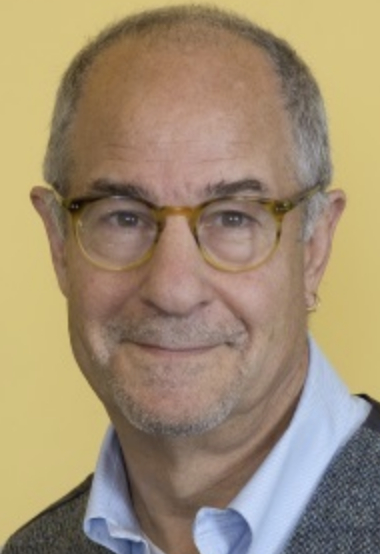
On this date in 1950, journalist, author and professor Ted Gup was born in Canton, Ohio. Of Jewish heritage, after attending Trinity University in Ireland he earned a B.A. in classics from Brandeis University and a J.D. from Case Western Reserve University School of Law. He was a longtime Washington Post reporter and later worked for Time magazine. Gup has written for many national publications, including Smithsonian, National Geographic, New York Times, Boston Globe, The Village Voice, Sports Illustrated, Slate, GQ, Mother Jones, Audubon, the Columbia Journalism Review and NPR. Much of his work has championed more transparency in government.
Gup has worked in multiple academic positions, including a professor of journalism at Case Western Reserve and as chair of the journalism department at Emerson College in Boston. He has received more than 20 awards for his writing, including the George Polk Award, the Worth Bingham Prize, the Gerald Loeb Award, the Investigative Reporters and Editors Book-of-the-Year Award for his best-seller The Book of Honor: Covert Lives and Classified Deaths at the CIA (2000) and the Goldsmith Book Prize for Nation of Secrets: The Threat to Democracy and the American Way of Life (2007).
Gup has been a Pulitzer finalist, Fulbright Scholar, MacArthur Fellow and Guggenheim Fellow. Gup is also the author of A Secret Gift (2010), a frequent contributor to news programs on CNN, PBS and NPR and a public speaker in high demand. In the wake of his 21-year-old son’s 2011 death from a heroin and alcohol overdose, he said he had become a nonbeliever.
"I had nearly forgotten how death plays out over time — not the biological episode that collapses it all into a nanosecond of being and nonbeing, but the slower arc of our leaving — sorting through the mail, paying the bills, stumbling upon notes. … Have I no more than these solicitations, the invitations, these letters delivered late? I do. I have memories. I have places where I feel both his closeness and his distance. And I have the all-too-brief visitations allowed in dreams. For the nonbeliever I've become, it is what passes for an afterlife."
— Gup, "The Afterlife," New York Times op-ed on getting mail addressed to his son over two years after his death (July 12, 2014)
Simon Singh
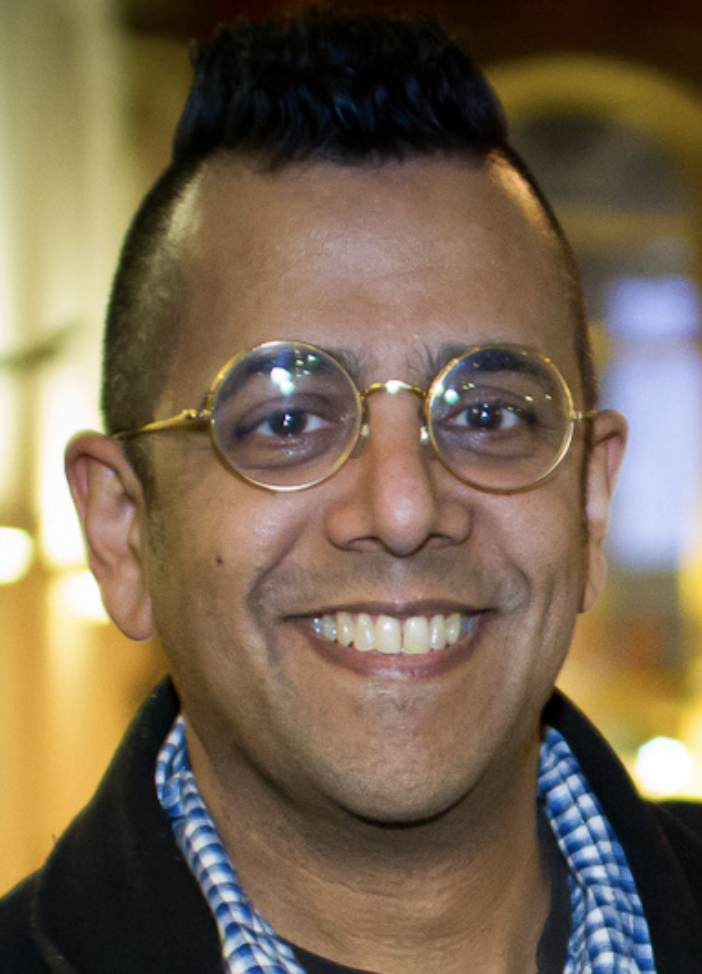
On this date in 1964, Simon Singh was born in Somerset, England, after his parents immigrated to Britain from the Punjab region of India. He majored in physics at the Imperial College in London and received his Ph.D. in 1991 in particle physics from Cambridge University and at CERN, the European Organization for Nuclear Research in Geneva. He eventually became a writer with a focus on math and science. The BBC science department hired Singh in 1990.
He directed the 1996 BAFTA award-winning documentary on a math theorem titled, “Fermat’s Last Theorem.” NOVA showed the documentary in the U.S. under the title “The Proof,” which received an Emmy nomination. Singh turned the documentary into his first book, called Fermat’s Last Theorem in Britain and Fermat’s Enigma in the U.S. In 1999 he published his second book, The Code Book: The Evolution of Secrecy From Mary, Queen Of Scots to Quantum Cryptography. He wrote Big Bang: The Most Important Scientific Discovery of All Time and Why You Need To Know About It in 2004.
His article in April 2008 criticizing chiropractic, an alternative medicine that uses manual therapy, resulted in the British Chiropractic Association suing for libel in a case that Singh won after two years. He became an advocate for fairer libel laws via the Libel Reform Campaign in Britain and co-wrote Trick Or Treatment?: Alternative Medicine on Trial in 2008. Singh is active in the skeptic community. He married journalist Anita Anand in 2007. They live in London with their two sons.
PHOTO: By Richardc39 under CC 3.0.
"For tens of thousands of years, humans have stared up into the heavens and wondered about the origin of the universe. Up until now every culture, society, and religion has had nothing else to turn to except its creation myths, fables, or religious scriptures. Today, by contrast, we have the extraordinary privilege of being the first generation of our species to have access to a scientific theory of the universe that explains its origin and evolution."
— Singh, CNN.com op-ed, "Why I'm dreaming of a white-noise Christmas" (Dec. 24, 2010)
Walter Lippmann
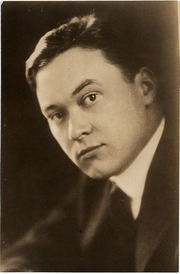
On this date in 1889, Walter Lippmann was born in New York City. He graduated from Harvard University in 1909 and went on to become a prominent journalist, editor and author. He became co-founder and editor of The New Republic in 1913, editor of the New York World in 1923 and a columnist for the New York Herald Tribune in 1931. At the Herald Tribune, Lippmann wrote the nationally syndicated column “Today and Tomorrow,” which ran in 250 newspapers for more than 30 years.
Lippmann was also a prolific author whose works include A Preface to Politics (1913), Public Opinion (1922) and The Cold War (1947), which popularized the term “cold war.” He was a U.S. delegate to the Paris Peace Conference of 1919 at the close of World War I, where he helped to write the Covenant of the League of Nations. Lippmann was awarded two Pulitzer Prizes in 1958 and 1962 for his column “Today and Tomorrow,” as well as the Presidential Medal of Freedom in 1964. He married Faye Albertson in 1917. After their divorce in 1937, he married Helen Armstrong in 1938.
In his popular book A Preface to Morals (1929), Lippmann writes about having morality without religion and explains that religion should not be a modern source of morality. “When men can no longer be theists, they must, if they are civilized, become humanists,” he wrote. “Once you weaken the belief that the central facts taught by the churches are facts in the most literal and absolute sense, the disintegration of the popular religion begins.” (D. 1974)
“The radical novelty of modern science lies precisely in the rejection of the belief, which is at the heart of all popular religion, that the forces which move the stars and atoms are contingent upon the preferences of the human heart."
— Lippmann, quoted in "2000 Years of Disbelief" (1996) by James A. Haught
Georges Clemenceau
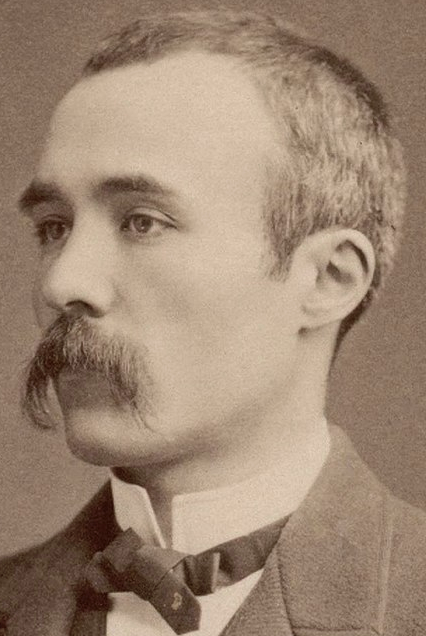
On this date in 1841, French statesman and journalist Georges Clemenceau was born in France. Clemenceau followed in his father’s footsteps by becoming a physician and a freethinker. At 16 he was briefly suspended from school for debating Christianity with a teacher. Clemenceau began writing for Emile Zola‘s newspaper Travail, advocating a republic and free speech, and served 63 days in jail in 1862 as a student demonstrator under the reign of Napoleon III.
As a foreign correspondent for Le Temps, he went to New York City in 1865. He met his wife-to-be teaching French at a ladies seminary in Connecticut. Clemenceau’s book The Great God Pan (1869) described how superstitions live on under new guises. He also translated John Stuart Mill’s book Auguste Comte and Positivism. Returning to France, he became mayor of Montmartre, served as a member of the Paris Municipal Council (1871-76) and was elected five times to the National Assembly.
During an interlude when he left politics, Clemenceau returned to journalism. His newspaper articles, permeated with anti-clericalism and the promotion of rationalism, eventually were bound into 19 volumes. He contributed to L’Aurore newspaper and worked tirelessly for the release of Alfred Dreyfuss, writing more than a thousand influential articles about the case.
Known as “The Tiger,” the politician returned to the Assembly in 1902, became interior minister, then prime minister (1906-09). Clemenceau was again elected prime minister in 1917 and was toasted as “Pere Victoire” (Father Victory) at the close of World War I. Clemenceau was a connoisseur of the arts and a personal friend of Rodin. He was buried, per instructions, with no rites. D. 1929.
"Not only have the ‘followers of Christ’ made it their rule to hack to bits all those who do not accept their beliefs, they have also ferociously massacred each other, in the name of their common ‘religion of love,’ under banners proclaiming their faith in Him who had expressly commanded them to love one another."— Clemenceau memoir, "In the Evening of My Thought" (Au Soir de la pensee), 1929
Gene Weingarten
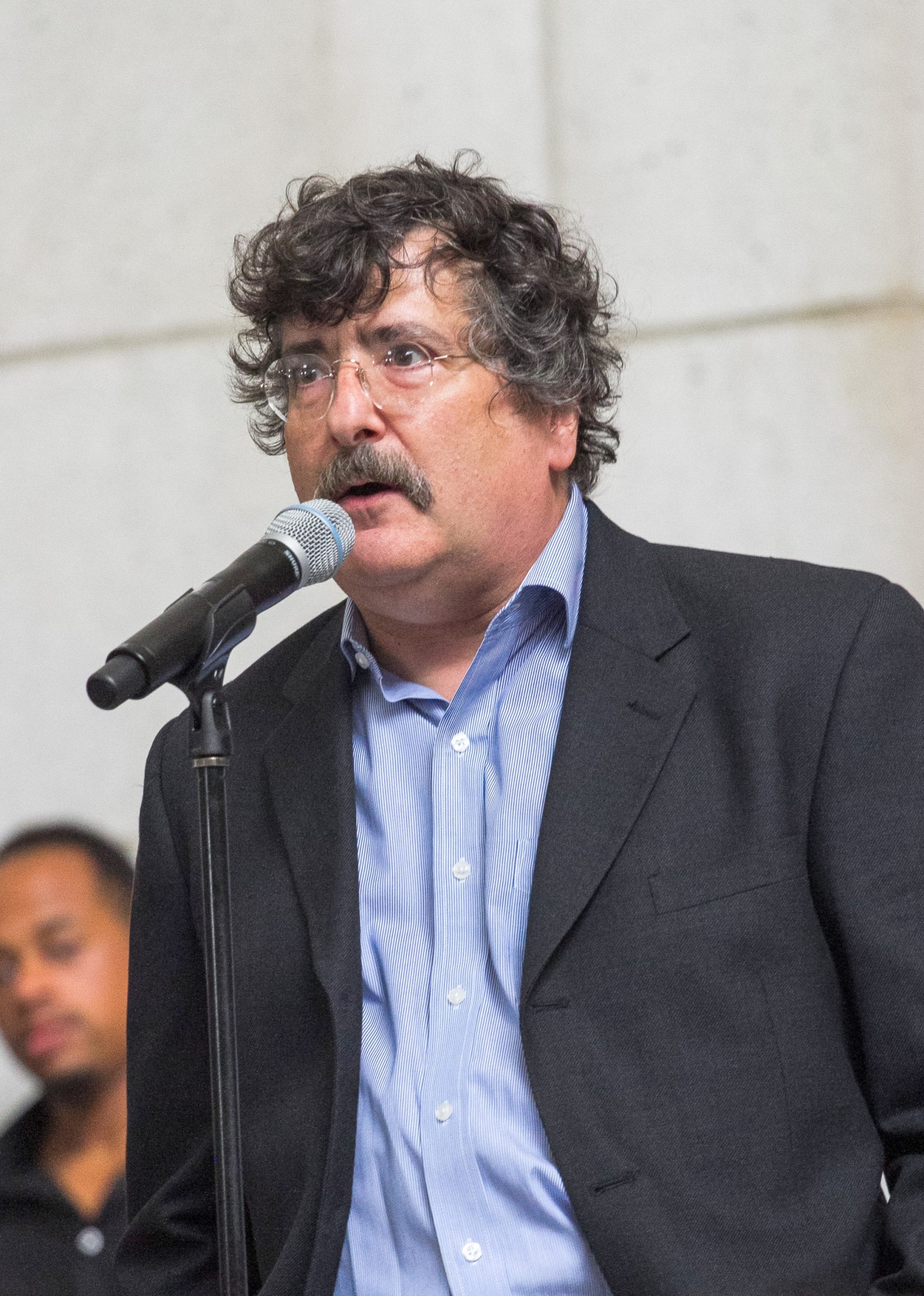
On this date in 1951, Pulitzer Prize-winning journalist Gene Norman Weingarten was born in New York City. He attended the Bronx High School of Science and New York University. At NYU he edited the daily student newspaper. He garnered his first cover story in 1972 while still in college when his reporting on gangs in the South Bronx was published in New York magazine.
After working as a journalist in Albany and Detroit, he was hired as the editor of the Miami Herald Sunday magazine Tropic. In Weingarten’s nine years as editor, Tropic was awarded two Pulitzer Prizes. In 1990 he went to work as a nationally syndicated humor columnist with the Washington Post.
Weingarten is the author of five books. His first, The Hypochondriac’s Guide to Life. And Death (1998) recounts his near-fatal bout of hepatitis C and his admitted hypochondria. In 2004 he and feminist writer Gina Barreca wrote I’m With Stupid: One Man, One Woman — 10,000 Years Of Misunderstandings Between the Sexes Cleared Right Up. His next book, Old Dogs: Are the Best Dogs (2008), was a collaboration with photographer Michael Williamson.
Weingarten says he’s an atheist who doesn’t proselytize, which is the basis of Christianity. “It’s an essential problem with religion in that it is, by its nature, exclusionary.” In 2014 he published a children’s book, Me & Dog. It tells the story of a boy and his dog through a secular lens, countering massively popular books like Heaven Is for Real, a 2010 book later made into a movie that purportedly told a 3-year-old boy’s near-death story of his trip to heaven and back during appendicitis surgery. His father was a Nebraska pastor.
In 2010 Weingarten was awarded a Pulitzer for Feature Writing for “Fatal Distraction,” his story about parents who accidentally kill their children by forgetting them in cars. That same year he and his son Dan started publishing the syndicated comic strip “Barney & Clyde,” illustrated by David Clark. In 2014 he was awarded the National Society of Newspaper Columnists’ Ernie Pyle Lifetime Achievement Award.
“Atheists always get this question: How can you be an ethical, moral person? Which is annoying and insulting. It demonstrates a fundamental disconnect. Do you really need fear of hell to make you do good, moral things? I don't need to fear the devil to do good, I know that it's fundamentally right to do good. And that's what I tried to teach my children. I have ethical and moral children.”
— Weingarten, Washington Post interview about his children's book "Me & Dog" (Sept. 17, 2014)
Frank Bruni
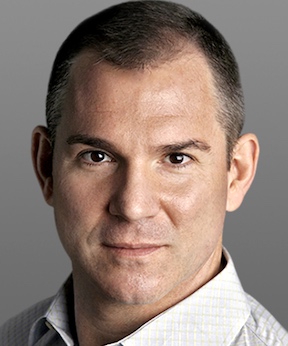
On this date in 1964, journalist and author Frank Anthony Bruni Jr. was born in White Plains, N.Y., to Leslie (Frier) and Frank Bruni Sr. His father was the eldest child of relatively poor immigrants from southern Italy. English was his second language. He married his high school sweetheart, graduated on a full scholarship from Dartmouth College, served a U.S. Navy hitch and embarked on a long public accounting career in which he rose through the ranks to positions of wealth and prominence.
Frank Jr. grew up in New York and Connecticut with two brothers and a sister, then earned a B.A. in English from the University of North Carolina at Chapel Hill and a master’s in journalism from Columbia University in New York. After reporting jobs at the New York Post and Detroit Free Press, in 1995 he joined the New York Times, where his various roles over time included reporter, op-ed columnist, White House correspondent, Rome bureau chief and chief restaurant critic.
As the Times’ first openly gay op-ed columnist, Bruni was honored in 2016 by the National Lesbian and Gay Journalists Association with an award for his contributions to LGBTQ+ equality. He told his mother but not his dad when he was 17 that he was gay. “She implored me not to tell him — too risky, she said — and to let her handle it. A few years later, she informed me that she’d done so, and that was that. Dad said nothing to me. I said nothing to him.” (“A Father’s Journey,” New York Times, Dec. 22, 2012)
Bruni wrote that after his mother died at age 61 in 1996, “all the parenting fell to Dad. He tapped reserves I’d never imagined in him. When I broke up with the man he’d been so effusive toward, he must have told me six times how sorry he was about that. It was a message — that he was rooting for my happiness, no matter how that happiness came to me.” He admitted to his dad he felt guilty about burdening him with his unconventional sexuality. “He shook his head: ‘I almost think I love you more for it — for being what you are rather than what was expected of you.’ ” (Ibid.)
He became a full professor in 2021 at Duke University in North Carolina, teaching media-oriented classes in the Sanford School of Public Policy while continuing to write a weekly newsletter and occasional essays for the Times. In his newsletter on April 10, 2025, he wrote how during a panel discussion at the University of North Carolina, “I alone didn’t profess a belief in God or locate my morality in any formal creed. … Where, absent religion, did I find meaning in life? That question wasn’t put to me in exactly those words. But it was the gist of many of the prompts that came my way, and I struggled to respond to them, maybe because the audience’s skepticism about me was palpable, maybe because the hour was late.”
Instead, he added, he should have said: “I find meaning in a catchy melody. I find meaning in an artful turn of phrase. I find it in an entirely unnecessary kindness that I extend to someone or a wholly volitional gesture of courtesy that someone extends to me. I guess I’m saying that I find meaning in beauty — in our instinct and ability to fashion moments of grace that have nothing to do with survival and everything to do with transcendence.”
He was a finalist for the 1992 Pulitzer Prize in feature writing for his profile of a convicted child molester. He has written extensively about religion, and among his seven books as of this writing is “A Gospel of Shame: Children, Sexual Abuse, and the Catholic Church” (1993), co-written with Elinor Burkett. The most recent is “The Age of Grievance” (2024), an examination of America’s political dysfunction and culture wars.
Bruni respects people of faith and salutes the works of compassion and social justice that many of them and their congregations engage in, but he’s also fully aware of religion’s negative aspects. He has pushed hard against the contention that civil rights for gay persons are a threat to religious liberty. “Equality is increasingly being enshrined into law, and one response from those opposed to it is that the law shouldn’t apply to them. Why? Because it contradicts their religious beliefs, which they use as a fig leaf for intolerance.
“Why should a merchant whose version of Christianity condemns homosexuality get to exile gays and lesbians? Baking a cake, arranging roses, running an inn: These aren’t religious acts, certainly not if the establishments aren’t religious enclaves and are doing business with (and even dependent on) the general public. Their owners are routinely interacting with customers who behave in ways they deem sinful. They don’t get to single out one group of supposed sinners. If they’re allowed to, who’s to say they’ll stop at that group?” (Ibid., “Your God and My Dignity”)
He has called the pledge of celibacy a cruel, corrosive trap “falsely promising some men a refuge from sexual desires that worry them. … In a world that has often convinced these men that they’ll be outcasts, the all-male priesthood can seem like a safe haven…” (“The Wages of Celibacy,” New York Times, Feb. 25, 2013)
Bruni made a cameo appearance in Nora Ephron’s 2009 movie “Julie & Julia” three years before she died. He dedicated his 2017 book “A Meatloaf in Every Oven,” co-written with Jennifer Steinhauer, to Ephron.
“I support the right of people to believe what they do and say what they wish — in their pews, homes and hearts. But outside of those places? You must put up with me, just as I put up with you.”
— "Your God and My Dignity" (New York Times, Jan. 10, 2015)
Annie Laurie Gaylor
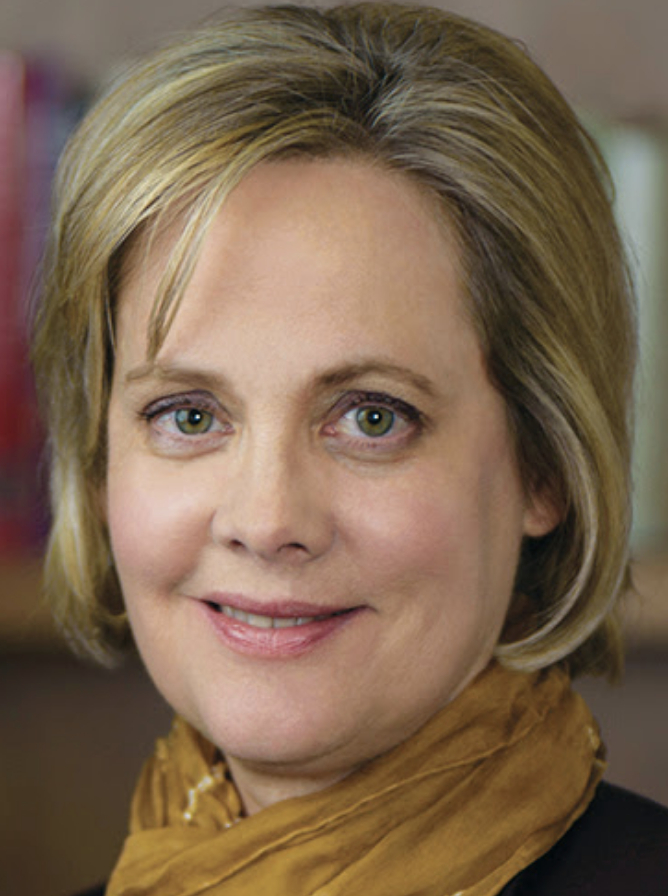
On this date in 1955, Freedom From Religion Foundation co-president Annie Laurie Gaylor was born in Madison, Wisconsin, along with her twin, Ian Stuart Gaylor. With her mother Anne Gaylor, she co-founded FFRF in 1976 as a college student. Her 1977 complaint halted invocations and prayers at University of Wisconsin-Madison graduation ceremonies, ending a 122-year abuse. She earned a journalism degree from UW-Madison in 1980.
Gaylor’s book documenting bible sexism, Woe to the Women: The Bible Tells Me So, was first issued in 1981 and reissued in digital-only form in 2004 but is now out of print. In it Gaylor wrote: “The only true shield standing between women and the bible, that handbook for the subjugation of women, is a secular government. U.S. citizens must wake up to the threat of an encroaching theocracy, and shore up Thomas Jefferson’s ‘wall of separation between church and state.’ ”
She edited and published The Feminist Connection, a regional monthly, from 1980-84, then became editor of Freethought Today, the Foundation’s newspaper, in 1985. She wrote the first book exposing the clergy sexual abuse scandal, Betrayal of Trust: Clergy Abuse of Children (1988), and is editor of the first anthology of women freethinkers, Women Without Superstition: No Gods – No Masters (1997). She is married to Dan Barker, FFRF co-president, and they have one daughter.
“The only life that ought to concern any of us is leaving our planet and our descendants a secure and pleasant future.”
— Gaylor, quoted in Madison Magazine (2007)
Ludovic Kennedy
On this day in 1919, Ludovic Henry Coverly Kennedy, atheist journalist and author, was born to upper-class parents in Edinburgh, Scotland. At age 80, Kennedy (an honorary associate of the National Secular Society) wrote All in the Mind: A Farewell to God, in which he dismissed beliefs on which Christianity was founded as “preposterous.” He was knighted in 1994 by John Major’s government for his services to journalism. Major’s predecessor, Margaret Thatcher, had vetoed Kennedy’s knighthood.
For Kennedy, the “playing fields” of Eton College included a stint in a jazz band. After serving in the Royal Navy in World War II, he attended Christ Church-Oxford before starting work as an investigative reporter. In 1950 he married ballet dancer Moira Shearer, who died in 2006. They had a son and three daughters.
He was known for reexamining cases such as the Lindbergh kidnapping and the murder convictions of Timothy Evans and Derek Bentley and for his role in the abolition of the death penalty in the United Kingdom. Starting in 1953 he edited and introduced the “First Reading” radio series on the BBC. Later he became a news anchor on the public network ITV. He did work for BBC’s “Panorama,” the longest-running current affairs documentary series in the world. It launched in 1953.
He was president and co-founder of the Voluntary Euthanasia Society and in 1990 published Euthanasia: The Case for the Good Death. He died at age 89 of pneumonia in a Salisbury nursing home. (D. 2009)
“In the spring and with the coming of Easter, an old man’s fancy lightly turns to thoughts of gods. I am now 83 pushing 84 and the closer I come to shuffling off this mortal coil, the more mystified I am by Christian belief in the deity they call by the not very original name of God (as if there had never been others).
“All gods from time immemorial are fantasies, created by humans for the welfare of humans and to attempt to explain the seemingly inexplicable. But do we, in the third year of the 21st century of the Common Era and on the springboard of colonising the universe, need such palliatives?
“Wherever one looks there is conflict: Protestants and Catholics in Northern Ireland; Jews, Christians and Muslims in Palestine; Muslims and Hindus in the Indian subcontinent; Christians and Muslims in Nigeria, Indonesia, Saudi Arabia and elsewhere. Is not the case for atheism made?”
— Kennedy in a column titled "Put away childish things," The Guardian (April 17, 2003)
J.M. Robertson
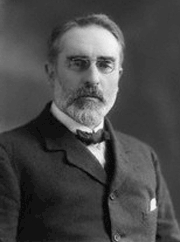
On this date in 1856, John Mackinnon Robertson was born on the Isle of Arran, Scotland. He left school at 13, joined the staff of the Edinburgh Evening News in 1878 and several years later moved to London so he could work on the National Reformer, Charles Bradlaugh‘s publication, which he edited until 1893. That year Robertson founded the Free Review, which he published for two years. He lectured in the United States in 1897-98. In 1900 he traveled to South Africa to report on martial law for the Morning Leader. From 1906-18 he served in Parliament.
Robertson specialized in comparative mythology and believed Jesus never existed. He wrote Christianity and Mythology (1900) and Pagan Christs (1903), still influential works. Other books include Short History of Christianity (1902) and the two-volume Short History of Freethought (1915). His expertise extended to economics, linguistics and politics.
In Man and His Gods (1952), physiologist and science writer Homer W. Smith described Robertson as an “outstanding exponent of rationalism and one of the foremost scholars produced in England in the last six decades.” (D. 1933)
"Petronius was surely right in saying ‘fear made the gods.’ In primitive times fear of the unknown was normal; gratitude to an unknown was impossible."
— Robertson, "Pagan Christs" (1903)
George Seldes
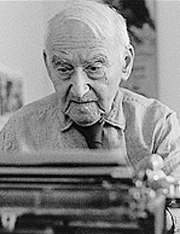
On this date in 1890, crusading journalist Henry George Seldes was born in Alliance, New Jersey, to a freethinking, deistic Russian immigrant father and a Russian immigrant mother who died when George was 6. Emma Goldman and other radicals often stayed in the Seldes spare bedroom in Pittsburgh. Seldes as a cub reporter for the Pittsburgh Leader in 1909 earned $3.50 a week. He became night editor of the Pittsburgh Post five years later and was hired by United Press to report in London in 1916.
Seldes became an accredited war correspondent for the Edward Marshall Syndicate in 1917 in Paris and managing editor of the Army edition of the Chicago Tribune in 1918. He spent a decade reporting in Europe and interviewed Trotsky and Lenin before being expelled from Russia. He was also expelled from Italy for writing about Mussolini. In the 1930s he went to Spain to report on the fascist Gen. Francisco Franco.
Seldes married Helen Larkin Weisman in 1932. They bought a home in Woodstock, Vermont, thanks to a $5,000 loan from neighbor Sinclair Lewis (another journalist neighbor was Dorothy Thompson). Seldes published the newsletter In Fact, devoted to press criticism, from 1940-50. At its peak, circulation was 176,000. Seldes was the first to report the link between cancer and cigarette smoking. He wrote 21 books, including You Can’t Print That! (1929), Can These Things Be! (1931), The Vatican: Yesterday, Today, Tomorrow (1934), Iron, Blood, and Profits: An Exposure of the World-wide Munitions Racket (1934), Sawdust Caesar (about Mussolini, 1935), Freedom of the Press (1935), Lord of the Press (1938), The Catholic Crisis (examining church ties to fascism, 1940) and Witch Hunt (1940), about red-baiting.
At least 20 publishers rejected his anthology The Great Quotations before it saw print. It sold over a million copies in 1961. Witness to a Century (1987), his final book, at age 96, detailed his 80 years in journalism. (The accompanying photo shows him typing at age 98.) Until his death at 104, he was the oldest member of the Freedom From Religion Foundation. The 1996 documentary film “Tell the Truth and Run” featured interviews with Seldes and was nominated for an Academy Award. (D. 1995)
*Note: “The Three SOBs” mentioned in the quote source below were Italian fascist poet Gabriele D’Annunzio, actor Errol Flynn for a 1937 hoax he staged in war-torn Spain to promote his movie, and (“Reader’s Choice”) either of three reactionary journalists who defended Sen. Joe McCarthy: Fulton Lewis Jr., Westbrook Pegler or George Sokolsky.
"And so [my brother] Gilbert and I, brought up without a formal religion, remained throughout our lifetimes just what Father was, freethinkers. And, likewise, doubters and dissenters and perhaps Utopians. Father’s rule had been ‘Question everything, take nothing for granted,’ and I never outlived it, and I would suggest it be made the motto of a world journalists’ association."
— Seldes, "Witness to a Century: Encounters with the Noted, the Notorious, and the Three SOBs" (1987)
Chalmers Roberts
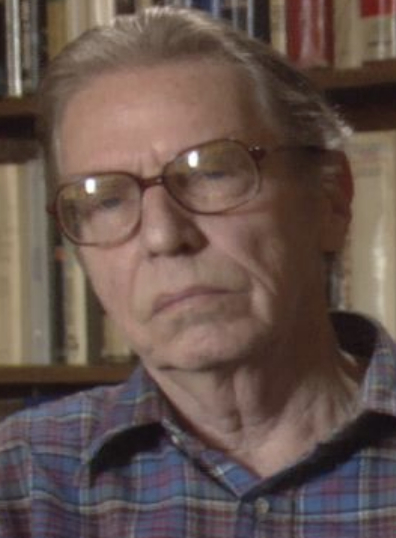
On this date in 1910, Chalmers Roberts was born in Pittsburgh, Pa. He earned a degree from Amherst College in 1933 and later became a journalist for seven newspapers, including the Japan Times in Tokyo in 1938 and the Washington Post in 1949. Roberts was chief diplomatic correspondent of the Post from 1953-71, often with front-page bylines.
He wrote influential articles about the Pentagon Papers, the secret government documents detailing deceptions during the Vietnam War, and was named as a defendant in the case that made it to the U.S. Supreme Court for publishing the documents.
Roberts continued to write columns for the Post until 2004. He wrote five books, including Washington Past and Present (1950), The Nuclear Years: The Arms Race and Arms Control (1970) and his autobiography, First Rough Draft: A Journalist’s Journal of Our Times (1973). In 1941 he married Lois Roberts, who died in 2001. They had three children: David, Patricia and Christopher.
After being diagnosed with congestive heart failure, Roberts chose to refuse potentially lifesaving open-heart surgery. He wrote about his decision in the Post on Aug. 28, 2004, explaining his views on religion and the afterlife: “I agree with Francis Crick, the eminent Cambridge don, the winner of the Nobel Prize for his co-discovery of the double helix, the blueprint of life, who wrote: ‘In the fullness of time, educated people will believe there is no soul independent of the body, and hence no life after death.’ ”
He died at age 94 in Bethesda, Md. (D. 2005)
"I do want to add a final word about the hereafter. I do not believe in it. I think that the religions which promise various after-life scenarios basically invented them to meet the longing for an answer to life's mysteries."
— Roberts, the Washington Post (Aug. 28, 2004)
Larry King
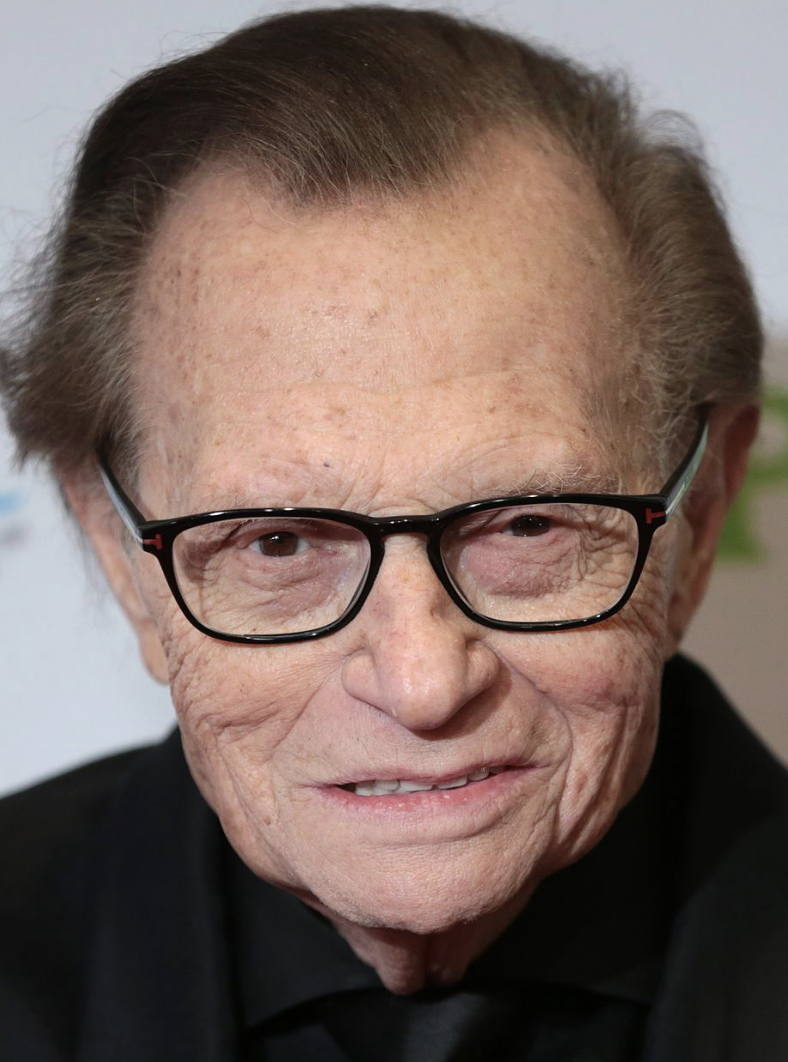
On this date in 1933, TV and radio host Larry King (né Lawrence Harvey Zeiger) was born to Jennie (Gitlitz) and Aaron Zieger. His parents were Russian Orthodox Jews who immigrated to the U.S. from Belarus in the 1930s. King attended public schools, and after his father died at age 47 of a heart attack when Larry was 9, the family had to rely on welfare.
His first broadcasting job was in 1957 at a radio station in Miami Beach, Fla. He started using the name Larry King on air at the behest of management and changed his name legally about two years later. Singer Bobby Darin was his first celebrity interview.
“The Larry King Show” gained national prominence on the Mutual radio network, with the show airing from 1978-94, rising from 28 to over 500 affiliates. “Larry King Live” had started airing on CNN in 1985. Along with those two shows, he wrote a regular column for USA Today from 1982 to 2001. The final edition of “Larry King Live” aired in December 2010 after over 6,000 episodes. During his career, he did more than 60,000 interviews. But he was soon back on the air after co-founding a production company called Ora TV. In 2017 he said he had no intention of ever retiring, despite having had a heart attack and five-bypass surgery in 1987.
The recipient of numerous awards, King in 2002 was named by Talkers magazine as the fourth-greatest radio talk show host of all time (behind Rush Limbaugh, Howard Stern and Don Imus) and the top TV talk host ever.
King was married eight times to seven women, the first when he was 19 in 1952. He married Shawn Southwick twice, though they were estranged and divorcing again when he died at age 87 from sepsis stemming from respiratory failure and renal disease. He had five children, including a son, Larry King Jr., born during his brief second marriage. They didn’t meet until Larry Jr. was in his 30s.
“I’m not a churchgoer. I used to go sometimes with my wife — I don’t go anymore,” King told an interviewer from GQ magazine. (April 30, 2009) “In fact, the more I interviewed religious leaders, the less religious I became. Because they don’t have the answers I need. I don’t get the answer to why. Why is there a Holocaust? And the answer I get is ‘We do not question the ways of the Lord.’ A lot of it — I tend to agree with Bill Maher — is superstitious.” (D. 2021)
PHOTO: King at Celebrity Fight Night XXIII in 2017 in Phoenix; Gage Skidmore photo under CC 3.0.
REASON: Are you still into cryonics?
KING: Yes. I’m putting it in my will. I’ll tell you why. I’m an atheist. Most libertarians should be atheists.— Interview with Reason magazine (April 4, 2015)
Jennifer Michael Hecht
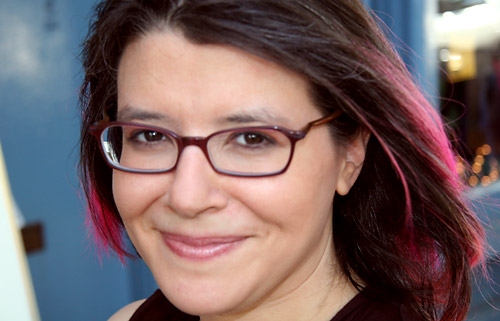
On this date in 1965, poet and historian Jennifer Michael Hecht was born in New York City. She earned a B.A. in history from Adelphi University in New York in 1987 and a Ph.D. in the history of science and European cultural history in 1995 from Columbia University. Her works include The Next Ancient World (2001), for which she was awarded the Poetry Society of America’s Norma Farber First Book Award.
Hecht is known primarily for her historical and philosophical books: Doubt: A History (2003); The End of the Soul: Scientific Modernity, Atheism, and Anthropology in France (2003), The Happiness Myth: Why What We Think Is Right Is Wrong (2007) and Stay: A History of Suicide and the Arguments Against It (2013).
Hecht has written for The New York Times, Washington Post, Boston Globe, Philadelphia Inquirer, Politico, Vox, Poetry and The New Yorker. She holds a Ph.D. in the history of science/European cultural history from Columbia University (1995) and has taught in the MFA program at Columbia University and the New School in New York City. She and her husband, John Chaneski, have two children.
“I’m sort of what I’ll now call a Reagan atheist — came in real early. I was still a pretty young person,” Hecht said during her speech at FFRF’s 32nd annual convention. In her book Doubt: A History (2003), Hecht detailed the extensive history of atheism and religious skepticism, writing, “Doubters have been remarkably productive, for the obvious reason that they have a tendency toward investigation and, also, are often drawn to invest their own days with meaning.” Hecht received FFRF’s 2009 Freethought Heroine Award.
"Almost all the great poets have conversations in their poetry about doubting God, and even go all the way to dismissing. It's such a strong tradition that it's almost amazing that we've missed it."
— Hecht speech at FFRF's 32nd annual convention (Nov. 7, 2009)
Carolyn Hax
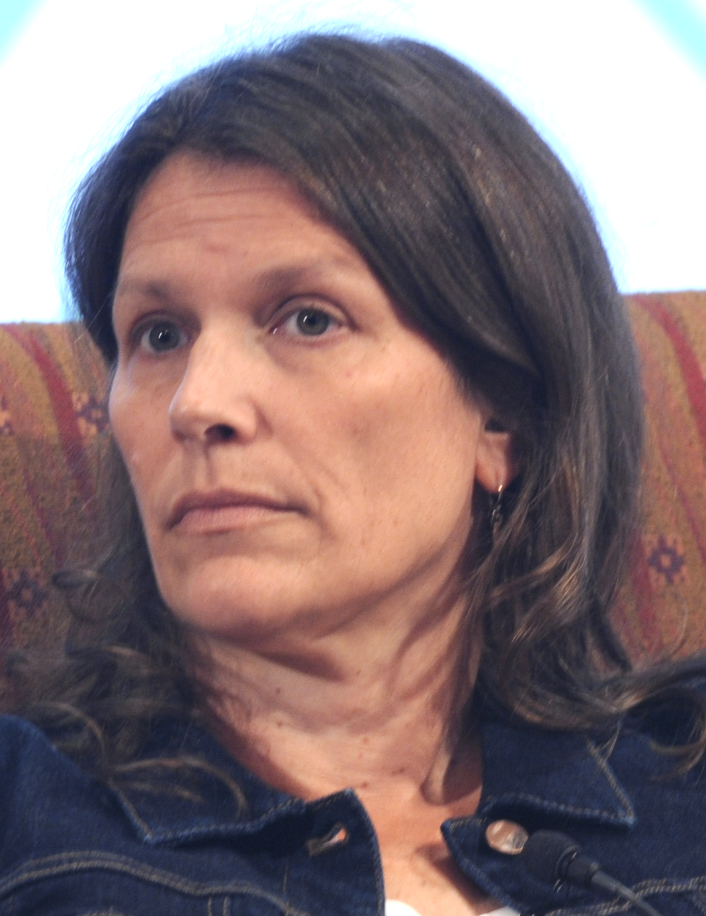
On this date in 1966, author and advice columnist Carolyn Hax was born in Bridgeport, Conn. She attended Harvard University, graduating in 1988 with undergraduate degrees in American history and literature. She then worked as a writer and editor for different publications, including the Army Times and the Washington Post.
In 1997 she started her advice column called “Tell Me About It” for the Washington Post. The “Carolyn Hax” column now runs three days a week in over 200 publications, with the goal of giving honest advice to those who ask for it. She has contributed to several books and published her own book in 2001, Tell Me About It: Lying, Sulking, Getting Fat … and 56 Other Things Not to do While Looking for Love.
Hax, in an interview published by the Washington Post on May 30, 1999, said she bases her advice on the Golden Rule. This maxim was repeated by many cultures, including the ancient Greeks and Chinese, and was first recorded by the ancient Egyptians. “You don’t have to believe in God to see it is the perfect, working guideline for doing unto others,” Hax said.
She was married to her column’s cartoonist, Nick Galifianakis, until 2001. Galifianakis continues to illustrate her columns. She married Ken Ackerman in 2002, and they have three children together.
"Your happy atheist advicemaker proudly presents the serenity prayer:”
— Hax, responding to a reader overwhelmed by her parents' health issues (May 28, 2013)
Heywood C. Broun
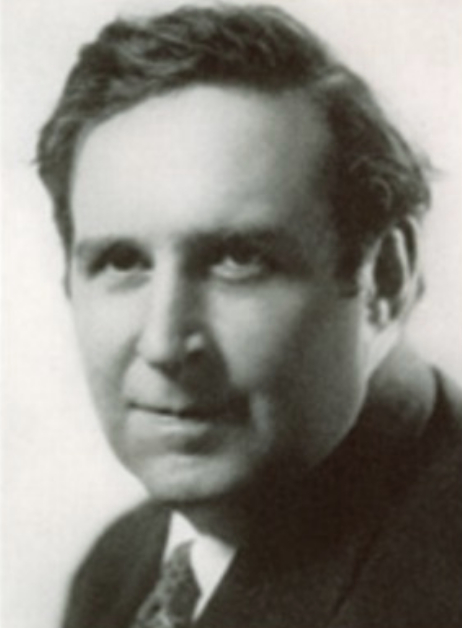
On this date in 1888, journalist Heywood Campbell Broun Jr. was born in Brooklyn, N.Y. He attended Harvard University from 1906-10, where he befriended Walter Lippmann and John Reed. Broun left Harvard 10 credits short of a degree to become a sportswriter for the New York Morning Telegraph. He joined the New York Tribune and covered World War II as its correspondent in France. In 1921 he joined the New York World and debuted his column “It Seems to Me.”
He married feminist writer Ruth Hale in 1917, who a few years later co-founded the Lucy Stone League that advocated letting women keep their maiden names after marriage. They had one son, sportswriter Heywood Hale Broun. After Hale filed for divorce in 1933, he married a widowed chorus girl named Maria Incoronata Fruscella Dooley (stage name Connie Madison) in 1935.
Broun campaigned for the underdog, against censorship and racism and for women’s rights. He supported Eugene V. Debs, Margaret Sanger, D.H. Lawrence and Tom Mooney, a labor leader he believed was framed in a 1916 San Francisco bombing case. Broun resigned when the World refused to run his coverage of the Sacco and Vanzetti case. In 1930 he ran unsuccessfully as a Socialist for Congress. Several years later, the Socialists expelled him for appearing on the platform with members of the Communist Party in support of Mooney and the Scottsboro Nine.
He wrote for The Nation and the New Republic and helped establish the American Newspaper Guild in 1933, which still gives out the Heywood Broun Award for news organizations showing an abiding concern for the underdog. In 1938 he co-founded the weekly tabloid Connecticut Nutmeg, soon renamed Broun’s Nutmeg.
Broun, one of the wits of the Algonquin Round Table, was said to have whispered to Tallulah Bankhead during a Broadway show in which she was starring: “Don’t look now, Tallulah, but your show’s slipping.” He wrote several books and novels, including The A.E.F. (1918), The Boy Grew Older (1922) and a biography, Anthony Comstock: Roundsman of the Lord (1927, with Margaret Leech). Christians Only: A Study in Prejudice (1931, with George Britt), showed how all-encompassing anti-Semitism was in the 1920s, with some Jews even discriminating against other Jews.
Broun played it close to the vest when publicly discussing or writing about his own religious beliefs, but among contemporaries he was widely seen as agnostic. He generally opposed stridency, even from what he called “hard-shelled” atheists: “Nobody talks so constantly about God as those who insist that there is no God.” (“A New Preface to an Old Story,” Broun’s Nutmeg, Aug. 19, 1939)
Near the end of his life, influenced by Bishop Fulton J. Sheen, he converted to Catholicism, although the sincerity of his conversion was questioned by some. He died of pneumonia at age 51 in a hospital in Kingston, N.Y. (D. 1939)
” ‘Virtue is a polite word for fear,’ that is the sort of thing we were writing when we were not empowering some character to say, ‘Honesty is a bedtime fairy story invented for the proletariat,’ or ‘The prodigal gets drunk; the Puritan gets religion.’ "
— Broun, on his Harvard English class for playwrights, "Pieces of Hate and Other Enthusiasms" (1922)
Sarah Vowell
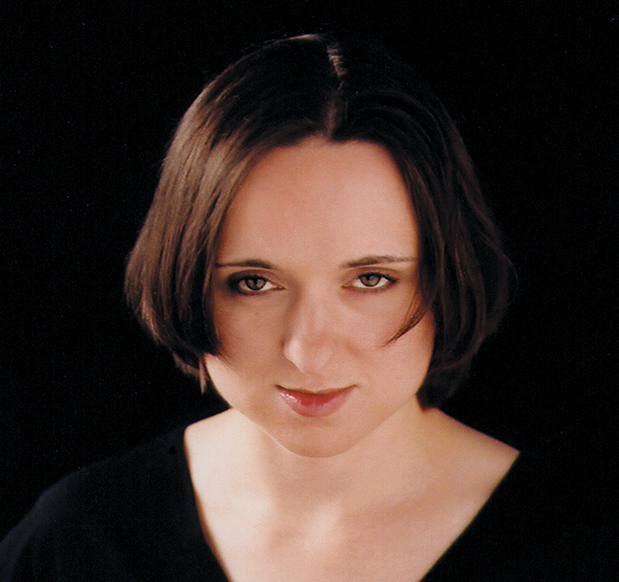
On this date in 1969, Sarah Jane Vowell was born in Muskogee, Okla., and moved with her family, which has Cherokee heritage, to Montana when she was 11. She has a fraternal twin sister, Amy. She majored in modern languages and literatures at Montana State University, where she received her B.A. in 1993 and went on to earn an M.A. in art history at the School of the Art Institute of Chicago. Vowell is the author of seven nonfiction books (as of this writing in 2019) as well as an essayist whose work has been published in The New York Times, Esquire, McSweeney’s and elsewhere.
Vowell has been a frequent contributor to public radio’s “This American Life” since 1996, the show’s first year. She voiced the character Violet in the film “The Incredibles” (2004).
Her books examine American history and the history of religion in America through a combination of road-trip memoir and insightful historical content. Assassination Vacation (2005) detailed presidential assassinations and 19th-century American history, including cults and quasi-religious themes. The Wordy Shipmates (2008) told the story of the Puritan settlement of Massachusetts and touched on the true origins of the idea of religious freedom in America as propounded by Roger Williams, the founder of Rhode Island exiled from Massachusetts Bay for his refusal to adhere to church doctrine.
Unfamiliar Fishes (2011) told the story of the loss of the traditional Hawaiian religion and inhabitants’ conversion to Christianity by missionaries from New England, along with the eventual U.S. conquest instigated by the first missionaries’ descendants in 1895. Lafayette in the Somewhat United States (2015) is an account of the Marquis de Lafayette, the young French aristocrat who became George Washington’s trusted officer and friend and an American celebrity.
She was asked in 2002 by The Onion AV Club “Is There a God?” She answered, “Absolutely not.” In a 2008 New York Times op-ed, she wrote, “I have become just another citizen whose only religion is the freedom of religion and as such I patrol the wall of separation between church and state like some jumpy East German guarding Checkpoint Charlie back before Ronald Reagan single-handedly tore it down.”
Vowell has never married or had children. She is on the advisory board of 826NYC, a nonprofit tutoring and writing center for students aged 6–18 in Brooklyn, N.Y.
PHOTO: By Bennett Miller
“Because I am a culturally Christian atheist the same way my atheist Reform friends are culturally Jewish, I look forward to Martin Luther King's Birthday — when the news momentarily replaces the rants of the faith-based spitfires with clips of what an actually Christlike Christian sounds like.”
— Vowell op-ed, New York Times (Jan. 21, 2008)
Wendy Kaminer
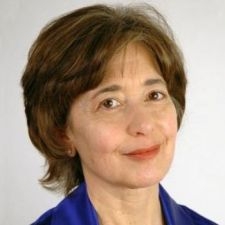
On this date in 1949, Wendy Kaminer was born. She earned her undergraduate degree from Smith College in 1971 and went on to graduate from Boston University Law School in 1975. Kaminer worked as a criminal defense attorney for the New York Legal Aid Society (1977-78), as a staff attorney for the New York City Mayor’s Office and as a professor at Tufts University (1988-90).
In 1991 she switched her focus from law to journalism when she became a contributing editor for The Atlantic, although she often writes about legal issues. She is also a senior correspondent for The American Prospect.
She is the author of eight books, including I’m Dysfunctional, You’re Dysfunctional: The Recovery Movement and Other Self-Help Fashions (1992), Sleeping with Extra-Terrestrials: The Rise of Irrationalism and Perils of Piety (1999) and Free For All: Defending Liberty in America Today (2002). Kaminer was awarded the Extraordinary Merit Media Award from the National Women’s Political Caucus in 1993 and a Guggenheim Fellowship in 1993.
Kaminer is an outspoken agnostic who uses her journalism platform to speak up about atheism and state/church issues. Many of her articles discuss the harm of religion’s influence on politics, civil liberties, psychology and the law. In “The Last Taboo: Why America Needs Atheism,” published in The New Republic in 1996, Kaminer wrote: “Atheists generate about as much sympathy as pedophiles. But, while pedophilia may at least be characterized as a disease, atheism is a choice, a willful rejection of beliefs to which vast majorities of people cling.”
Kaminer was the recipient in 2000 of FFRF’s Freethought Heroine Award. She married Woody Kaplan, a civil liberties activist and chairman of the advisory board of the Secular Coaltion for America in 2001. He died of cancer in 2023.
"I don't care if religious people consider me amoral because I lack their beliefs in God. I do, however, care deeply about efforts to turn religious beliefs into law, and those efforts benefit greatly from the conviction that individually and collectively, we cannot be good without God."
— Kaminer, “No Atheists Need Apply,” The Atlantic (Jan. 13, 2010)
